Rubik’s Cube
description: a 3D combination puzzle invented in 1974 by Hungarian sculptor Ernő Rubik, becoming an international sensation.
154 results

Why Information Grows: The Evolution of Order, From Atoms to Economies
by
Cesar Hidalgo
Published 1 Jun 2015
In a system whose evolution is affected by chance (like in a statistical physics system), getting a series of consecutive moves right is not easy. Think of a Rubik’s cube. A Rubik’s cube illustrates the connection between available paths and entropy perfectly, since you will never be able to solve a Rubik’s cube by chance (even though in your desperation you might try). A Rubik cube has more than 43 quintillion possible states (that is, 43,252,003,274,489,856,000, or 4.3 × 1019), only one of which is perfectly ordered. Also, a Rubik’s cube is a system in which order is not that far away, since it is always possible to solve a Rubik’s cube in twenty moves or less.10 That sounds like a relatively small number, but finding the right twenty moves is not an easy feat.
…
.* Finally, I will connect the multiplicity-of-states definition of entropy with our ability to process information (that is, compute). As we saw in the Rubik’s cube example, information-rich states are hard to find, not only because they are rare but also because there are few paths leading to them. That’s why we equate the ability of someone to solve a Rubik’s cube with a form of intelligence, since those who know how to solve a Rubik’s cube get credit for finding these rare paths (or memorizing the rules to find them). But there are also examples simpler than a Rubik’s cube that we can use to illustrate the connection between the multiplicity of states of a system and computation.
…
Manfred Eigen, From Strange Simplicity to Complex Familiarity: A Treatise on Matter, Information, Life and Thought (Oxford: Oxford University Press, 2013), 310. 10. Tomas Rokicki et al., “The Diameter of the Rubik’s Cube Group Is Twenty,” SIAM Journal on Discrete Mathematics 27, no. 2 (2013): 1082–1105. 11. The first estimation of the number of moves needed to solve a Rubik’s cube was fifty-two, arrived at in July 1981. Then this number gradually decreased, from forty-two in 1990 to twenty-nine in 2000 and twenty-two in 2008, eventually reaching the final number of twenty. See “Mathematics of the Rubik’s Cube,” Ruwix, http://ruwix.com/the-rubiks-cube/mathematics-of-the-rubiks-cube-permutation-group. 12.

Genius Makers: The Mavericks Who Brought A. I. To Google, Facebook, and the World
by
Cade Metz
Published 15 Mar 2021
In the past, many others had built robots that could solve a Rubik’s Cube. Some devices could solve it in less than a second. But this was a new trick. This was a robotic hand that moved like a human hand, not specialized hardware built solely for solving Rubik’s Cubes. Typically, engineers programmed behavior into robots with painstaking precision, spending months defining elaborate rules for each tiny movement. But it would take decades, maybe even centuries, for engineers to individually define each piece of behavior a five-fingered hand would need to solve a Rubik’s Cube. Zaremba and his team had built a system that could learn this behavior on its own.
…
They eventually settled on two: a machine that could beat the world’s best players at a three-dimensional video game called Dota, and a five-fingered robotic hand that could solve the Rubik’s Cube. With their robotic hand, Wojciech Zaremba and his team used the same algorithmic technique as their counterparts at Google. But they moved the training into virtual reality, building a system that learned to solve the Rubik’s Cube through centuries of trial and error in the digital world. Training systems in the physical world, they believed, would be far too expensive and time-consuming as the tasks grew more complex. Like the lab’s effort to master Dota, the Rubik’s Cube project would require a massive technological leap. Both projects were also conspicuous stunts, a way for OpenAI to promote itself as it sought to attract the money and the talent needed to push its research forward.
…
Navy, 15–19 and machine learning, 48 single-layer network design, 36–37 Perceptrons (Minsky and Papert), 25, 33–34, 44, 194 pharmaceutical industry, deep learning’s ability to help the, 181–83, 271 photo manipulation, 209–11 photo-realistic faces, 210 Pichai, Sundar, 216–17, 241, 243, 263–65 Pinker, Steven, 266–67 Pomerleau, Dean, 43–44, 49, 137, 256–57 pornography, 231 Poulson, Jack, 249, 250 Principles of Neurodynamics (Rosenblatt), 22–23 privacy concerns GDPR (General Data Protection Regulation), 248 medical data from the Royal Free NHS Trust shared with DeepMind, 188 Progressive GANs, 210 Project Mack Truck, 138–39 Project Marvin, 83 Project Maven building a system for identifying drone strike targets, 240 contract with Google, 243 Google employee petition against, 247–50 meeting with Google, 240–43 Puchwein, Peter, 284–85 QSAR (quantitative structure-activity relationship), 182–83 Quake III (game), 295–97 Raji, Deborah, 230–32, 236–38 RankBrain, 139 Ranzato, Marc’Aurelio, 89, 124–27 Rashid, Rick, 130 Rebooting AI (Marcus), 270 Redmond, Michael, 174 reinforcement learning, 111–12, 113, 280, 309–10 research expense of recruiting and retaining the talent pool, 132 freely traded building blocks based on Linux, 131 immigration policies’ effect on foreign talent, 207–08 increased investments in, 136, 138–40 open research concept, 127–28, 129–32 Research in Motion (RIM), 75 robotics ABB robotics contest, 283–84 Amazon contest for warehouse picking, 278–79 the Arm Farm, 279–81 Google Brain robotics group, 279–81 learning human movement, 279–81 programming behavior and skills, 277 robots using dreaming to generate pictures and spoken words, 200 Rubik’s Cube demonstration, 276–78, 281, 297–98 use of Covariant’s automation technology in a Berlin warehouse, 284–85 Rosenblatt, Frank criticism of backpropagation, 38 death, 26–27 education and training, 17 Mark I machine development, 18 Perceptron machine demonstration, 15–19 research efforts, 25–26, 34, 36 rivalry with Marvin Minsky, 21–22, 24–25 Rubik’s Cube demonstration at OpenAI, 276–78, 281, 297–98 Rumelhart, David, 37–39, 97 Sabour, Sara, 208, 305 Salakhutdinov, Russ, 63 Schmidhuber, Jürgen, 59–60, 141–42 Schmidt, Eric, 173, 182, 216, 217, 220, 225, 242 Schroepfer, Mike (“Schrep”), 120, 123, 126, 167–69, 254–55, 257, 258–60 Science (journal), 105 Scott, Kevin, 85–86 security concerns adversarial attacks, 212–13 “air gap” systems, 246–47 medical data from the Royal Free NHS Trust shared with DeepMind, 188 Sedol, Lee, 171–72, 174–78, 216 Segal, Adam, 208 Segura, Marc, 284 Sejnowski, Terry, 29, 39–40, 49–50, 65 self-belief, 293–94 self-driving vehicles ALVINN project, 43–44, 53 Chauffeur project, 137–38, 142 China’s ability to develop, 226–27 exaggerated claims about, 271 Qi Lu’s proposal to Microsoft, 197–98 at Tesla, 155–56 using deep learning, 137–38 Sequence to Sequence paper on machine translation, 183 Shanahan, Patrick, 246 Silicon Valley scale, 293–94 self-belief and conviction, importance of, 293, 306–07 venture capital firms, 160–61 Silver, David AlphaGo project, 171, 173–74, 175, 198 artificial intelligence research, 104–05 as cofounder of Elixir, 103 and Demis Hassabis, 101–02, 103, 104–05 Simon, Herbert, 22, 288 Singhal, Amit, 83–84, 139 the Singularity Summit, 107–09, 325–26 SNARC machine, 21 speech recognition and Android smartphones, 77–79 deep learning and neural speech recognition, 67–68 Google Duplex technology, 265–66 Li Deng’s research on, 66–67, 218 speed of technological progress, 60 SRI (Stanford Research Institute), 20, 24 Stanford University, 57, 85 StarCraft (game), 296–97 statistical translation, 55–56 Suleyman, Mustafa (“Moose”), 107, 115–16, 157–58, 186–88, 244, 248, 294–95, 300–01 superintelligence, 105–06, 153, 156–60, 311 Superintelligence: Paths, Dangers, Strategies (Bostrom), 153 surveillance.
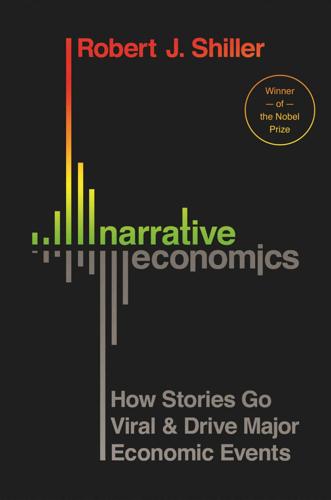
Narrative Economics: How Stories Go Viral and Drive Major Economic Events
by
Robert J. Shiller
Published 14 Oct 2019
Author of the best-selling Gödel, Escher, Bach (1980), Hofstadter was a science writer with a gift for uniting science with art and the humanities. His article presented Rubik’s Cube as representing deep scientific principles. He described connections to quantum mechanics and the rules for combining the subatomic particles called quarks. Few people remember these details today, but they do remember that Rubik’s Cube is somehow impressive. Rubik’s Cube was bigger than the Laffer curve on ProQuest News & Newspapers, but smaller than the Laffer curve on Google Ngrams. Both show similar hump-shaped paths through time.
…
Make it a silly or impossible image. Example: “See” a gigantic key growing in a flowerpot.17 As neuroscience has shown us, long-term memory formation involves many regions of the brain, including visual-image processing regions.18 Rubik’s Cube, Corporate Raiders, and Other Parallel Epidemics Another fad appeared around the same time as the Laffer curve. Rubik’s Cube, invented in 1974 by Ernő Rubik, is a puzzle in the form of a cube-shaped stack of multicolored smaller cubes. As the narrative went, Rubik was a creative Hungarian sculptor and architect whose puzzle captivated the scientific and mathematics community worldwide because it fostered a narrative that it represented some interesting mathematical principles.
…
“Ten years from now, what difference does it make?” replies the clerk. “Well,” says the car-buyer, “the plumber’s coming in the morning.”25 Rubik’s Cube was just a toy, not support for an economic narrative. But Reagan’s lighthearted jokes made for economically powerful entrepreneurial narratives. These new narratives encouraged entrepreneurial spirit and risk taking, and they brought about profound changes in the legal structure of the world’s advanced economies. These examples, the Laffer curve and Rubik’s Cube, are just two of a vast universe of narratives. We need to understand their organizing force. The storage points for all these narratives is the human brain, with its prodigious memory capacity.
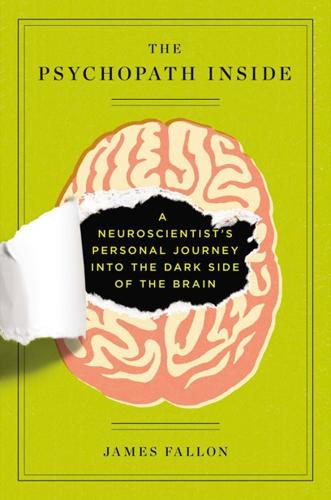
The Psychopath Inside: A Neuroscientist's Personal Journey Into the Dark Side of the Brain
by
James Fallon
Published 30 Oct 2013
Most of us, however, fall somewhere in between these camps and organize the brain into a few hundred parts. I am a splitter, and I like having thousands of specific parts to study. But for the sake of simplicity, especially when teaching or writing a paper, I like to organize the brain into a 3×3×3 “Rubik’s Cube” pattern. This twenty-seven-part brain is as simple as I’m willing to go and still be able to sleep at night without violating Einstein’s first law of simplicity in science: “Everything should be made as simple as possible, but not simpler.” Everyone is familiar with the idea that we have a left brain and a right brain.
…
This medial piece between the left and right hemispheres is also called the limbic lobe, from the word limbus, which means “edge” in Latin, and here refers to a full circle of ancient cortex related to emotion, attention, memory, switching between cognitive and emotional states, and even helping you to see if someone has taken one of your french fries when you weren’t looking. FIGURE 3B: Brain hemispheres. The next slicing of the Rubik’s Cube brain is from front, or anterior, to back, or posterior. The most posterior region of the cortex is dedicated to the visual sensory system, as well as “association” cortices that have functions more complicated than simple seeing or touching or hearing, but rather cognitive tasks such as spatial processing.
…
One tends to adopt the song and rhythm of speech around the time one reaches puberty, but the range and capabilities of individuals vary widely. In the case of Henry Kissinger and his younger brother, Walter, who fled Nazi Germany in 1938, when Henry was sixteen and his brother was fourteen, the elder brother kept his pronounced Frankish accent while Walter sounded very American. In the Rubik’s Cube middle sector of the hemisphere, there are the somatic and motor areas that map the skin senses in the back half of this middle piece, and the map of the areas that control the muscles of the body. Just in front of this motor cortex is the premotor cortex, which is involved in the planning of motor movements and in learning the rules of how we swing a golf club and play the piano.
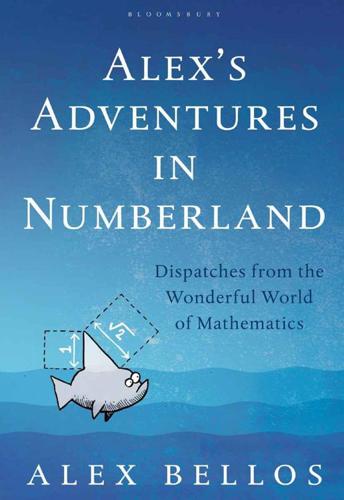
Alex's Adventures in Numberland
by
Alex Bellos
Published 3 Apr 2011
There have been only four international puzzle crazes with a mathematical slant: the tangram, the Fifteen puzzle, the Rubik’s Cube and Sudoku. So far, the Cube has been the most lucrative. More than 300 million have been sold since Ernö Rubik came up with the idea in 1974. Apart from its commercial success, the gaudily coloured cube is a popular-culture evergreen. It is the nonpareil of puzzledom and, unsurprisingly, its presence was felt at the 2008 G4G. A talk on the Rubik’s Cube in four dimensions drew huge rounds of applause. The original Rubik’s Cube is a 3 × 3 × 3 array made up of 26 smaller cubes, or cubies. Each horizontal and vertical ‘slice’ can be rotated independently.
…
Not only was the idea of the cube a stroke of genius, but the way he made the blocks fit together was an outstandingly clever piece of engineering. When you dismantle a Rubik’s Cube there is no separate mechanical device holding it all together – each cubie contains a piece of a central, interlocking sphere. As an object, the cube itself is sexy. It is a Platonic solid, a shape that has had iconic, mystical status since at least the ancient Greeks. The brand name was also a dream: catchy, with delicious assonance and consonance. The Rubik’s Cube had an Eastern exoticism too, not from Asia this time but from Cold War Eastern Europe. It sounded a lot like Sputnik, the original showpiece of Soviet space technology.
…
He can also solve the Rubik’s Cube with his feet – his time of 51.36secs is fourth-best in the world. However, Akkersdijk really must improve his performance at solving the cube one-handed (33rd in the world) and blindfolded (43rd). The rules for blindfolded solving are as follows: the timer starts when the cube is shown to the competitor. He must then study it, and put on a blindfold. When he thinks it is solved he tells the judge to stop the stopwatch. The current record of 48.05secs was set by Ville Seppänen of Finland in 2008. Other speedcubing disciplines include solving the Rubik’s Cube on a rollercoaster, under water, with chopsticks, while idling on a unicycle, and during freefall.

What in God's Name: A Novel
by
Simon Rich
Published 7 Aug 2012
Besides, he was grateful for the chance to finally see God’s office. It had fulfilled all of his expectations. God’s TV was enormous—at least sixty inches—and his remote control was nuts—a shiny, chrome slab that looked like it had been molded to fit his hand. The desk was solid maple and covered with cool executive toys. There was a Rubik’s Cube (which Craig could see was impressively far along) and a gleaming executive ball clicker, the kind that swings for minutes on end when given the slightest push. Craig located the boardroom and, with some difficulty, pulled open the heavy brass door. God strolled in and Craig tried to follow, but a strong hand clamped down on his shoulder.
…
“‘The End Is Near,’ ” he said finally. “‘Repent.’ ” Raoul nodded. “I’ll write it on my sign.” “Great!” God said. “That’s great, Raoul. Take care.” He turned off the television and glanced at his watch. It was more than two hours until his afternoon meeting, and he had absolutely nothing to do. He picked up his Rubik’s Cube and fooled around with it for a bit. He was almost finished with the yellow side, but he couldn’t make any progress without messing up the red side. And he didn’t want to do that—the red side was the only one he’d finished. After a few frustrating minutes, he twisted the cube back the way it had been and tossed it onto his desk.
…
It’s not like he had put the puddle there; puddles were just something that happened when it rained. Honestly, what was he supposed to do? He could say “No more rain,” but that would probably cause even more problems for the humans and make them even angrier. He turned off the computer. Earth was just as frustrating as a Rubik’s Cube. It was impossible to fix something without making another thing even worse. He reached for his beer mug and noticed with mild surprise that it was empty. He cracked open another can and took a giant swig, forgetting about the glass this time. God knew that criticism was part of the job. You couldn’t build something as successful as the world without hearing from some haters.
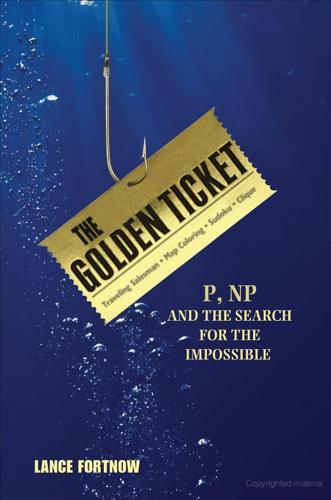
The Golden Ticket: P, NP, and the Search for the Impossible
by
Lance Fortnow
Published 30 Mar 2013
Who would think playing Sudoku, Minesweeper, or Tetris well would show P = NP and solve one of the biggest challenges of our generation? Figure 4-9. Rubik’s Cubes. Photo by Tom van der Zanden How about Rubik’s Cube? Even the 3 × 3 × 3 cube takes a while to learn to solve; imagine how much harder solving larger cubes should be. Actually not. We have efficient algorithms to solve even large Rubik’s Cubes puzzles using a branch of mathematics known as group theory. These algorithms don’t find the absolutely shortest solution, but they always find reasonably short ways to solve the cube from any starting position that can lead to a solution. It’s surprising how easy Rubik’s Cube is to solve, while Tetris, Minesweeper, and Sudoku are hard.
…
, 33–34 one-time pad encryption, 129–30 On the Calculation with Hindu Numerals (al-Khwārizmī), 32 “On the Computational Complexity of Algorithms” (Hartmanis and Stearns), 76 “On the Impossibility of Constructing Minimal Disjunctive Normal Forms for Boolean Functions by Algorithms of a Certain Class” (Zhuravlev), 80 “On the Impossibility of Eliminating Perebor in Solving Some Problems of Circuit Theory” (Yablonsky), 80 OR, in logic, 52–53 OR gates, 79, 114, 114, 116, 116 P (polynomial): circuits size in, 116; efficiency in, 36; examples of, 46; meaning of, ix, 4 pad encryption, 129–30 parallel computing, 155, 156–58 partition into triangles problem, 59 partition puzzle, 4–5, 10 Pass the Rod, 37–38, 38, 39–40, 40, 45–46 “Paths, Trees, and Flowers” (Edmonds), 35–36, 76–77 perebor (Пepeбop), 71, 80 Perelman, Grigori, 7, 12 personalized recommendations, 23, 25 physics, NP problems in, 48, 48 Pippenger, Nicholas, 157 Pitts, Walter, 75 P = NC, 157–58 P = NP: big data and, 159; cryptography and, 129–30; imagined possibilities of, 12–19, 23–27; implications of, ix, 6, 9, 10, 46; importance of question, 46; likelihood of, 9, 28; meaning of, 4; NP-complete problems and, 59; proving, versus P ≠ NP, 120–21; random number generation and, 140; as satisfiability, 54–55; very cozy groups and, 104 P ≠ NP: attempts to prove, 118–21; implications of, ix–x, 46; meaning of, 4; mistakes in proving, 119–21; proving, 46, 57, 109–21, 161–62; very cozy groups and, 104 Poe, Edgar Allan, 124 Poincaré conjecture, 7 poker protocol, 137 polyalphabetic cipher, 124 polytope, 69–70, 70 prime numbers, 67–69, 129 privacy, and P = NP, 26–27 private-key cryptography, 26 probability theory, Kolmogorov and, 81–82, 167 products, in computations, 138 programs: contradictions in, 112; for hand control, 5–6 protein folding, 47–48 protein threading, 48 pseudorandomness, 140 public-key cryptography: factoring in, 140–41; P = NP and, 26, 127; randomness in, 136–37 public randomness, 136 P versus NP: circuit size in, 116; clique circuit computation and, 117; Eastern history of, 78–85; efficiency in, 36; future of, 155–62; Gödel’s description of, 85–86; hardest problems of, 55–57; history of, 6–7; as natural concept, 87; origin of problem, 54–55; paradox approach to, 112–13; parallel computing and, 157; resolving, 161–62; sources for technical formulation, 119; terminology used for, 58–59; Western history of, 72–78 quantum adiabatic systems, 147 quantum annealing, 147 quantum bits (qubits): copying, 148, 152; definition of, 144; dimensions of, 145; entanglement of, 145, 145, 147, 151, 151–52; transporting, 150, 150–53, 151, 152; values of, 145, 145 quantum computers: capabilities of, 9, 143, 146–47; future of, 153–54 quantum cryptography, 130, 148–49 quantum error-correction, 147 quantum states, observing, 146 quantum teleportation, 149–53, 150 randomness: creating, 139–40; public, 136 random sequences, 82–83 Razborov, Alexander, 85, 117–18 reduction, 54 relativity theory, 21 Rivest, Ronald, 127–28 robotic hand, 5–6 rock-paper-scissors, 139, 139 routes, finding shortest, 7–8 RSA cryptography, 127–28, 138 Rubik’s Cube, 64, 64 Rudich, Steven, 118 rule of thumb, 92 Salt, Veruca, 1–2, 157 satisfiability: cliques and, 54, 55; competition for, 96–97; as NP, 54–55 SAT Race, 96–97 Scherbius, Arthur, 124 Scientific American, 149–50 secret key cryptography, 126 security: of computer networks, 127; on Internet, 128–29 sensor data, 158 sentences, 75, 75–76 Seven Bridges of Königsberg puzzle, 38–39, 39 Shamir, Adi, 127–28 Shannon, Claude, 79 shared private keys, 129–30 shipping containers, 160–61 Shor, Peter, 146–47 simplex method, 69 simulations, data from, 158 Sipser, Michael, 117 Six Degrees of Kevin Bacon, 31–32 six degrees of separation, 30–33 Skynet effect, 13 small world phenomenon, 30–33 smart cards, finding key to, 106–7 social networking, and Frenemy relationships, 29 Solomonoff, Ray, 83 Soviet Union: genetics research in, 81; probability theory in, 81, 167 speeches, automated creation of, 24 sports broadcasting, 17–18 Sports Scheduling Group, 16 Stalin, Josef, 81 Stanford University, 126, 139 Stearns, Richard, 76 Steklov Mathematical Institute, 117 Stephenson, Henry and Holly, 16 strategy, and equilibrium states, 49 Sudoku: large games, 60, 60–61, 61; zero-knowledge, 130–36, 131, 132, 133, 134 sums, in computations, 138 Sun Microsystems, 160 Switzerland, 94, 94–95, 95 Symposium on the Complexity of Computer Computations, 78 Symposium on the Theory of Computing (STOC), 52 Tait, Peter, 42 technological innovations, dealing with, 160–61 technology, failure of, 161 teleportation, quantum, 149–53, 150 television, 3-D renderings used by, 17–18 Terminator movies, 13 Tetris, 63, 63 theoretical cybernetics, 79–85 tracking, over Internet, 159–60 Trakhtenbrot, Boris, 83–84 transistors, in circuits, 113 translation, 18, 23 traveling salesman problem: approximation of, 99–100, 100, 101; description of, 2–4, 3; size of problem, 91, 91 Tsinghua University, 12 Turing, Alan, 73–74; in computer science, 112; in Ultra, 125–26; work on Entscheidungs-problem, 49 Turing Award: for Blum, 78; for computational complexity, 76; naming of, 74; for P versus NP, 57, 85; for RSA cryptography, 128 Turing machine, 73, 73–74, 86–87 Turing test, 74 Twitter, 161 Ultra project, 124–25 unique games problem, 104 universal search algorithm, 84 universal search problems, 84–85 University of Chicago, 121 University of Illinois, 12–14 University of Montreal, 148 University of Oxford, 19–20 University of Toronto, 51 University of Washington, 5–6 Unofficial Guide to Disney World (Sehlinger and Testa), 56–57 Urbana algorithm, 12–19, 23–27 U.S.
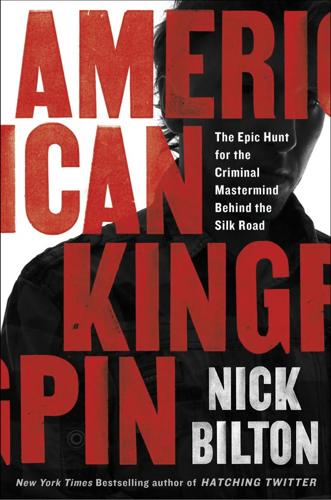
American Kingpin: The Epic Hunt for the Criminal Mastermind Behind the Silk Road
by
Nick Bilton
Published 15 Mar 2017
As he sped up the freeway Gary decided he was done looking for the Dread Pirate Roberts, even if he had already found him. Chapter 54 JARED BECOMES CIRRUS When Jared Der-Yeghiayan was a freshman in high school, his math teacher would walk into class each day with a Rubik’s Cube in hand. Young Jared would watch as the teacher passed the colored square cube around the room, instructing every student to jumble it as much as possible. “If I can solve this Rubik’s Cube in under a minute, you all get homework,” the teacher said to the class each day. “If I can’t, you don’t get any homework.” Sure enough, every single class ended with students trudging home with a complicated math assignment.
…
Sure enough, every single class ended with students trudging home with a complicated math assignment. After witnessing this spectacle several times, Jared was plagued by a desire to figure out how his teacher could always solve the riddle of the cube. He ran out and picked up his own Rubik’s Cube and spent weeks trying to solve the puzzle. With a lot of tenacity and a smidgen of help from the teacher, he was finally able to do the same thing. Over the years, Jared had collected dozens of different Rubik’s Cubes, now scattered all over his home and office. They hung from key chains and fell unexpectedly out of backpacks. To this day Jared had never met a cube he couldn’t solve in less than a minute.
…
Unsurprisingly, Jared’s training officer saw no urgency to a single pill, and it was a week before he even consented to accompany his younger colleague on the “knock-and-talk”—to knock on the door of the person who was supposed to receive the pill and, hopefully, talk with them. That day, as Jared’s government-issued Crown Victoria zigzagged through the North Side of Chicago, the small Rubik’s Cube that hung from his key chain swung back and forth in the opposite direction. His car radio was dialed into sports: the Cubs and White Sox had been eliminated from contention, but the Bears were preparing for an in-division contest against the Lions. Amid the crackle of the radio, he turned onto West Newport Avenue, a long row of two-story limestone buildings split into a dyad of top- and bottom-floor apartments.
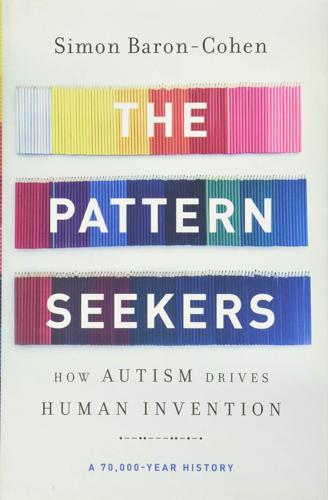
The Pattern Seekers: How Autism Drives Human Invention
by
Simon Baron-Cohen
Published 14 Aug 2020
Greenberg et al. (2015), “Musical preferences are linked to cognitive styles,” PLoS ONE 10(7), e0131151. 31. On autism and the Rubik’s cube, see S. Baron-Cohen et al. (2009), “Talent in autism: Hyper-systemizing, hyper-attention to detail, and sensory hyper-sensitivity,” Proceedings of the Royal Society, Philosophical Transactions: Series B 364, 1377–1383. On Max Park, see J. Rapson (2017), “They said autism meant he’d need life-long care—then he got a Rubik’s cube,” For Every Mum, July 29, foreverymom.com/family-parenting/autism-rubiks-cube-max-park/. On June 18, 2014, we hosted an event in Cambridge Union called “Autism and the Rubik’s Cube: Creating order from chaos,” with Professor Ernesto Rubik (architect and inventor of the cube); see “Event investigates ‘Autism and the Rubik’s Cube: Creating order from chaos,’” Cambridge Network, June 24, 2014, www.cambridgenetwork.co.uk/news/event-investigates-autism-and-the-rubiks-cube. 32.
…
Each new note creates a pattern with the note that precedes it, and the sequence of notes in a riff is another pattern.30 An obvious place where we can see hyper-systemizing is in the world of games. Max Park is autistic, diagnosed at age two with a delay in social and fine motor development. At age ten, he was given his first Rubik’s Cube, and by age fifteen he had won the World Championship in both the 3x3 Rubik’s Cube and the one-handed events. His average solve time was 6.85 seconds with two hands, and 10.31 seconds with one hand. He had systemized the 3x3 cube. At best, solving the cube takes a minimum of twenty-two moves. You can see how rapidly if-and-then reasoning would help solve the cube: “if the red cube with the green side is positioned on the top layer on the right side, and I rotate the top layer anti-clockwise by ninety degrees, then this will complete the top layer as all one color.”
…
On June 18, 2014, we hosted an event in Cambridge Union called “Autism and the Rubik’s Cube: Creating order from chaos,” with Professor Ernesto Rubik (architect and inventor of the cube); see “Event investigates ‘Autism and the Rubik’s Cube: Creating order from chaos,’” Cambridge Network, June 24, 2014, www.cambridgenetwork.co.uk/news/event-investigates-autism-and-the-rubiks-cube. 32. On Kobe Bryant, see A. Tsuji (2016), “Jamal Crawford adds to the list of legendary Kobe Bryant practice stories,” USA Today, January 28. 33. On whether Andy Warhol was autistic, see M. Fitzgerald (2014), “Andy Warhol and Konrad Lorenz: Two persons with Asperger’s syndrome,” professormichaelfitzgerald.eu/andy-warhol-and-konrad-lorenz-two-persons-with-aspergers-syndrome/.
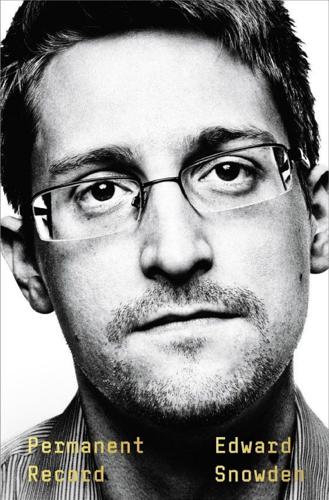
Permanent Record
by
Edward Snowden
Published 16 Sep 2019
Sometimes they would let the suspect take the material out of a SCIF—a Sensitive Compartmented Information Facility, which is a type of building or room shielded against surveillance—and out into the public, where its very presence was a federal crime. I kept imagining a team of FBI agents lying in wait for me—there, out in the public light, just at the far end of the Tunnel. I’d usually try to banter with the guards, and this was where my Rubik’s Cube came in most handy. I was known to the guards and to everybody else at the Tunnel as the Rubik’s Cube guy, because I was always working the cube as I walked down the halls. I got so adept I could even solve it one-handed. It became my totem, my spirit toy, and a distraction device as much for myself as for my coworkers. Most of them thought it was an affectation, or a nerdy conversation starter.
…
I suppose the staff got the message, or didn’t: over the seven Constitution Days I spent in the IC, I don’t think I’d ever known anyone but myself to actually take a copy off the table. Because I love irony almost as much as I love freebies, I’d always take a few—one for myself, and the others to salt across my friends’ workstations. I kept my copy propped against the Rubik’s Cube on my desk, and for a time made a habit of reading it over lunch, trying not to drip grease on “We the People” from one of the cafeteria’s grim slices of elementary-school pizza. I liked reading the Constitution partially because its ideas are great, partially because its prose is good, but really because it freaked out my coworkers.
…
You’ll recognize SD cards if you’ve ever used a digital camera or video camera, or needed more storage on a tablet. They’re tiny little buggers, miracles of nonvolatile flash storage, and—at 20 x 21.5 mm for the mini, 15 x 11 mm for the micro, basically the size of your pinkie fingernail—eminently concealable. You can fit one inside the pried-off square of a Rubik’s Cube, then stick the square back on, and nobody will notice. In other attempts I carried a card in my sock, or, at my most paranoid, in my cheek, so I could swallow it if I had to. Eventually, as I gained confidence, and certainty in my methods of encryption, I’d just keep a card at the bottom of my pocket.
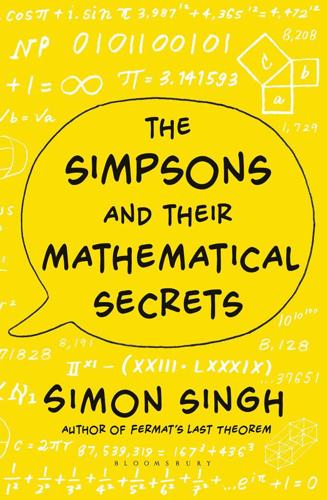
The Simpsons and Their Mathematical Secrets
by
Simon Singh
Published 29 Oct 2013
For example, the world’s most famous puzzle, the Rubik’s Cube, crops up in “Homer Defined” (1991). The episode features a flashback to 1980, the year the cube was first exported from Hungary, when a younger Homer attends a nuclear safety training session. Instead of paying attention to the instructor’s advice on what to do in the event of a meltdown, he is focused on his brand-new cube and cycling through some of the 43,252,003,274,489,856,000 permutations in order to find the solution. Rubik’s Cubes have also appeared in the episodes “Hurricane Neddy” (1996) and “HOMЯ” (2001), and the Rubik’s Cube was invoked as a threat by Moe Szyslak in “Donnie Fatso” (2010).
…
Instead, Marion Anthony D’Amico, head of Springfield’s notorious D’Amico crime family, is calling. Fat Tony, as he is known to his friends (and enemies), simply wants Moe to find out if his Russian friend Yuri Nator is in the bar. Assuming that this is another prank by Bart, Moe makes the mistake of threatening the caller: “I’m gonna chop you into little pieces and make you into a Rubik’s Cube which I will never solve!” A more ancient puzzle appears in “Gone Maggie Gone” (2009), an episode that is partly a parody of Dan Brown’s novel The Da Vinci Code. The storyline begins with a total solar eclipse, ends with the discovery of the jewel of St. Teresa of Avila, and revolves around the false belief that Maggie is the new messiah.

Rule of the Robots: How Artificial Intelligence Will Transform Everything
by
Martin Ford
Published 13 Sep 2021
One of the highest-profile demonstrations came from OpenAI, when in October 2019, it announced that it had created a system consisting of two integrated deep neural networks that enabled a robotic hand to solve a Rubik’s Cube.7 The system was trained using high-speed simulation and succeeded only after the equivalent of about 10,000 years of reinforcement learning. Solving a Rubik’s Cube with one hand is not at all easy even for humans. Despite the company’s claim that it had achieved something “close to human-level dexterity,” it turned out that it wasn’t easy for OpenAI’s system either: the robotic hand dropped the cube in eight out of ten attempts.8 Still, initiatives like this represent real progress, and as we will see, in many industrial and commercial environments, improving robotic dexterity will begin to have a significant impact within the next few years.
…
Mark Gurman and Brad Stone, “Amazon is said to be working on another big bet: Home robots,” Bloomberg, April 23, 2018, www.bloomberg.com/news/articles/2018-04-23/amazon-is-said-to-be-working-on-another-big-bet-home-robots. 6. Martin Ford, Interview with Rodney Brooks, in Architects of Intelligence: The Truth about AI from the People Building It, Packt Publishing, 2018, p. 432. 7. “Solving Rubik’s Cube with a robot hand,” OpenAI, October 15, 2019, openai.com/blog/solving-rubiks-cube/. (Includes videos.) 8. Will Knight, “Why solving a Rubik’s Cube does not signal robot supremacy,” Wired, October 16, 2019, www.wired.com/story/why-solving-rubiks-cube-not-signal-robot-supremacy/. 9. Noam Scheiber, “Inside an Amazon warehouse, robots’ ways rub off on humans,” New York Times, July 3, 2019, www.nytimes.com/2019/07/03/business/economy/amazon-warehouse-labor-robots.html. 10.

The Snowden Files: The Inside Story of the World's Most Wanted Man
by
Luke Harding
Published 7 Feb 2014
She had been a matchmaker, the first to point Greenwald in the ghost’s direction. The two journalists were given meticulous instructions. They were to meet in a less-trafficked, but not entirely obscure, part of the hotel, next to a large plastic alligator. They would swap pre-agreed phrases. The source would carry a Rubik’s cube. Oh, and his name was Edward Snowden. It appeared the mystery interlocutor was an experienced spy. Perhaps one with a flair for the dramatic. Everything Greenwald knew about him pointed in one direction: that he was a grizzled veteran of the intelligence community. ‘I thought he must be a pretty senior bureaucrat,’ Greenwald says.
…
Greenwald and Poitras came back. They waited for a second time. And then they saw him – a pale, spindle-limbed, nervous, preposterously young man. In Greenwald’s shocked view, he was barely old enough to shave. He was dressed in a white T-shirt and jeans. In his right hand he was carrying a scrambled Rubik’s cube. Had there been a mistake? ‘He looked like he was 23. I was completely discombobulated. None of it made sense,’ Greenwald says. The young man – if indeed he were the source – had sent encrypted instructions as to how the initial verification would proceed: GREENWALD: What time does the restaurant open?
…
His co-workers assumed the sweatshirt, sold by the Electronic Frontier Foundation, was a joke. There were further hints of a non-conformist personality. Snowden kept a copy of the constitution on his desk. He flourished it when he wanted to argue against NSA activities he felt violated it. He wandered the halls carrying a Rubik’s cube. He also cared about his colleagues, leaving small gifts on their desks. He almost lost his job sticking up for one co-worker who was being disciplined. The RSOC where Snowden worked is just one of several military installations in the area. Displays of US power abound. A giant satellite dish peeks from a hillside.
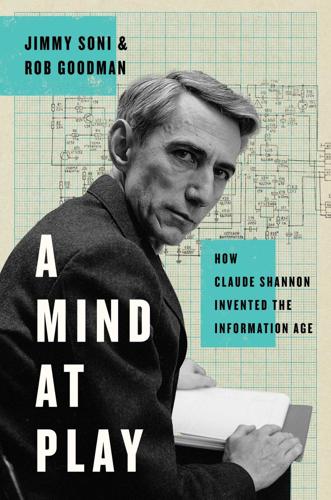
A Mind at Play: How Claude Shannon Invented the Information Age
by
Jimmy Soni
and
Rob Goodman
Published 17 Jul 2017
Ingenious though it might have been, it caused Shannon’s assistant, Charlie Manning, to fear for his safety—and to applaud when he witnessed the first successful ride.) There was the chairlift that took surprised guests down from the house’s porch to the edge of the lake. A machine that solved Rubik’s cubes. Chess-playing machines. Handmade robots, big and small. Shannon’s mind, it seems, was finally free to bring its most outlandish ideas to mechanical life. Looking back, Shannon summed it all up as happily pointless: “I’ve always pursued my interests without much regard to financial value or value to the world.
…
Asked what sort of information theory was best for investing, Shannon joked: “Inside information.” 28 * * * * * * A Gadgeteer’s Paradise Many of Shannon’s off-the-clock creations were whimsical—a machine that made sarcastic remarks, for instance, or the Roman numeral calculator. Still others showed a flair for the dramatic and dazzling: the trumpet that spit flames or the machine that solved Rubik’s cubes. Still other devices he built anticipated real technological innovations by more than a generation. One in particular stands out, not just because it was so far ahead of its time, but because of just how close it came to landing Shannon in trouble with the law—and the mob. Long before the Apple Watch or the Fitbit, what was arguably the world’s first wearable computer was conceived by Ed Thorp, then a little-known graduate student in physics at the University of California, Los Angeles.
…
I have come to two conclusions recently: 1) I am a better poet than scientist. 2) Scientific American should have a poetry column. You may disagree with both of these, but I enclose “A Rubric on Rubik Cubics” for you. Sincerely, Claude E. Shannon P.S. I am still working on the juggling paper. What followed was a seventy-line poem on the subject of Rubik’s cubes, “sung to ‘Ta-Ra-Ra! Boom-De-Ay!’ (with an eight bar chorus)” and complete with footnotes. And it was clear from the rhyme and rhythm that the author had spent time playing with the words on his tongue, rearranging them in his head, singing them aloud to himself. The project was seriously unserious.

The Perfect Bet: How Science and Math Are Taking the Luck Out of Gambling
by
Adam Kucharski
Published 23 Feb 2016
If a message contained more realistic letter pairings than the previous guess, Coram stuck with it for the next go. If the message wasn’t as realistic, he would usually switch back. But occasionally he stuck with a less plausible cipher. It’s a bit like solving a Rubik’s Cube. Sometimes the quickest route to the solution involves a step that at first glance takes you in the wrong direction. And, like a Rubik’s Cube, it might be impossible to find the perfect arrangement by only taking steps that improve things. The idea of combining the power of the Monte Carlo method with Markov’s memory property originated at Los Alamos. When Nick Metropolis first joined the team in 1943, he’d worked on the problem that had also puzzled Poincaré and Borel: how to understand the interactions between individual molecules.
…
165–166, 167, 171, 190 limitations of, 190 memory and, 180–181 newsfeeds and, 122, 133–134 in poker, 135–136, 149–150, 151, 153, 154, 161, 163, 167–168, 172, 173, 175, 176–177, 182, 184, 185–189, 190, 192–196, 212, 217 rock-paper-scissors and, 178, 180–181 stock/financial markets and, 113, 115, 117–120, 122, 123–124, 129–130, 131–132 teaching themselves, 151, 176–177, 190 training, 155, 168, 174, 175, 176, 188 vulnerabilities in using, 118–119 rock-paper-scissors, 142–143, 178, 180–181 roll downs, 29–32, 33 rollovers, 29, 33–34, 204 roulette, 1, 197 bias in, 6, 7 control over events in, 199 evolution of successful strategies in, 21–22, 208 factors restricting scientific betting in, 22 fading of data availability limitations in, 73 gambling law and, 200 and lotteries, biased view of, 98 and luck, 202 and the Monte Carlo fallacy, 6, 200 randomness and predictions in, 2, 3–4, 5–8, 9, 10–11, 12–13, 14, 15–20, 21–22, 38, 124, 127, 162, 178–179, 202, 210–211, 212, 218 scientific idea inspired by, 217 spin stages, 16 university courses studying, 215 Roulston, Mark, 204 Rubik’s Cube, 63 Rubner, Oliver, 78 Rugby World Cup, 84 rule-based approaches, 149, 151, 153, 176 Rutter, Brad, 165–166 S&P 500, 121 sabermetrics, 209 Salganik, Matthew, 203 San Francisco Giants, 88 Sandholm, Tuomas, 167, 184, 189, 212 scandals, 90 Schaeffer, Jonathan, 154, 155, 156, 158, 160, 167, 168, 177, 190 Science (journal), 160, 188 scouting, 105 scratchcards, 26–28 screen scraping, 86 “Searching for Positive Returns at the Track” (Bolton and Chapman), 46 Securities and Exchange Commission (SEC), 130 security casino, 2, 20, 21, 22, 40, 73, 197, 213 online, 195 Selbee, Gerald, 30, 33 “sensitive dependence on initial conditions,” 9, 10 Shannon, Claude, 11–12, 12–13, 14, 15 sharps, 102, 107 Shaw, Robert, 14, 22 short stacking strategy, 193 shuffling cards.

The Optimist: Sam Altman, OpenAI, and the Race to Invent the Future
by
Keach Hagey
Published 19 May 2025
McGrew had volunteered for a different OpenAI project, led by Wojciech Zaremba, that was trying to make a robot hand solve a Rubik’s Cube in simulation. “We’d been struggling to make the robot hand work,” McGrew said. After the success of the Dota project, Zaremba asked Jakub Pachocki, who had been the research lead on the Dota team, to apply the same technique to the robot hand. “And immediately, it went from a two-fingered claw, barely being able to grasp a ball, to the fully five-fingered hand—lots and lots of joints, I think twenty-five joints—being able to grab and manipulate an object. And not too long after that, in a matter of weeks, we were actually able to solve the Rubik’s Cube,” McGrew said.
…
Louis, 27 rent strikes, 27 slum clearance, 26, 34 tax credits, 22, 34–35, 53 universal basic income (UBI) and, 12–14, 194, 205, 256 AGI (artificial general intelligence), see AI (artificial intelligence) “agile” method of software development, 127 aging, the fight against, see immortality AI (artificial intelligence) belief we’re living in a simulation created by, 17 competitive arms race in, 9, 166, 211, 233, 267, 270, 312–14 exacerbating the problem of affordable housing, 254–56, 302 existential risk from, 4–6, 141, 144–45, 167–68, 177, 190, 300 game theory, 166, 285 generative AI, 1, 3, 9, 219, 221, 270 the goal of artificial general intelligence (AGI), 3, 5–10, 12–14, 133, 146–47, 170, 181, 189–90, 192, 198–200, 208, 211, 222–26, 230, 233, 237, 245, 287, 304–5 “godfathers of AI,” 188, 312 large carbon footprint of, 252 “Manhattan Project” for AI, 8, 145, 147, 219 national security implications of AI, 166, 267, 285 neural network–based AI, 147, 164, 176, 179–82, 190–93, 219, 221, 243, 314 toward the singularity, 140–42, 144–45, 168, 199–200, 305 “Sky,” an AI voice, 307–8 the three tribes of humans involved in AI (research, safety, and policy), 208–9, 276 “weights” in, 181 “wrappers” around, 278–79 see also AI research/training; AI safety; chatbots; OpenAI AI Doomer Industrial Complex, 299 AI Dungeon (video game), 247–48, 254–55 “AI Principles,” 5 AI research/training, 5, 143–45, 167–71, 177–88, 207–9, 305–6 backpropagation and, 179, 181 bias encoded in AI, 252 chess, 67, 151, 145–46, 191, 215–16 “deep learning,” 146–47 dialog as method of alignment, 265 diffusion model trained by adding digital “noise,” 262–63 “few shot” learning, 244 Go (game), 191–92, 216–17 going from “agent” to “transformer,” 218–21, 265 going from “training” to “alignment,” 8, 264–66, 276, 284, 305–6 ImageNet competition, 182, 184 the issue of Books1 and Books2, 244 large language models (LLMs), 16–17, 218, 221, 244–46, 252–53, 270–71, 275 learning means AIs have souls, 179 machine translation, 168, 219, 245 neural networks, 147, 164, 176, 179–82, 190–93, 219, 221, 243, 314 parse trees, 174 passing the bar exam, 3, 272 reinforcement learning, 147, 185, 191–93, 264, 265, 284 Rubik’s cube–solving robot hand, 218 sentiment neuron, 218 “sequence to sequence” learning, 178 software engineers and AI researchers, 191, 194 Test of Time Award, 305 the “Turing test,” 173–74 “value-lock,” 252 “zero-shot” responses, 220–21 see also video games AI safety, 2, 4–5, 8–9, 165–67 Asilomar AI Principles, 208, 211, 213, 233–34 Deployment Safety Board (DSB) at OpenAI, 279–80, 287 Elon Musk as an AI doomer, 2, 5, 163, 167–72, 214–15, 273–74 existential risk from AI, 4–6, 141, 144–45, 167–68, 177, 190, 300 how AI could go wrong, 7–8, 143–44, 147, 154 moral balancing act between progress and safety, 135 national security implications of AI, 166, 267, 285 parable of the paperclip-making AI, 5, 143–44, 164 pedophilia and, 254 Puerto Rico conference on AI safety (2015), 167–70, 207, 211 the Stochastic Parrot critique of AI, 252–53 AI Superpowers (Lee), 267 AIDS crisis, 33, 43, 49 AIM (AOL Instant Messenger), 16, 50, 76, 162 Airbnb, 4, 123, 139, 150, 152,158, 263, 274, 292 Akin Grump Strauss Hauer & Feld law firm, 300 Alberta, Tim, 297 Alcor Life Extension Foundation, Scottsdale, AZ, 141 Alexander, Scott, 143, 165–66 “AlexNet” (Hinton), 178, 182, 266 “Algernon,” 140–41, see Yudkowsky, Eliezer Alinsky, Saul, 22, 40 Alito, Samuel, Jr., 52 Allen & Company investment bank, 117, 229, 263, 266 Allston Trading, 157 Alphabet, 194, 271 AlphaGo, 192, 217 Alt Capital, 311 Altman, Annie (Sam’s sister), 15, 36, 40–43, 134, 201–2, 226–28, 248–50, 281–82, 295 allegations against Sam, 261–62 as an escort and on OnlyFans, 249, 261–62, 281 after Jerry Altman’s death, 311–12 living on the Big Island of Hawaii, 227, 250, 311–12 Altman, Birdie, 23–25 Altman family, 15–16 Alt Capital, 311 American Millinery Company, 31 during Covid, 248–50 family therapy sessions, 249 living in Atlanta, 23 moving to Clayton outside St.
…
Louis, 27 Puck (magazine), 297–98 Puerto Rico conference on AI safety (2015), 167–70, 207, 211 Qualcomm subsidiary, 120 Quora, 220, 234, 278 race and racism antisemitism in chatbots, 270 first Black mayor of Chicago, 21–22, 33, 37 Latino people and communities, 21, 35 racism among tech bros, 164–65 redlining, racially restrictive covenants, and slum clearance, 22, 26–27, 29, 40 white flight, 22, 26, 32 see also affordable housing; Black people and communities Radford, Alec, 218–21, 241–43 Radiate (formerly Viendo), 76, 77–82, 85, 88–90, 93–94, 96–101 Raimondo, Gina, 273 Rain Neuromorphics AI chip startup, 232 Rainert, Alex, 118 Ralston, Geoff, 170, 235–36 Ramsay, Mike, 121–22 RAND Corporation, 267, 299, 300, 301 Rap Genius (later Genius), 133 Rashid Al Maktoum, Maktoum bin Mohammed bin, 274 “rationalism,” 143, 176, 210, 212, 225, 264 reality distortion field (RDF), 61 Rechter, Joe, 27 Reconstruction, 26 recurrent neural networks (RNNs), 219 Recurse Center, 176 Reddit, 70, 76, 81, 160–63, 171, 203, 218, 241, 251–52 Reed Hastings, 204 Reform Judaism, 15–16, 24, 44, 31, 43, 227 reinforcement learning, 147, 185, 191–93, 264, 265, 284 Renewing Cities (Gittell), 35 rent strikes, 27 Republican Party, 21, 203, 207, 266, 278 RescueTime time-tracking app, 245 Resident Evil (video game), 97 Retro Biosciences, 257, 259 Reynolds, Malvina, 162 Rhodes, Elizabeth, 195 “RIP Good Times” deck, 117, 123 Rippling (startup), 250 Rizzo, Frank, 28 Roberts, Steve, 42–43, 53–54, 59 Roble, Jim, 202 Roedinger, Kurt, 46–47, 51–53 Rolling Stone article alleged gang rape at the University of Virginia, 204 Roosevelt, Theodore, 46 Rosewood resort, Menlo Park, CA, 177, 183 Ross, Blake, 56, 63 Rostenkowski, Dan, 34–35 Rowghani, Ali, 3, 158–59 RSS-feed format, 63 Rubik’s cube–solving robot hand, 218 Rusenko, David, 157 Russell, Stewart, 305–6 Russia, 23, 27n Russian Hill neighborhood of San Francisco, 86, 260, 293, 315 Rutkowski, Greg, 263 Ryan, Jim, 104 Sacks, David, 139–40 Safari web browser, 111 SAFE (Simple Agreement for Future Equity) convertible notes, 94–95 Safe Superintelligence Inc.
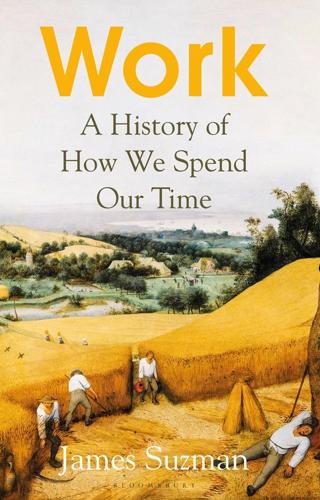
Work: A History of How We Spend Our Time
by
James Suzman
Published 2 Sep 2020
The problem is that there are vastly more ways for the rooms to be messy than there are for them to be tidy, so the chances are hugely in favour of their rooms being messy until a parent demands they do the work – and so expend the energy necessary – to restore their rooms to an acceptably low state of entropy. Even if there are many orders of magnitude simpler than a child’s bedroom, the now venerable Rubik’s cube gives us a sense of the mathematical scales involved. This puzzle, with its six different-coloured faces made up of nine squares and organised on a fixed central pivot that makes it possible to rotate any one of the faces independently of the others and so mix up the coloured squares, has 43,252,003,274,489,856,000 possible unsolved states and only one solved state.
…
Notes INTRODUCTION 1Adam Smith, An Inquiry into the Nature and Causes of the Wealth of Nations, Metalibri, Lausanne, 2007 (1776), p. 12, https://www.ibiblio.org/ml/libri/s/SmithA_WealthNations_p.pdf. 2Oscar Wilde, ‘The Soul of Man Under Socialism’, The Collected Works of Oscar Wilde, Wordsworth Library Collection, London, 2007, p. 1051. CHAPTER 1 1Gaspard-Gustave Coriolis, Du calcul de l’effet des machines, Carilian-Goeury, Paris, 1829. 2Pierre Perrot, A to Z of Thermodynamics, Oxford University Press, 1998. 3‘The Mathematics of the Rubik’s Cube’, Introduction to Group Theory and Permutation Puzzles, 17 March 2009, http://web.mit.edu/sp.268/www/rubik.pdf. 4Peter Schuster, ‘Boltzmann and Evolution: Some Basic Questions of Biology seen with Atomistic Glasses’, in G. Gallavotti, W. L. Reiter and J. Yngvason (eds), Boltzmann’s Legacy (ESI Lectures in Mathematics and Physics), European Mathematical Society, Zurich, 2007, pp. 217–41. 5Erwin Schrödinger, What is life?
…
‘If you ask me about my innermost conviction whether our century will be called the century of iron or the century of steam or electricity,’ Boltzmann announced to his audience, ‘I answer without hesitation: it will be called the century of the mechanical view of nature, the century of Darwin.’ Even if there are many orders of magnitude simpler than a child’s bedroom, the now venerable Rubik’s cube gives us a sense of the mathematical scales involved. This puzzle, with its six different-coloured faces made up of nine squares and organised on a fixed central pivot that makes it possible to rotate any one of the faces independently of the others and so mix up the coloured squares, has 43,252,003,274,489,856,000 possible unsolved states and only one solved state.
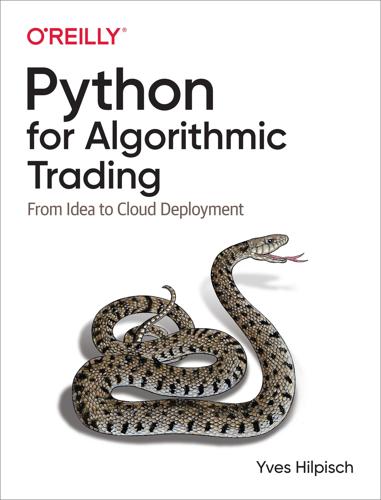
Python for Algorithmic Trading: From Idea to Cloud Deployment
by
Yves Hilpisch
Published 8 Dec 2020
October 2016. 2 For details, see Hilpisch (2018, ch. 12). 3 For example, list objects are not only mutable, which means that they can be changed in size, but they can also contain almost any other kind of Python object, like int, float, tuple objects or list objects themselves. 4 See The Mathematics of the Rubik’s Cube or Algorithms for Solving Rubik’s Cube. 5 See Hilpisch (2015) for a detailed analysis of delta hedging strategies for European and American options using Python. 6 See the book by Lewis (2015) for a non-technical introduction to HFT. 7 Source: “66% of Fund Managers Can’t Match S&P Results.” USA Today, March 14, 2016. 8 Annualized performance (above the short-term interest rate) and risk measures for hedge fund categories comprising a total of 9,000 hedge funds over the period from June 1996 to December 2014. 9 See the book by Kissel (2013) for an overview of topics related to algorithmic trading, the book by Chan (2013) for an in-depth discussion of momentum and mean-reversion strategies, or the book by Narang (2013) for a coverage of quantitative and HFT trading in general.
…
Algorithmic Trading The term algorithmic trading is neither uniquely nor universally defined. On a rather basic level, it refers to the trading of financial instruments based on some formal algorithm. An algorithm is a set of operations (mathematical, technical) to be conducted in a certain sequence to achieve a certain goal. For example, there are mathematical algorithms to solve a Rubik’s Cube.4 Such an algorithm can solve the problem at hand via a step-by-step procedure, often perfectly. Another example is algorithms for finding the root(s) of an equation if it (they) exist(s) at all. In that sense, the objective of a mathematical algorithm is often well specified and an optimal solution is often expected.

Green Swans: The Coming Boom in Regenerative Capitalism
by
John Elkington
Published 6 Apr 2020
Eccles, Visiting Professor of Management Practice, Saïd Business School University of Oxford, Founding Chairman of the Sustainability Accounting Standards Board (SASB) and one of the founders of the International Integrated Reporting Council (IIRC) “Sustainable business legend John Elkington rightly declares that we have painted ourselves into ‘the mother of all corners.’ In Green Swans, his most important book yet, one can feel John’s clever mind and earnest soul wrestling with the ultimate Rubik’s Cube puzzle of all human history: How to transform capitalism to an economic system that is actually regenerative, like all other living systems on this planet. An essential guide for business leaders and a profound yet realistic dose of hope for the challenging ‘Exponential Twenties’ that lie ahead.”
…
He argues that the Anthropocene is already coming to an end after just 300 years.41 In the Novacene, which he concludes is already beginning, new beings will emerge from existing artificial intelligence systems.42 They will think ten thousand times faster than we do and will regard humans as we regard plants, as desperately slow creatures. Already we hear that AI can solve Rubik’s Cube quicker than we can click our fingers, with no advance knowledge of how the puzzle works.43 And even that may seem like child’s play for future AI systems. Still, Lovelock believes, this need not be the cruel, violent machine takeover of the planet imagined by many sci-fi writers and filmmakers.
…
See also: https://www.greenbiz.com/article/can-sustainable-companies-get-lower-cost-capital. 37.https://www.wbcsd.org/Overview/About-us/Vision2050 38.Julian Hill-Landolt, personal communication, June 17, 2019. 39.I had first read his writing in New Scientist in 1975 when I was also writing for the magazine. 40.https://en.wikipedia.org/wiki/Electron_capture_detector 41.Based on the sort of timings laid out in The Human Planet. 42.James Lovelock, Novacene: The Coming Age of Hyperintelligence. London: Penguin Random House, 2019. See also: https://www.penguin.co.uk/books/313/313880/novacene/9780241399361.html. 43.Tom Knowles, “AI solves Rubik’s Cube Quicker Than You Can Click Your Fingers,” The Times, July 18, 2019. 44.https://en.wikipedia.org/wiki/Whole_Earth_Catalog 45.https://reviverestore.org 46.https://reviverestore.org/horseshoe-crab/ 47.Ryan Phelan, personal communication, July 31, 2019. 48.https://www.hakaimagazine.com/news/synthetic-crab-blood-is-good-for-the-birds/ 49.https://reviverestore.org/projects/woolly-mammoth/ 50.John Thornhill, “The Return of the Luddites,” Financial Times, July 13-14, 2019. 51.John Elkington, “Saving the Planet from Ecological Disaster Is a $12 Trillion Opportunity,” Harvard Business Review, May 4, 2017.

Masters of Scale: Surprising Truths From the World's Most Successful Entrepreneurs
by
Reid Hoffman
,
June Cohen
and
Deron Triff
Published 14 Oct 2021
When a new job opens, they’ll refer their friends. When you need partnerships, they’ll open doors. The powerful connection of that initial group of hires shouldn’t be underestimated. If that initial cohort isn’t right—or if it isn’t diverse—it can be extraordinarily difficult to correct later. Cognitive diversity: Solving the Rubik’s Cube With all the dos and don’ts, and all the questions and techniques designed to ferret out just the right qualities in a potential hire, it may seem as if the goal is to identify the ideal employee and then replicate that process until you’ve assembled an army of identically ideal employees.
…
It’s about all dimensions of human experience and personality—age, height, language, sexual orientation, religion, background, education, personality type. You should think about extroverts and introverts; people who are open-ended versus people who are precise. “It’s also about, you’ve got X number of optimists—how many pessimists do you have?” Sallie says. “It’s almost like solving a Rubik’s Cube.” * * * — Caterina Fake, tech entrepreneur and co-founder of Yes VC, believes the work begins on day one. “If you have women in the founding team, if you have African Americans, if your team includes Latinos, it will continue to naturally evolve that way.” Diverse people will tend to bring in other diverse people, and the process will be more organic.
…
Think of early hires as your co-founders Your early hires will set the tone for your company. Early on, define the human qualities that are central to your culture (as well as the qualities you don’t want) and then use those as guides when interviewing people for cultural fit. Solve the Rubik’s Cube of cognitive diversity Without cognitive diversity, you will miss opportunities. You will perpetuate fallacies. And you will be lost in a monotonous haze. 5 Growing Fast, Growing Slow It was opening day for Tory Burch’s startup—her big opportunity to debut her new clothing line at her new store during New York Fashion Week.
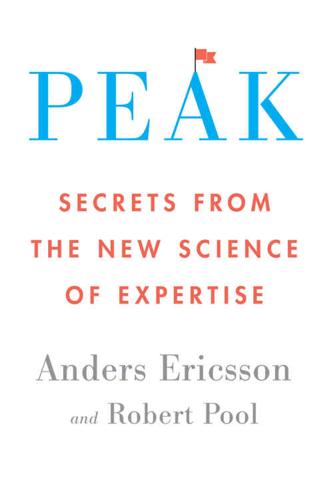
Peak: Secrets From the New Science of Expertise
by
Anders Ericsson
and
Robert Pool
Published 4 Apr 2016
On the Internet. To solve a Rubik’s Cube really fast? Internet. Of course, you have to be careful about the advice—the Internet offers just about everything except quality control—but you can get some good ideas and tips, try them out, and see what works best for you. But not everything is on the Internet, and the things that are may not fit exactly what you’re trying to do or may not be practical. Some of the most challenging skills to practice, for instance, are those that involve interacting with other people. It’s easy enough to sit in your room spinning a Rubik’s Cube faster and faster or to go to a driving range and practice hitting with your woods, but what if your skill requires a partner or an audience?
…
See brain adaptability plateaus, 161–65 play, 184–88, 215 Polgár, Judit, 182, 183, 187 Polgár, Klara, 180–83 Polgár, László, 180–83, 189 Polgár, Sofia, 182, 183 Polgár, Susan, 181–82, 183, 184, 185, 188 Poor Richard’s Almanack (Franklin), 156–57 positive feedback, motivation and, 22, 173–76 potential and adaptability, xix–xx, 47–49 practice ability and, 8, 9, 43 in blindfold chess, 51–54 vs. deliberate practice, 9, 132 digit memorization study, 2–5 effective techniques of, 9 fighter pilot school, 116–20 highly developed methods of, 85–89 as key to success, 230 music students, 77–79 solitary practice, 91, 92 vs. talent, in chess, 225–33 usual approach to, 11–14, 48–49, 121 See also purposeful practice; feedback praise, 186, 187, 189, 190, 239, 240 presbyopia study, 36–37 principles, of deliberate practice, 97–100 prodigies, xii–xiii, 211, 212, 214 See also expert performers; talent Professional Golfers’ Association, 146 Professor Moriarty, 226 prostate cancer study, 139–40 Psychology of Music (journal), xiv pull-ups, 34 purposeful practice adaptability, 41–47 brain response to (taxi studies), 30–32 characteristics of, 14–22 comfort zone, 17–22 defined, 98 vs. deliberate practice, 98 in digit study, 13–14 feedback, 16–17 focus, 15–16 goals, 15 highly developed methods of, 85–89 length of, 171 limits of, 22–25 musicians, 79–80 vs. naive practice, 14 recipe for, 22 vs. traditional approach, 11–14, 48–49 as work, 166–67 See also deliberate practice pushups, 33–34 Q quantitative vs. qualitative problems, 252 quarterbacks, pattern recognition, 64–65 quitting, 169–70, 173 R radiologists, 125–27, 141 Radio-Symphonie-Orchester Berlin, 88, 94 rat muscle study, 39 reading, mental representations and, 66–68 red flag, 121 Red Force pilots, 116–18 Renwick, James, 77–79 reproduction, of a master, 160–61, 214 retrieval structure comprehension and, 67 memory and, 24, 61 See also mental representations Richards, Nigel, 202–3, 205–6 ringmaster practice, 158–59 Road to Excellence, The (Ericsson), xxi rock climbing, pattern recognition, 65 Rubik’s Cube, 157–58 running age, 195 engagement in, 152, 153–54 Faloon, Steve and, 4, 15, 22 Hägg, Gunder, 172–73 mental representations, 82 pain of, 171 records in, 6, 107 Rush, Mark Alan, 201–2 Russell, JaMarcus, 236 S Sachs-Ericsson, Natalie, 95 Saikhanbayar, Tsogbadrakh, 84–85 Sakakibara, Ayako, xiv–xv Sanders, Lisa, 68–71 Sanker, David, 7 savants, 219–22 Schelew, Ellen, 243–47 Science (magazine), 42–43, 254 Scrabble, 202–3, 205–6 Scripps National Spelling Bee, 165–66 self-evaluation, of performance deliberate practice and, 99 fighter pilot school, 117 golf practice, 177–78 plateaus, 164–65 radiologists, 127 See also feedback; measurement, of performance self-fulfilling prophecy, of talent, 238–42 self-motivation, 191, 193 Servizio, Charles, 34 Sharma, Vikas, 8 Sherlock Holmes, 226 Shiffrin, Mikaela, 187 Shockley, William, 234 short-term memory digit study, 2–5 limit to, 2 role of, 61 siblings, of experts, 187–88 Simon, Herb, 55–56, 57, 257 simulator practice, 130, 143–44 simultaneous interpreters, 198 Sinatra, Frank, xiv Singh, Fauja, 195 singing, 151, 223–24 skill learning adaptability, see adaptability brain structure, 43–45 deliberate practice, 100 engagement, 150–54 individual instruction, 147–50, 165–66 vs. knowledge, 130–37 mental representations, 76–82 plateaus, 161–65 purposeful practice, see purposeful practice usual approach to, 11–14 skills-based training, 137–44 sleep, 92–93, 154, 170, 171 soccer, patterns in, 63–64 social motivation, 173–76 solitary practice, 91, 92, 109, 147–50, 165–66, 176–77, 230, 232 sommeliers, 104–5 Spectator, The (magazine), 155, 156, 159–60, 255 Spencer, David Richard, 7 sports.
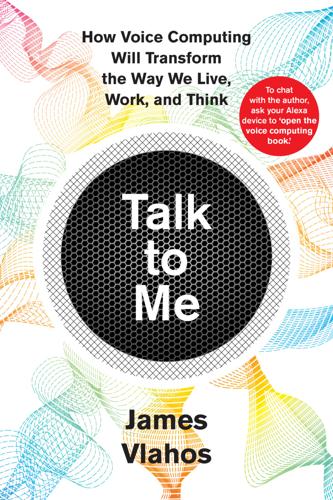
Talk to Me: How Voice Computing Will Transform the Way We Live, Work, and Think
by
James Vlahos
Published 1 Mar 2019
He tackled the weekly set of challenges, made it into the club, and ultimately became one of the highest-scoring members of a team that won the state programming championship. Hooked, Cheyer enrolled in a computer class in high school. When it came time to create his first original program—and not simply to complete the challenges from the club—he followed the author’s maxim of “Write what you know.” What he knew was the Rubik’s Cube. Cheyer had started a school club devoted to the colorful puzzle, which had earned him a mention in the October 1982 issue of Boys’ Life. He had won a regional contest for his speed at solving it—he averaged twenty-six seconds. So he wrote a program in the computer class that could automatically solve the cube.
…
Where Cheyer was a programmer, Kittlaus was an executive and a salesman, able to conceptualize a product and explain it with a compelling story. He was charming and handsome; a 2005 Chicago Sun-Times column described him as “a blond, baby-faced, Nordic Brad Pitt.” (Kittlaus’s mother is Norwegian, and he had lived in her homeland for seven years.) Favoring hobbies that were more adventurous than Cheyer’s Rubik’s Cube, Kittlaus liked to skydive, pursue tornadoes, and practice the Korean martial art of hapkido. Kittlaus, though, shared at least one thing with Cheyer: He was frustrated by the constraints of his job. Motorola wanted to create a new high-profit-margin phone, so Kittlaus was managing a project to create the first model by any company to feature Google’s new Android operating system.
…
See also Hello Barbie Robin (virtual assistant), 134–35 Robin Labs, 134–36 Robo-Radar, 22–23 robots children and, 190–93, 244 elderly and, 194–95, 239–40 first, 65 personality development, 137–38 in R.U.R. (play), 144 socialbot discussion of, 157 Robovie, 244 Roombas, 121–22 Rosenblatt, Frank, 87–89 Rubik’s Cube, 19 rules-based approaches Alexa Prize competition and, 144–45, 146–47, 149, 151, 159 Aristo, 162–63 Cyc, 161–62 Dadbot and, 256 machine learning vs., 85–86, 92, 136 natural-language generation and, 103–4 natural-language understanding and, 98–100 PullString and, 174 sequence-to-sequence approach combined with, 187 speech recognition and, 95–97 speech synthesis and, 110–13 Rumelhart, David, 90–91 R.U.R.
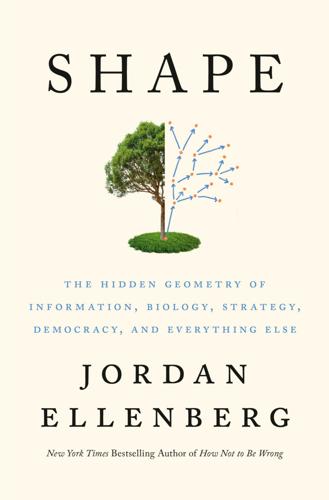
Shape: The Hidden Geometry of Information, Biology, Strategy, Democracy, and Everything Else
by
Jordan Ellenberg
Published 14 May 2021
If you choose four: I am here paraphrasing a recent theorem of Harald Helfgott, Ákos Seress, and Andrzej Zuk (“Random generators of the symmetric group: diameter, mixing time and spectral gap,” Journal of Algebra 421 [2015]: 349–68) and not exactly accurately, either, but the right idea is conveyed, I think. The Rubik’s cube: Clay Dillow, “God’s Number Revealed: 20 Moves Proven Enough to Solve Any Rubik’s Cube Position,” Popular Science, Aug. 10, 2010. a follow-up study in 1970: C. Korte and S. Milgram, “Acquaintance Networks Between Racial Groups: Application of the Small World Method,” Journal of Personality and Social Psychology 15, no. 2 (1970): 101–08.
…
Abstract geometries, like the geometry of the shuffled cards, are typically really fast to explore, much faster than geometries drawn from physical space. The number of places you can reach grows exponentially with the number of steps you take, following the terrifying law of geometric increase, which suggests that you can get almost anywhere in very short order. The Rubik’s cube has 43 quintillion positions, but you can get from any of them back to the original setting in just twenty moves. The hundreds of thousands of published mathematicians are all (with the exception of the applied Ukrainians and other isolates) only thirteen collaborations away from Paul Erdős. But math is a human activity, mathematicians are humans, and the network that captures our interest the most, if we’re to be honest, is the network of people and their interactions.
…
Sims, 352, 357, 371, 384, 393 Reznick, Bruce, 315n rhetorical skills, 9 Rhode Island, 354 rhumb line, 307 ridings, 373–74 riffle shuffles, 326–28 Riggs, Allison, 403 right angle congruence theorem, 19–20 rigid motions, 52, 56 rinderpest, 243–48, 254, 255–57 rivers, 104 Rivest, Ron, 135 “Road Not Taken, The” (Frost), 175 Roberts, John, 403–7 Rodden, Jonathan, 386–87 Rogers, Ted, Jr., 115 Roman Republic, 132–33, 349 Romney, Mitt, 347 Rosenberg, Seymour, 192 Rosenblatt, David, 228 Rosenblatt, Frank, 179–81, 181n Rosenbluth, Arianna, 315n Rosenbluth, Marshall, 315n Ross, Ronald academic conflicts, 208–9 and Bachelier’s work, 80–81 and Brownian motion, 84 and differential equations, 240–41, 263 and Hudson, 213 and Markov chains, 88, 90 mathematical background, 207–9 meets Poincaré at Sylvester medal award ceremony, 324 and models of disease spread, 207–8, 211, 214, 219–20, 233, 286, 288 and mosquito distribution problem, 64–67, 68, 70–71, 73, 74 and Pearson’s work, 77–79 and poetry, 322 and “reverse engineering” approach, 260–61, 263 on self-education, 210–11 St. Louis exposition lecture, 59–60, 64–67, 207–8 and theory of happenings, 211, 229, 266 rotation, 52, 53–54, 147–51, 202, 297 “rotten boroughs,” 350–51 Royal College of Physicians Laboratory, 233 Royal Society, 324 RSA, 135–36 Rubik’s cube, 333 Rucho v. Common Cause, 384–85, 402, 405, 406, 408 rumors, 233–34 Russian Orthodox Church, 85 Salisbury Cathedral, 350–51 sampling, 70–74 Sanskrit poetry, 236–37, 236n, 268, 322 Sargent, John Singer, 59 Sartorius von Waltershausen, Wolfgang, 46 satire, 411–13 Savilian Professor of Geometry, 323 scale changes, 202 Scarpetta, Sergio, 142 Schachtner, Patty, 381–82 Schaeffer, Jonathan, 98–99, 138, 139–42, 140n Schimel, Brad, 380–81 Schubfachprinzip (“chest-of-drawers principle”), 273–74 Schwarzenegger, Arnold, 408 Science and Hypothesis (Poincaré), 83 science fiction, 183n Scientific American, 325n scoring functions, 164 scronch geometry, 55–56, 61–63 Second Congressional District of Wisconsin, 349–50 second law of motion, 238–39, 239n second law of thermodynamics, 331 selectivity, 37 self-driving cars, 177–78, 204–5 self-education, 210 self-evident truths, 13n Selfridge, Oliver, 204 September 11, 2001 terrorist attacks, 220 seven-shuffle theorem, 331, 393, 399 Seventh Congressional District of Pennsylvania (Goofy Kicking Donald Duck), 366, 366–67 Shamir, Adi, 135 Shannon, Claude, 93, 96, 128 Shaw v.

Chokepoints: American Power in the Age of Economic Warfare
by
Edward Fishman
Published 25 Feb 2025
pid_prh_7.1_150769746_c0_r1 Contents Dedication Cast of Characters Glossary Introduction Win Without Fighting Part One Building the Chokepoints 1 The Old Way: A Brief History of Economic War from Pericles to Saddam 2 Invisible Infrastructure 3 Finance Unchained 4 The Deal in the Desert 5 Our Currency, Your Problem 6 “Guerrillas in Gray Suits” 7 An Economic Weapons Test Part Two Iran and the Bomb 8 The Technocrat 9 Iran Stares Down a “Toothless Tiger” 10 Risky Business 11 Stuart Levey Goes to War 12 Extending a Hand 13 With Us or Against Us 14 Exodus 15 The Last Bastion 16 100–0 17 Good Cop, Bad Cop 18 Landslide 19 The Freeze 20 “The World Has Avoided Another War” 21 Black Magic Part Three Russia’s Imperial Land Grab 22 The Diplomat 23 The Fallen Bear Licks Its Wounds 24 Euromaidan 25 “Aim First, Then Shoot” 26 The Contact Group 27 The Scalpel 28 The Opening Salvo 29 MH17 30 Escalation 31 “Economy in Tatters” 32 Back from the Edge 33 From Russia with Bribes 34 “Dark Thought” 35 A Way Out via Golden Escalator Part Four China’s Bid for Technological Mastery 36 The Interpreter 37 Irresponsible Stakeholder 38 The Awakening 39 Let a Hundred China Policies Bloom 40 The Clue: ZTE 41 The Validation: Fujian Jinhua 42 The First Shot at Huawei 43 A False Start 44 “Backdoors” and “Betrayal” 45 The Second Shot at Huawei 46 The Dominoes Fall 47 Iron Curtain Part Five Russia’s Invasion of Ukraine 48 The Practitioner 49 The Best-Laid Plans 50 “America Is Back” 51 Standing Athwart History, Yelling Stop 52 Panic at the Pump 53 “An Invasion Is an Invasion” 54 The Scholz Jolt 55 Banks vs. Tanks 56 Pandora’s Box 57 Monetary Policy at the Point of a Gun 58 A Potemkin Currency 59 Supply and Demand 60 The Rubik’s Cube 61 “What Other Option Do We Have?” 62 The Service Providers’ Cartel 63 An Economic War of Attrition 64 A Partitioned Market Part Six The World Economic Rupture 65 “Small Yard and High Fence” 66 The Scramble for Economic Security 67 Breaking the Chokepoints 68 Strategy and Sacrifice Conclusion Impossible Trinity Acknowledgments A Note on Sources Notes List of Maps, Charts, and Illustrations Index About the Author _150769746_ For Lepi Cast of Characters David Cohen: Lawyer who served as the Treasury Department’s second-ever undersecretary for terrorism and financial intelligence, succeeding Stuart Levey in 2011; oversaw efforts to ramp up pressure on Iran in 2012, including by targeting its central bank and oil revenues.
…
Russia and India had been loyal friends for “many decades,” he said. “We will be ready to supply to India any goods which it wants to buy from us.” As for the rupee-ruble mechanism, India was looking out for its own interests, and rightfully so. “India must not be dependent on systems whose masters can steal your money overnight.” 60 The Rubik’s Cube On April 1, Ukrainian forces advanced into towns surrounding Kyiv that were recently abandoned by retreating Russian troops. As they made their way into a leafy suburb northwest of the capital, an area popular among middle-class families, they were confronted with a stomach-churning sight.
…
Yet the latter countries were almost guaranteed to oppose such openly punitive measures against Russia. The Biden administration needed to cut Russia’s oil revenues without reducing the volume of its sales, and the strategy needed to work even without formal backing from Russia’s biggest non-Western customers. It felt like a political and economic Rubik’s Cube, where any move to align the colors on one pane would scramble them elsewhere. Finally, Andrea Gacki and Peter Harrell struck upon an idea. Since early in the war, Italian prime minister Mario Draghi had been pushing the EU to impose a cap on the price that European companies paid for Russian natural gas.
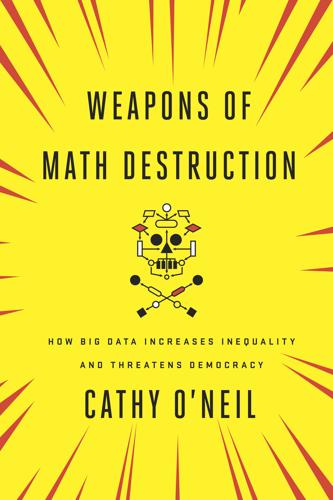
Weapons of Math Destruction: How Big Data Increases Inequality and Threatens Democracy
by
Cathy O'Neil
Published 5 Sep 2016
I would reduce each one to its basic elements—the prime numbers that made it up. 45 = 3 x 3 x 5. That’s called factoring, and it was my favorite investigative pastime. As a budding math nerd, I was especially intrigued by the primes. My love for math eventually became a passion. I went to math camp when I was fourteen and came home clutching a Rubik’s Cube to my chest. Math provided a neat refuge from the messiness of the real world. It marched forward, its field of knowledge expanding relentlessly, proof by proof. And I could add to it. I majored in math in college and went on to get my PhD. My thesis was on algebraic number theory, a field with roots in all that factoring I did as a child.
…
I was especially disappointed in the part that mathematics had played. I was forced to confront the ugly truth: people had deliberately wielded formulas to impress rather than clarify. It was the first time I had been directly confronted with this toxic concept, and it made me want to escape, to go back in time to the world of proofs and Rubik’s Cubes. And so I left the hedge fund in 2009 with the conviction that I would work to fix the financial WMDs. New regulations were forcing banks to hire independent experts to analyze their risk. I went to work for one of the companies providing that analysis, RiskMetrics Group, one block north of Wall Street.

Are You Smart Enough to Work at Google?: Trick Questions, Zen-Like Riddles, Insanely Difficult Puzzles, and Other Devious Interviewing Techniques You ... Know to Get a Job Anywhere in the New Economy
by
William Poundstone
Published 4 Jan 2012
They assured any practical-minded readers that their method might “have important applications in the cheese and sugarloaf industries.” This question loosely recalls another posed in interviews at some financial firms: How many cubes are in the center of a Rubik’s Cube? Since the standard cube is 3 × 3 × 3, the fake-out answer is “one.” Anyone who’s ever disassembled a Rubik’s Cube knows the real answer is “zero.” There’s a spherical joint in the middle, no cubelet. ? There are three boxes, and one contains a valuable prize; the other two are empty. You’re given your choice of a box, but you aren’t told whether it contains the prize.
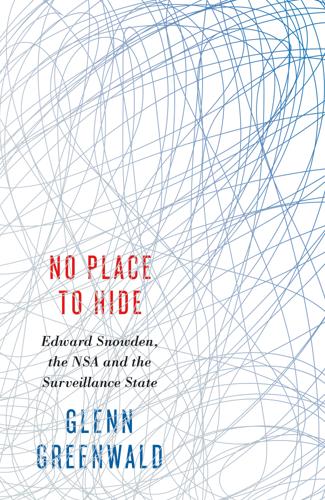
No Place to Hide: Edward Snowden, the NSA, and the U.S. Surveillance State
by
Glenn Greenwald
Published 12 May 2014
If Snowden failed to arrive within two minutes of the first time, we were to leave the room and come back later at the second time, when he would find us. “How will we know it’s him?” I asked Laura. We still knew virtually nothing about him, not his age, race, physical appearance, or anything else. “He’ll be carrying a Rubik’s Cubed,” she said. I laughed out loud: the situation seemed so bizarre, so extreme and improbable. This is a surreal international thriller set in Hong Kong, I thought. Our taxi dropped us at the entrance to the Mira Hotel, which, I noted, was also located in the Kowloon District, a highly commercial neighborhood filled with sleek high-rises and chic stores: as visible as it gets.
…
After two minutes, I heard someone come into the room. Rather than turn around to see who had entered, I continued to stare at the back wall mirror, which showed a man’s reflection walking toward us. Only when he was within a few feet of the couch did I turn around. The first thing I saw was the unsolved Rubik’s Cube, twirling in the man’s left hand. Edward Snowden said hello but did not extend his hand to shake, as the point of the arrangement was to make this encounter appear to be random. As they had planned, Laura asked him about the food in the hotel and he replied that it was bad. Of all the surprising turns in this entire story, the moment of our meeting proved to be the biggest surprise of all.

How to Predict the Unpredictable
by
William Poundstone
“We hope,” Shannon once wrote, “that research in the design of game-playing machines will lead to insights in the manner of operation of the human brain.” Shannon spent much of his time building outlandish machines. In 1950, he created one of the first chess-playing machines, and years later a pair of robot arms that could solve a Rubik’s cube. Shannon’s THROBAC was a desktop calculator that worked in Roman numerals (“THrifty ROman numeral BAckward-looking Computer”). His best-known contraption was Theseus, a mechanical mouse that could thread its way through an aluminum maze. Theseus became a media celebrity of sorts, and Shannon himself starred in a short film demonstrating it.
…
See crowd-sourced ratings Redfin estate agency, 203–204 Reichenbach, Hans, 43, 44 Rendell, Jonathan, 50 representativeness heuristic, 170–172 retail prices, 196–198 Rhine, Joseph Banks, 28–35, 39, 46 robots, 8, 14, 207, 258n rock/paper/scissors (RPS), 50–56, 79, 258n RockYou.com, 93 Romney, Mitt, 99, 140 Roskes, Marieke, 85 Rubik’s cube, 8 Russia, 141 S&P 500 Index, 148, 218, 220–225, 226–227, 229–235, 237–242, 244–246 Safari (Web browser), 194 Samuelson, Paul, 228 Scacco, Alexandra, 141 Schneier, Bruce, 93 Scholastic Assessment Tests (SAT’s), 65–67 Schroeder, Manfred, 10 screen tests (Warhol), 16 Sears, Sean, 53, 55 second-digit test, 127–128, 132, 134–136, 143 Securities and Exchange Commission (SEC), 129 SEER (SEquence Extrapolating Robot), 14 seven, preference for number, 103–107 Shadow, The, 28 Shalvi, Shaul, 85 Shannon, Claude, 7–14, 16–17, 39, 55, 188 Shannon, Norma, 7 Sherdon, William A., 205 Shevchuk, Vladimir, 141 Shiller PE ratio.
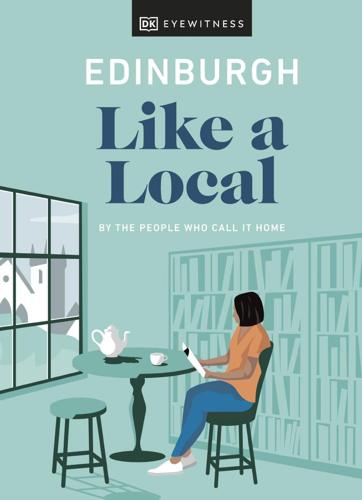
Edinburgh Like a Local: By the People Who Call It Home
by
Dk Eyewitness
Published 28 Sep 2021
Park yourself at the ping pong hall at the back of this late night bar, where paddles arrive in champagne buckets, cocktails come adorned with candy and hip hop beats have you bouncing off the walls until 3am. Ping pong not your thing? There are pop-up quizzes, karaoke and cinema nights here too. MOUSETRAP Map 4; 180 Leith Walk, Leith; ///outer.flame.hurls; 0131 553 0220 Spot the retro game and Rubik’s cube graffiti on the outside of this dive bar and you’ll know you’re in the right place. Pinball wizards and Pac-Man pros bypass the bar area and make a beeline for the 156 156-159_LAL_Edinburgh.indd 156 09/08/2021 16:46 N I G H T L I F E G A M E S N I G H T back room, where they fight for the highest scores in this 80s-style arcade.
…
Ping pong not your thing? been popular for centuries after all. There are pop-up quizzes, karaoke and cinema nights here too. MOUSETRAP Try it! GET QUIZZICAL Map 4; 180 Leith Walk, Leith; ///outer.flame.hurls; 0131 553 0220 Check Pub Quizzy (www.pubquizzy.com) for Spot the retro game and Rubik’s cube graffiti on the outside of this a list of pub quizzes in the city, organized by day of the week. If you ask us, the best of dive bar and you’ll know you’re in the right place. Pinball wizards the lot is Monday night at the Pear Tree and Pac-Man pros bypass the bar area and make a beeline for the (p68) with quiz master Dave. 156 156-159_LAL_Edinburgh.indd 156 09/08/2021 16:46 156-159_LAL_Edinburgh.indd 157 09/08/2021 16:46 N I G H T L I F E FORE PL AY CRAZY GOLF Map 3; 14 Picardy Place, New Town; ///crew.sheep.tribes; www.foreplaycrazygolf.co.uk Nine wacky holes make up this innuendo-infused pop-up golf course cheekily named “Wee Bobby” (a name that elicits at least a chuckle from locals in the know).

The Empathy Exams: Essays
by
Leslie Jamison
Published 30 Mar 2014
This ad copy transforms the alchemy of Morgellons into a magic trick: examined close-up, our most ordinary parts—even the surface and abrasions of our skin—become wild and terrifying. My name is automatically entered in the lottery, along with all the other conference attendees, and I end up winning a miniscope. I’m sheepish headed to the stage. What do I need a scope for? I’m here to write about how other people need scopes. I’m given a square box a bit smaller than a Rubik’s Cube. I imagine how the scene will play out later tonight: examining my skin in the stale privacy of my hotel room, coming face to face with that razor’s edge between skepticism and fear by way of the little widget in my palm. At the bottom of my sheet of jokes, the title—You might be a morgie if—is given one last completing clause: “you laughed out loud and ‘got’ these jokes.”
…
He finishes the cigarette and then tosses it into our cooking fire, where it smokes right into our breakfast. I am aware that Laz has already been turned into a myth, and that I will probably become another one of his mythmakers. Various tropes of masculinity are at play in Laz’s persona—bad-ass, teenager, father, demon, warden—and this Rubik’s cube of grit and edges seems to be what Barkley’s all about. I realize Laz and I will have many hours to spend in each other’s company. The runners are out on their loops anywhere from eight to thirty-two hours. Between loops, if they’re continuing, they stop at camp for a few moments of food and rest.

Cloudmoney: Cash, Cards, Crypto, and the War for Our Wallets
by
Brett Scott
Published 4 Jul 2022
They are confronted with a morass of technical jargon and political claims, which pertain to tokens that are supposedly ‘mined’ out of cyberspace and which are also ‘money’. It is a starting point that can leave you more confused than enlightened. But if there is one thing I have learned from being a crypto-paranormalist for more than ten years, it is this: glimpsing the spectre of blockchain technology is like building a Rubik’s cube in your mind. To get the full picture requires twisting its components around in your head many times in confusion, until, finally, you gain enough experience to see how they align. A two-pronged attack Before starting those twists, though, we need an intuition of where we are trying to get to.
…
For a fuller understanding we need to wade deeper in five conceptually separate steps. The first will be to describe the concept of syncing, and the second will be to describe the concept of a ‘blockchain’. I shall describe them in stand-alone terms, as two distinct concepts that do not require each other, almost like two colours on a Rubik’s cube with their own logic, unaware of each other. The third step, however, entails twisting them together into an elegant combination. The final two twists will complete the picture. The description that follows is intended for a non-expert reader, and it will skip the more nuanced details of the system.

The Thinking Machine: Jensen Huang, Nvidia, and the World's Most Coveted Microchip
by
Stephen Witt
Published 8 Apr 2025
But, in guessing wrong, the network had gained a little bit of information, however small, about what the image was not—not a stingray, at any rate. The network processed this information by retooling the connections between its neurons using Hinton’s backpropagation approach. This was the difficult part, as it involved repeated “matrix multiplication,” a mathematical operation that scientists compared to solving an unimaginably large Rubik’s cube. Past attempts to train neural networks had always faltered here, but Krizhevsky had CUDA, which leveraged the GeForce’s parallel architecture to crack this computational puzzle. Once the math was finished—in a fraction of a fraction of a second—Krizhevsky’s network was shown a second image. Then a third, then a fourth, then thousands more, then millions more.
…
Only a small portion of the performance gains now came from the classic strategy of packing more transistors into the chip—Moore’s Law was dead. The rest came from Bill Dally, Ian Buck, and the rest of the Nvidia scientists accelerating matrix multiplications with numerical magic tricks. Nvidia engineers taught the GPU new instructions that acted like speed solvers on a Rubik’s cube. They replaced the processor’s native language with ugly but effective lo-fi data types, akin to switching from calligraphy to shorthand. They trimmed “dead” synapses from the matrices, essentially deleting unproductive information from the neural net in the manner of the forgetting machine in Eternal Sunshine of the Spotless Mind.
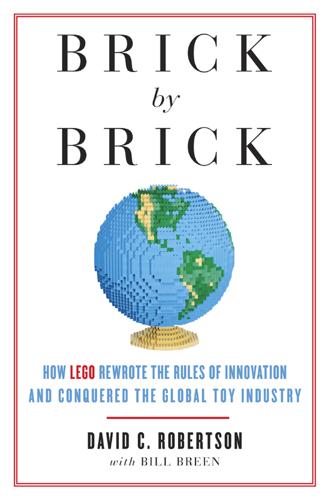
Brick by Brick: How LEGO Rewrote the Rules of Innovation and Conquered the Global Toy Industry
by
David Robertson
and
Bill Breen
Published 24 Jun 2013
The Internet abounds with LEGO gathering places such as LUGNET (aka the LEGO Users Group Network), a global forum for LEGO fans; MOCpages, where builders show off more than 350,000 LEGO “My Own Creations”; Brickshelf, a fan-created site that features close to two million images as well as a thriving market for LEGO kits and pieces; and Brickipedia, a LEGO wiki that encompasses nearly twenty-four thousand pages of reviews and forums. YouTube alone is stuffed with more than nine-hundred thousand clips showcasing over-the-top LEGO creations, with robots that solve Rubik’s Cube in mere seconds and a LEGO-based animation of English comedian Eddie Izzard’s hilarious send-up of Darth Vader, which has drawn more than nineteen million views. Along with Coca-Cola and Disney, LEGO has ranked at the top of a Young and Rubicam survey of the world’s most recognized brands. In 2007, the Reputation Institute declared LEGO the world’s most respected company.
…
The Mindstorms hierarchy—or, to be more accurate, the Mindstorms meritocracy—was always in flux. People ascended the pyramid based on their Mindstorms innovations and their contributions to the group, whether it be hacking new code or squashing a record number of bugs. As word of their eye-popping achievements—such as the CubeStormer, a Rubik’s Cube–solving robot that beat the human record for cracking the puzzle—spread across the far larger web of LEGO fans and even tech-heads who previously had been indifferent to LEGO, the buzz built upon itself and attracted thousands more converts to Mindstorms. By opening up the Mindstorms NXT development process, not only did LEGO build a better product, but it grew the Mindstorms brand by eliciting the goodwill of volunteer hobbyists who were more than willing to proselytize for a toy they had helped create.

Moonwalking With Einstein
by
Joshua Foer
Published 3 Mar 2011
I learned that there was someone in New York City with an IQ of 228, and a chess player in Hungary who once played fifty-two simultaneous blindfolded games. There was an Indian woman who could calculate the twenty-third root of a two-hundred-digit number in her head in fifty seconds, and someone else who could solve a fourdimensional Rubik’s cube, whatever that is. And of course there were plenty of more obvious Stephen Hawking types of candidates. Brains are notoriously trickier to quantify than brawn. In the course of my Googling, though, I did discover one intriguing candidate who was, if not the smartest person in the world, at least some kind of freakish genius.
…
And then there were the extensive interviews conducted by another graduate student, Katy Nandagopal. Do you think you have a good natural memory? (Pretty good, but nothing special.) Did you ever play memory games growing up? (Not that I can think of.) Board games? (Only with my grandmother.) Do you enjoy riddles? (Who doesn’t?) Can you solve a Rubik’s cube? (No.) Do you sing? (Only in the shower.) Dance? (Ditto.) Do you work out? (Sore subject.) Do you use workout tapes? (You need to know that?) Do you have electrical wiring expertise? (Really?) For someone who wants to know what’s being done to him so that he might someday tell other people about it, being the subject of a scientific study can be exceedingly trying.
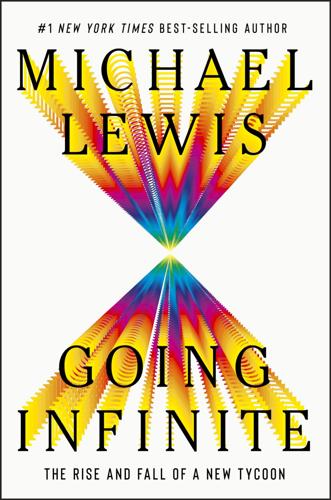
Going Infinite: The Rise and Fall of a New Tycoon
by
Michael Lewis
Published 2 Oct 2023
Playing Magic with Matt Nass was one; math camp was the other. After his freshman year in high school, he went to a summer camp for mathematically gifted kids, on the Colby College campus. (Joe drove him there and got lost—then saw an awkward-looking kid sitting under a tree, fiddling with a Rubik’s Cube. “That’s when I knew we’d found the place,” said Joe.) For Sam, math camp was a revelation: here were kids with whom he had something in common. At math camp people didn’t seem to care about his lack of facial expressions. At math camp he had conversations with other people that resembled the conversations he’d been having with himself.
…
While Nishad typed away, I picked through the items and made an inventory: One giant canister of Morton salt One iPhone box with new phone still inside it One crumpled one-dollar bill Four fidget spinners One deck of playing cards One pillow and one blanket Two large half-opened cardboard boxes filled with Miami Heat jerseys One box cutter One open bottle of unscented mosquito repellent in a sealed plastic bag Four manila folders containing confidential corporate documents requiring Sam’s signature One LiftMaster automatic garage door opener A second new iPhone box with phone inside One ceremonial medal, presented to Sam Bankman-Fried by Francis Suarez, mayor of the city of Miami A dozen square plastic boxes of unclear purpose inscribed with the message FTX: Welcome to your new world of payments Three pairs of chopsticks One key card to a Ritz-Carlton hotel room One handheld Gaiatop fan One abnormal Rubik’s Cube, with all squares painted white I was about halfway through the pile when Sam appeared. I had the briefest sensation of being discovered by a teenager while taking in the chaos they’d made in their bedroom. If he was curious how I’d gotten into his office, or why I was now picking through the contents of his desk, he didn’t show it.

Also Human: The Inner Lives of Doctors
by
Caroline Elton
Published 1 Mar 2018
Admittedly this was a small-scale study, but the contrast with the endemic depression noted in studies from the UK and US is striking. Improving medical education often reminds me of solving a Rubik’s Cube. If you twist the cube one way to align the colors on the top surface, all sorts of untoward changes are probably happening on the five other sides that remain hidden from view. The controversy over junior doctors’ working hours is a classic example of this Rubik’s Cube principle. Undoubtedly overtired doctors are problematic, for their patients, colleagues, and also, of course, for themselves. But placing restrictions on junior doctors’ hours turns out not to be the perfect solution.

Supremacy: AI, ChatGPT, and the Race That Will Change the World
by
Parmy Olson
To build AGI, OpenAI’s founding team needed to attract more money and talent, so they tried focusing on projects that could generate positive stories in the press. Their early researchers created a computer that could beat the top human champions at Dota, a strategic 3D video game, and they also built a five-fingered robotic hand, powered by a neural network, that could solve a Rubik’s Cube. These projects were aimed at keeping Elon Musk happy by trying to one-up the work happening across the Atlantic in the secretive offices of DeepMind. Musk didn’t keep his mistrust of DeepMind a secret. In 2017, OpenAI’s staff went to an off-site meeting at SpaceX’s headquarters. Musk, who’d been visiting the OpenAI office every week at first and then every few weeks, gave them a tour of the facilities and then did a question-and-answer session with about forty of his new artificial intelligence researchers.
…
Most of its research focused on re-creating aspects of physical life in simulation, from games to proteins. But that approach started to look shortsighted when OpenAI’s strategy of embracing the chaos of the internet led to more powerful AI tools. DeepMind’s own staff questioned whether their mission to “solve intelligence” with simulations and games was such a good idea. “Life isn’t a Rubik’s Cube,” one former DeepMind executive grumbles, alluding to the company’s motto. “You can’t just solve stuff.” After the release of ChatGPT, DeepMind was forced to throw itself into building an even better version for Google. Hassabis had taken control of the newly merged Google DeepMind and started overseeing the development of a large language model called Gemini, an AI assistant that used techniques from AlphaGo to excel at strategy and planning.
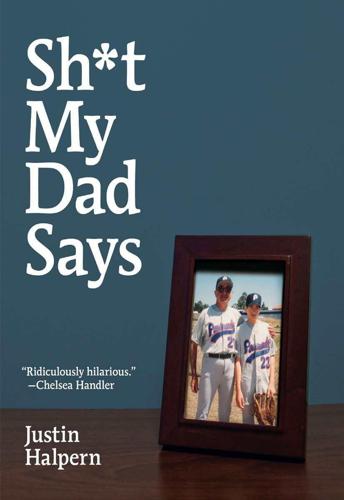
Sh*t My Dad Says
by
Justin Halpern
Published 4 May 2010
I’m a mad man if you don’t pick me the hell up.” On Built-Up Expectations “Your brother brought his baby over this morning. He told me it could stand. It couldn’t stand for shit. Just sat there. Big letdown.” On Canine Leisure Time “The dog is not bored. It’s not like he’s waiting for me to give him a fucking Rubik’s Cube. He’s a goddamned dog.” On Talking Heads “Do these announcers ever shut the fuck up? Don’t ever say stuff just because you think you should. That’s the definition of an asshole.” On Long-Winded Anecdotes “You’re like a tornado of bullshit right now. We’ll talk again when your bullshit dies out over someone else’s house.”

Trixie and Katya's Guide to Modern Womanhood
by
Trixie Mattel
and
Katya
Published 15 Nov 2020
After performing dazzling feats of beauty, she would leave every client feeling like they just had lunch with a Playboy Bunny. Tara the not-so-scatterbrained stylist can teach us something! I learned that the girl who presents as “ditzy” might not want you to know how smart she is. Wielding intelligence welcomes expectation. It’s better to lie in wait as a drooling stooge. Then you can floor everyone by solving a Rubik’s Cube at a holiday party and be like, “What?” BEAUTY As long as I’ve been alive, I have known I was gorgeous. The longing glances from adult strangers, the catty remarks from peers, the sexual advances from Uber drivers. Using vocabulary from my Friday afternoon Lyft trip with Mohammad, I am what you would consider “five stars.”
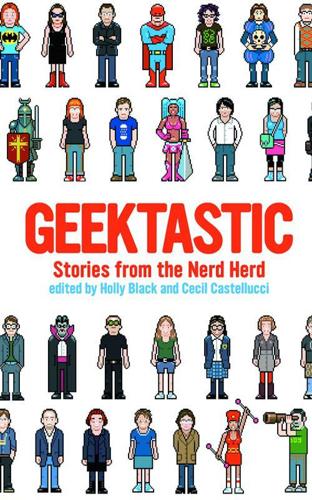
Geektastic: Stories From the Nerd Herd
by
Holly Black
and
Cecil Castellucci
Published 1 Aug 2009
I watch as the patterns of the stars take up residence inside her head. When she turns the last page, she pushes the book into my hands. “Thank you, Peter,” she says so earnestly I want to scoop her up and run around the field with her. So I do. In her eighth grade yearbook, Wendy Mass was bestowed the dubious honor of Most Likely to Solve Rubik’s Cube because she spent so much time fiddling with it instead of paying attention in class. Always fascinated by the night sky, she took Astronomy 101 in college. It was so complicated that she never got higher than 45 out of 100 on any exam. Fortunately, neither did anyone else and the professor graded on a curve.
…
Wendy is the author of eight novels for young readers, including A Mango-Shaped Space (about a girl with synesthesia), Jeremy Fink and the Meaning of Life, Every Soul a Star, and Heaven Looks a Lot Like the Mall. She lives in northern New Jersey, where she can be found staring up at the sky with her telescope, or down at the ground with her metal detector, hoping to find gold. She can do Rubik’s Cube in less than two minutes. Text by Holly Black and Cecil Castellucci. Illustrations by Hope Larson. IT’S JUST A JUMP TO THE LEFT by libba bray “How did she get ahead of us?” Agnes whispered to Leta. “I can’t believe her. She came earlier than us on purpose,” Leta said. Five people up in the line, Jennifer Pomhultz, in a rabbit-fur jacket and side ponytail, executed a perfect step-ball-change while her older sister and a handful of others applauded.
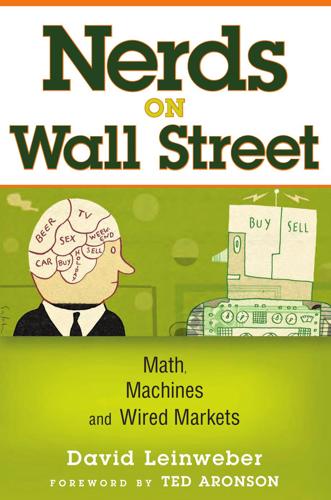
Nerds on Wall Street: Math, Machines and Wired Markets
by
David J. Leinweber
Published 31 Dec 2008
They believed what the software vendors told them: AI would lead them to the holy grail. 2. Use every conceivable esoteric AI technique, now. These were typically the brainstorms of people without a clue about finance. They were entirely capable of convincing themselves that a program that could solve Rubik’s Cube would be a great options trader. Unfortunately, they were often a little fuzzy on exactly what an option was. In designing MarketMind (and later QuantEx), the goal was not to use AI for its own sake, but rather to apply AI techniques where they could be used appropriately and within their limits to provide an advantage over conventional technologies.
…
They also include a number of less serious (but mathematically interesting) problems like how to arrange n queens on an n-by-n 168 Nerds on Wall Str eet square chessboard so no queen attacks another, many variations of the “missionaries and cannibals” and “monkeys and bananas” problems, and the aforementioned Rubik’s Cube. These clever programs used a very general symbolic pattern-matching technique, called Rete matching, which was a central element of the expert systems tools being promoted as “this year’s breakthrough of the century” in the mid-1980s. However, this sophisticated pattern matching is complex, requires an astonishing amount of computer power, and is only marginally relevant to the types of chart scanning real traders do.

Artificial Intelligence: A Modern Approach
by
Stuart Russell
and
Peter Norvig
Published 14 Jul 2019
Korf and Reid (1998) argue that a better way to characterize the effect of A* pruning with a given heuristic h is that it reduces the effective depth by a constant kh compared to the true depth. This means that the total search cost is O(bd–kh) compared to O(bd) for an uninformed search. Their experiments on Rubik’s Cube and n-puzzle problems show that this formula gives accurate predictions for total search cost for sampled problem instances across a wide range of solution lengths—at least for solution lengths larger than kh. For Figure 3.26 we generated random 8-puzzle problems and solved them with an uninformed breadth-first search and with A* search using both h1 and h2, reporting the average number of nodes generated and the corresponding effective branching factor for each search strategy and for each solution length.
…
A program called ABSOLVER can generate heuristics automatically from problem definitions, using the “relaxed problem” method and various other techniques (Prieditis, 1993). ABSOLVER generated a new heuristic for the 8-puzzle that was better than any preexisting heuristic and found the first useful heuristic for the famous Rubik’s Cube puzzle. If a collection of admissible heuristics h1 ... hm is available for a problem and none of them is clearly better than the others, which should we choose? As it turns out, we can have the best of all worlds, by defining h(n) = max{h1(n),...,hk(n)}. This composite heuristic picks whichever function is most accurate on the node in question.
…
The famous American game designer Sam Loyd falsely claimed to have invented the 15 puzzle (Loyd, 1959); actually it was invented by Noyes Chapman, a postmaster in Canastota, New York, in the mid-1870s (although a generic patent covering sliding blocks was granted to Ernest Kinsey in 1878). Ratner and Warmuth (1986) showed that the general n × n version of the 15-puzzle belongs to the class of NP-complete problems. Rubik’s Cube was of course invented in 1974 by Ernő Rubik, who also discovered an algorithm for finding good, but not optimal solutions. Korf (1997) found optimal solutions for some random problem instances using pattern databases and IDA* search. Rokicki et al. (2014) proved that any instance can be solved in 26 moves (if you consider a 180° twist to be two moves; 20 if it counts as one).

Four Battlegrounds
by
Paul Scharre
Published 18 Jan 2023
In training an algorithm to achieve superhuman performance at the computer game Dota 2, researchers at OpenAI used “thousands of GPUs over multiple months.” Because the computer could play games at an accelerated speed, the training was equivalent to a human playing for 45,000 years. In another project, an OpenAI team trained a robotic hand to manipulate a Rubik’s cube in 13,000 years of simulated computer time. The massive amounts of computing power used for machine learning research doesn’t come free. Leading AI research teams at organizations such as OpenAI, DeepMind, and Google Brain are spending millions on compute pursuing the latest advances in AI. These exorbitant sums are only possible because the labs are backed by some of the world’s largest corporations with deep pockets.
…
Moore, “Cramming More Components onto Integrated Circuits,” Electronics 38, no. 8 (April 19, 1965), https://newsroom.intel.com/wp-content/uploads/sites/11/2018/05/moores-law-electronics.pdf. 26“thousands of GPUs over multiple months”: Open AI et al., Dota 2 with Large Scale Deep Reinforcement Learning (arXiv.org, December 13, 2019), 2, https://arxiv.org/pdf/1912.06680.pdf. 26equivalent to a human playing for 45,000 years: OpenAI, “OpenAI Five Defeats Dota 2 World Champions,” OpenAI blog, April 15, 2019, https://openai.com/blog/openai-five-defeats-dota-2-world-champions/. 2613,000 years of simulated computer time: Ilge Akkaya et al., Solving Rubik’s Cube With a Robot Hand (arXiv.org, October 17, 2019), https://arxiv.org/pdf/1910.07113.pdf. 26spending millions on compute: Ryan Carey, “Interpreting AI Compute Trends,” AI Impacts, n.d., https://aiimpacts.org/interpreting-ai-compute-trends/; Dan H., “How Much Did AlphaGo Zero Cost?” Dansplaining, updated June 2020, https://www.yuzeh.com/data/agz-cost.html; Saif M.
…
Able Archer, 287 academic espionage, 163–64 accidents, 255 ACE (Air Combat Evolution), 1–2, 222 ACLU (American Civil Liberties Union), 111, 113 Acosta, Jim, 128 Advanced Research Projects Agency, 72 Advanced Research Projects Agency-Energy, 40 adversarial examples, 239–44, 240f adversarial patches, 241–42, 242f Aether Committee, 159 Afghanistan, 45–46, 54, 255 African Union, 108 AFWERX (Air Force Works), 214 Agence France-Presse, 139 AGI (artificial general intelligence), 284 AI Global Surveillance Index, 109 AI Index, 333–34 airborne warning and control system (AWACS), 196 Air Combat Evolution (ACE), 1–2, 222 aircraft, 191, 255 aircraft availability rates, 197 aircraft carriers, 191–92 AI Research SuperCluster, 296 Air Force 480th ISR Wing, 54 Air Force Works (AFWERX), 214 airlines, 100 AI Task Force, 193–94 AI Technology and Governance conference, 177 AITHOS coalition, 136 alchemy, 232 algorithmic warfare, 53, 56, 58 Algorithmic Warfare Cross-Functional Team (AWCFT), See Project Maven algorithm(s), 288; See also machine learning computer vision, 202–3 efficiency, 51, 297–98 real world situations, vs., 230–36 in social media, 144–51 for surveillance, 82 training, 25 Alibaba, 37, 91, 212 Alibaba Cloud, 160 All-Cloud Smart Video Cloud Solution, 107 Allen, John, 280 Allen-Ebrahimian, Bethany, 82 Alphabet, 26, 296 AlphaDogfight, 1–3, 220–22, 257, 266, 272 AlphaGo, 23, 73, 180, 221, 266, 271, 274, 284, 298, 453, 454 AlphaPilot drone racing, 229–30, 250 AlphaStar, 180, 221, 269, 271, 441 AlphaZero, 267, 269–71, 284 Amazon, 32, 36, 215–16, 224 Deepfake Detection Challenge, 132 and facial recognition, 22–23 and Google-Maven controversy, 62, 66 and government regulation, 111 revenue, 297 AMD (company), 28 American Civil Liberties Union (ACLU), 111, 113 Anandkumar, Anima, 32, 120 Anduril, 66, 218, 224 Angola, 107, 108 Apollo Program, 297 Apple, 92, 95–96 application-specific integrated circuits (ASICs), 180 Applied Intuition, 224 arms race, 254, 257 Army Command College, 279 Army of None (Scharre), 196 artificial general intelligence (AGI), 284 artificial intelligence (AI) agents, 271 community, publication norms, 125 cost of, 296–97 ethics, 159 future of, 294–301 general, 284 as general-purpose enabling technology, 3–4 impact on economic productivity, 72–73 implementation, 31 indices, global, 15–17 narrowness, 233 outcomes, 299–301 regulation of, 111–13 safety, 286, 289, 304 specialized chips for, 28–29, 180, 185 “Artificial intelligence: disruptively changing the ‘rules of the game’” (Chen), 279 Artificial Intelligence Industry Alliance, 172 artificial intelligence (AI) systems future of, 294–301 humans vs., 263–75 limitations of, 229–37 roles in warfare, 273 rule-based, 230, 236 safety and security challenges of, 249–59 arXiv, 163 ASICs (application-specific integrated circuits), 180 ASML (company), 181 Associated Press, 139 Atari, 235 Atlantic, The, 173 atoms, in the universe, number of, 335 AUKUS partnership, 76 Austin, Lloyd, 292 Australia, 76, 108, 158, 182, 187 Australian Strategic Policy Institute, 82, 98, 158 Autodesk, 162 automated surveillance, 103 automatic target recognition, 56–58 automation bias, 263 autonomous cars, 23, 65 autonomous weapons, 61, 64–66, 256 autonomous weapons, lethal, 286 AWACS (airborne warning and control system), 196 AWCFT (Algorithmic Warfare Cross-Functional Team), See Project Maven Azerbaijan, 108 BAAI (Beijing Academy of Artificial Intelligence), 172, 455 backdoor poisoning attacks, 245 badnets, 246 BAE (company), 211 Baidu, 37, 92, 160, 172, 173, 212 Baise Executive Leadership Academy, 109 “Banger” (call sign), 1 Bannon, Steve, 295 Battle of Omdurman, 13 BBC, 138 BeiDou, 80 Beijing, 84, 92, 159 Beijing Academy of Artificial Intelligence (BAAI), 172, 455 Beijing AI Principles, 172, 173 Beijing Institute of Big Data Research, 157 Belt and Road Initiative, 105, 108–10 BERTLARGE, 294 Betaworks, 127–28 Bezos, Jeff, 215 biases, 234, 236 Biddle, Stephen, 219 Biden, Hunter, 131 Biden, Joe, and administration, 33–34, 147, 166–67, 184, 252, 292 big data analysis, 91 Bing, 160 Bin Salman, Mohammed, 141 biometrics, 80, 84; See also facial recognition “Bitter Lesson, The” (Sutton), 299 black box attacks, 240–41 blacklists, 99–100 BlackLivesMatter, 143, 148 “blade runner” laws, 121–22, 170 blind passes, 249 Bloomberg, 118 Bloomberg Government, 257 Boeing, 193, 216 Bolivia, 107 bots, 118, 121–22, 142, 144–49, 221 Bradford, Anu, 112 Bradshaw, Samantha, 141–42 brain drain, 31, 304 “brain scale” models, 300 Brands, Hal, 223 Brazil, 106, 107, 110 Breakfast Club, 53 Brexit referendum, 122 Bridges Supercomputer, 44 brinkmanship, 281 Brokaw, Tom, 143 Brooks, Rodney, 233 “brothers and sisters,” Han Chinese, 81 Brown, Jason, 54–55, 57, 201–3 Brown, Michael, 49, 196–97 Brown, Noam, 44, 48, 50 Bugs Bunny (fictional character), 231 Bureau of Industry and Security, 166 Burundi, 110 Buscemi, Steve, 130 Bush, George W., and administration, 68–70 ByteDance, 143 C3 AI, 196, 224 C4ISR (Command, Control, Communication, Cloud, Intelligence, Surveillance, and Reconnaissance), 107 CalFire, 201–2 California Air National Guard, 201, 203 Caltech, 32, 120 Cambridge Innovation Center, 135 cameras, surveillance, 6, 86–87, 91 Campbell, Kurt, 292 Canada, 40, 76, 158, 187 Capitol insurrection of 2021, 150 car bombs, 54–55 Carnegie Mellon University, 31–32, 45–46, 66, 193, 196, 207 Carnegie Robotics, 193 cars, self-driving, 23 Carter, Ash, 57 casualties, military, 255 CBC/Radio-Canada, 138 CCP, See Chinese Communist Party Ceaușescu, Nicolae, 345 CEIEC (China National Electronics Import and Export Corporation), 106 censorship, 175–76 centaur model, 263 Center for a New American Security, 36, 71, 222 Center for Data Innovation, 15 Center for Security and Emerging Technology, 33, 139, 162, 185, 298, 323 Center on Terrorism, Extremism, and Counterterrorism, 124 Central Military Commission, 292 Central Military Commission Science and Technology Commission, 36 central processing units (CPUs), 25 CFIUS (Committee on Foreign Investment in the United States), 179 C-5 cargo plane, 196 chance, 282 character of warfare, 280 checkers, 47 Chen Hanghui, 279 Chen Weiss, Jessica, 110 Chesney, Robert, 130 chess, 47, 267, 269, 271, 275 Chile, 107 China AI research of, 30 bots, 142 Central Military Commission Science and Technology Commission, 36 commercial tech ecosystem, 223 data privacy regulations of, 21–22 ethics standards, 171–75 High-End Foreign Expert Recruitment Program, 33 human rights abuses, 63 in industrial revolution, 12–13 internet use, 22 nuclear capabilities, 50 ranking in government strategy, 40 semiconductor imports, 29 synthetic media policies of, 140 technology ecosystem, 91–96 Thousand Talents Plan, 32 China Arms Control and Disarmament Association, 290 China Initiative, 164, 167 China National Electronics Import and Export Corporation (CEIEC), 106 China National Intellectual Property Administration (CNIPA), 353 China Security and Protection Industry Association, 91 China Telecom, 169 Chinese Academy of Sciences, 88, 158 Chinese Academy of Sciences Institute of Automation, 172 Chinese Communist Party (CCP) economic history, 85–86 human rights abuses, 79–80, 83 surveillance, 97–104, 174–77 Chinese graduate students in U.S., 31 Chinese military aggression, 76; See also People’s Liberation Army (PLA) AI dogfighting system, 257 and Google, 62–63 investments in weapons, 70 scientists in U.S., 5 and Tiananmen massacre, 68 U.S. links to, 157–58, 161, 166, 303 Chinese Ministry of Education, 162 Chinese People’s Institute of Foreign Affairs, 173 Chinese Talent Program Tracker, 33 chips, See semiconductor industry; semiconductors CHIPS and Science Act, 40, 180 Cisco, 109, 246 Citron, Danielle, 121, 130 Civil Aviation Industry Credit Management Measures, 100 Clarifai, 60–61, 63, 66, 224 Clark, Jack, 31, 117, 119–25 Clinton, Bill, and administration, 69–70, 97 CLIP (multimodal model), 295–96 cloud computing, 91, 215–16 CloudWalk, 105, 156, 389 CNIPA (China National Intellectual Property Administration), 353 COBOL (programming language), 204 cognitive revolution, 4 cognitization of military forces, 265 Colombia, 107 Command, Control, Communication, Cloud, Intelligence, Surveillance, and Reconnaissance (C4ISR), 107 command and control, 268 Commerce Department, 155–57, 166, 171, 184 Committee on Foreign Investment in the United States (CFIUS), 179 computational efficiency, 297–300 computational game theory, 47–50 compute, 25–29 control over, 27 global infrastructure, 178 hardware, 297–99 resources, size of, 294–96 trends in, 325 usage of, 26, 51 computer chips, See semiconductor industry; semiconductors Computer Science and Artificial Intelligence Laboratory (CSAIL), 156 computer vision, 55–57, 64, 224 Computer Vision and Pattern Recognition conference, 57 concentration camps, 81 confidence-building measures, 290–93 confinement, 82 content recommendations, 145 Cook, Matt, 203 cooperation, research, 303–4 Cornell University, 124 cost, of AI, 296–97 Côte d’Ivoire, 107 Cotton, Tom, 164 counter-AI techniques, 248 COVID pandemic, 74–75 CPUs (central processing units), 25 Crootof, Rebecca, 123 CrowdAI, 202, 224 CSAIL (Computer Science and Artificial Intelligence Laboratory), 156 Cukor, Drew, 57, 58–59 Customs and Border Patrol, 110–11 cyberattacks, 246 Cyber Grand Challenge, 195–96 Cybersecurity Law, 95, 174 “cyberspace,” 102 Cyberspace Administration of China, 99 cyber vulnerabilities, 238 adversarial examples, 239–44 data poisoning, 244–47 discovery, 195–96 model inversion attacks, 247 Czech Republic, 108 Dahua, 89, 156, 169, 353, 354–55, 388–89 Dalai Lama, 80 Dalian University of Technology, 212 DALL·E, 295 Darcey, Brett, 220, 249–50 DARPA (Defense Advanced Research Projects Agency), 1, 195, 210–13, 220 DARPA Squad X, 231, 233, 236 data, 18–24 explosion, 18–19 mapping, 204 open-source, 288 poisoning, 238, 244–47 privacy laws, 21–22, 111–12, 170–71, 174–77 storage, 91 usage, 51 Data Security Law, 95, 174 datasets publicly available, 139 reliance on, 323 training, see training datasets DAWNBench, 57 D-Day Invasion of Normandy, 46 dead hand, 289–90 Dead Hand, 447; See also Perimeter deception in warfare, 45 Deep Blue, 275 deepfake detection, 127, 132–33, 137–38 Deepfake Detection Challenge, 132–33 deepfake videos, 121, 130–32 deep learning, 2, 19, 31, 210, 236 Deep Learning Analytics, 209–13, 233 DeepMind, 23, 26, 32, 180, 221, 271–72, 295–96, 298–99, 441, 454 Deeptrace, 121, 130–33 defense acquisition policy, 217 Defense Advanced Research Projects Agency (DARPA), 1, 195, 210–13, 220 Defense Innovation Board, 65–66 Defense Innovation Unit (DIU), 35, 49, 57, 195–99, 214, 252 Defense One, 58 Defense Sciences Office, 231 defense start-ups, 222 Dell, 162 Deloitte, 246 Deng Xiaoping, 75, 85 Denmark, 108 Department of Defense, 35, 51–52, 56, 60–67, 70, 160, 166, 194 AI principles, 65–66 AI strategy, 249 budget, 297 contracts, 214–18 cyberattacks on, 246 innovation organizations, 198f reform, 225 Department of Energy, 246 Department of Energy’s Office of Science, 40 Department of Homeland Security, 246 Department of Justice, 164, 246 destruction, extinction-level, 282 deterrence, 51 DiCaprio, Leonardo, 130 Dick, Philip K., 81 dictator’s dilemma, 69 Didi, 92 digital devices, 18 DigitalGlobe, 204 Digital Silk Road, 110 DiResta, Renée, 139 disaster relief, 201, 204 disinformation, 117–26 AI text generation, 117–21 deepfake videos, 121 GPT-2 release, 123–24 Russian, 122 voice bots, 121–22 distributional shift, 233, 426 DIU, See Defense Innovation Unit (DIU) DNA database, 89–90 dogfighting, 1, 249–50, 272; See also Alpha Dogfight “Donald Trump neuron,” 295 Doom bots, 221 doomsday device, 282 Dota 2 (game), 26, 117, 267–72, 298 Dragonfly, 62 Drenkow, Nathan, 247 drone pilots, 223 drones, 229–30, 257, 286–87 drone video footage, 36, 53–56, 61, 65, 202–3; See also image processing; video processing drugs, 251 Dulles Airport, 110–11 Dunford, Joe, 62 Duplex, 121 Easley, Matt, 193 Eastern Foundry, 209 Economist, The, 18 Ecuador, 106 efficiency, algorithmic, 51 Egypt, 109 XVIII Airborne Corps at Fort Bragg, 194 elections, 122, 128, 129, 131, 134, 150 Elmer Fudd (fictional character), 231 Entity List, 155–57, 161, 163, 166–67, 171, 182, 184, 388–89 Environmental Protection Agency, 40 Erasmus University Medical Center, 158, 393–94 Esper, Mark, 67, 197, 205 espionage, 33, 163–64 Estonia, 108 “Ethical Norms for New Generation Artificial Intelligence,” 172 ethical use of technology, 140 ethics censorship, 175–76 Chinese standards, 171–75 data privacy, 176–77 international standards, 169–71 Ethiopia, 108 E-3 Sentry, 196 Europe AI research of, 30 in industrial revolution, 12–13 internet use, 22 and semiconductor market, 27 European Union, 76, 187 Europe Defender, 194 EUV (extreme ultraviolet lithography), 181 explainable AI, 237 export controls, 166–67, 181–86, 300 extinction-level destruction, 282 extreme ultraviolet lithography (EUV), 181 Eyes in the Sky (Michel), 54 F-35 stealth fighter jet, 254–55 Faber, Isaac, 193–94, 203 Face++, 88 Facebook account removal, 142 algorithms, 144–46 content moderation, 149 Deepfake Detection Challenge, 132 manipulated media policies of, 140 number of users, 22 and Trusted News Initiative, 139 face swapping, 121, 130–31 facial recognition attacks on, 241, 245 challenges in, 426 in China, 5–6, 80, 88–91, 103, 167 Chinese export of technology, 105–7 laws and policies for, 113, 159, 170 poor performance outside training data, 64–65 of Uighurs, 88–89, 158 in U.S., 22–23, 111, 159 fake news, 117–19, 122, 124–25 Falco (call sign), 1–2, 221, 226 Fan Hui, 298 FBI, 95–96, 164 Fedasiuk, Ryan, 162 Federal Emergency Management Agency (FEMA), 204 FedRAMP, 213 FEMA (Federal Emergency Management Agency), 204 Fidelity International, 157 field-programmable gate arrays (FPGAs), 180 “50 cent army,” 125 Fighting to Innovate (Kania), 222 filtering, of harmful content, 144 Financial Times, 157–58 Finland, 40, 187 fire perimeter mapping, 201–4 5G wireless networking, 37, 108, 182–83 Floyd, George, 143, 148 flu, H5N1 avian bird, 123 ForAllSecure, 196 Forbes magazine, 202 Ford, Harrison, 121 480th ISR Wing, 54 FPGAs (field-programmable gate arrays), 180 France, 40, 76, 108, 158, 187 Frazier, Darnella, 143 Frederick, Kara, 105 French Presidential election, 2017, 122 future, uncertainty of, 276 G7 group, 76, 187 Gab, 149 Gabon, 134 Gadot, Gal, 121 Game Changer, 206 games and gaming, 43–51, 266–73; See also specific games game trees, 47–49 GANs (generative adversarial networks), 127, 133 GAO, See Government Accountability Office (GAO) Garcia, Dominic, 203 Gates, Bill, 159 Gato, 295 GDP (gross domestic product), 69f, 85, 85f GDPR, See General Data Protection Regulation (GDPR) General Dynamics, 209, 212–13 generative adversarial networks (GANs), 127, 133 generative models, 125 genomics, 37 geopolitics, 129, 317 Germany, 12, 76, 107, 108, 158, 187 Gibson, John, 61 Gibson, William, 101, 102 Gizmodo, 120 Global AI Index, 15, 40 Global AI Vibrancy Tool, 319 go (game), 23, 47–48, 73, 180, 271, 275, 298 Golden Shield Project, 87 Goodfellow, Ian, 239 Google, 31, 32, 36, 57, 224, 294 and ASICs, 180 and Dragonfly, 339 Duplex, 121 Meena, 125 and Seven Sons of National Defense, 162 social app dominance, 143 and Trusted News Initiative, 139 work with Chinese researchers, 157, 392, 396 Google AI China Center, 62, 159, 167 Google Brain, 32, 294–96, 299 Google-Maven controversy, 22, 60–67 Google Photos, 64 Googleplex, 195 Google Translate, 234 Gorgon Stare, 53–55, 58 “Governance Principles for a New Generation of Artificial Intelligence,” 173 “Governance Principles for a New Generation of Artificial Intelligence: Develop Responsible Artificial Intelligence,” 172 Government Accountability Office (GAO), 195, 215, 217, 248 government contracting, 215–16, 222, 224–25 government-industry relationship, 95–96 government subsidies, 179–80 GPT-2 (language model), 20, 117–20, 122–25, 139, 294 GPT-3 (language model), 139, 294 GPUs (graphics processing units), 25, 28–29, 185, 296 Grace, Katja, 298 Great Britain, 191–92 Great Firewall, 62, 70, 102, 166 Great Gatsby, The (film), 130 Great Leap Forward, 85 Great Wall, 101 Greitens, Sheena, 105 Griffin, Michael, 200, 257 Guardian, The, 120, 148 Gulf War, 1991, 14, 219 HA/DR (humanitarian assistance/disaster relief), 201, 204 Hamad Bin Khalifa University, 142 Han Chinese, 81, 88 Harbin Institute of Technology, 161 hardware, computing, See compute Harvard University, 32 hashtags, 141 Hate Crimes in Cyberspace (Citron), 121 Heinrich, Martin, 37 Heritage Foundation, 105 Heron Systems in AlphaDogfight Trials, 1–2, 266, 272 background, 220–22 as defense start-up, 224 and real-world aircraft, 249–50 heuristics, 274 Hewlett Packard Enterprise, 157, 392 Hicks, Kathleen, 252 High-End Foreign Expert Recruitment Program, 33 Hikvision, 89, 91, 107, 156, 157, 353, 355, 389, 390 Hikvision Europe, 389 Himalayan border conflict, 75 Hindu, The, 139 Hinton, Geoffrey, 210 HiSilicon, 91 Hoffman, Samantha, 82, 98–99, 101, 102, 174 HoloLens, 160, 217 Honeywell, 162 Hong Kong, 75, 148, 175 Hoover Institution, 162 Horner, Chuck, 14 Howard, Philip, 141–42 Howell, Chuck, 250–51 Huawei, 29, 76, 88–89, 91, 92, 106–9, 169, 171, 182–85, 353, 354, 357, 409 Huawei France, 354 Huffman, Carter, 135–37 human cognition, 275 Human Genetics, 158 human intelligence, 284–85 humanitarian assistance/disaster relief (HA/DR), 201, 204 human-machine teaming, 263–64, 273, 276–86 human psychology, 274 human rights abuses, 63, 155, 158, 176–77 Human Rights Watch, 79, 81–82, 95, 170, 174 Hungary, 110 Hurd, Will, 39 Hurricane Dorian, 204 Husain, Amir, 66, 280 Hwang, Tim, 139, 323 hyperwar, 280 IARPA (Intelligence Advanced Research Projects Activity), 91, 246 IBM, 32, 109, 162, 215 IDG Capital, 157 IEC (International Electrotechnical Commission), 169 IEDs (improvised explosive devices), 45–46 IEEE (Institute for Electrical and Electronics Engineers), 171 iFLYTEK, 37, 91, 93–95, 104, 156, 157, 169 IJOP (Integrated Joint Operations Platform), 81–82 image classification systems, 64–65 image misclassification, 296 Imagen, 295 ImageNet, 19, 54, 210 image processing, 53–55, 58, 61 immigration policies, 33–34, 331 improvised explosive devices (IEDs), 45–46 iNaturalist, 211–12, 233 India, 75, 76, 108, 110, 187 bots, 142 in industrial revolution, 12–13 internet use, 22 industrial revolutions, 4–5, 11–13, 264–65 infant mortality, 85, 87f inference, 25, 180, 298 information processing, scale of, 269 information revolution, 14 insecure digital systems, 248 Institute for Electrical and Electronics Engineers (IEEE), 171 institutions, 35–40 Integrated Joint Operations Platform (IJOP), 81–82 Intel, 27, 29, 156, 162, 179, 181–82, 246, 390–91 intellectual property, 33, 71, 92, 163–64, 179 Intellifusion, 88, 156 intelligence, human, 284–85 intelligence, surveillance, and reconnaissance (ISR), 53–54 Intelligence Advanced Research Projects Activity (IARPA), 91, 246 intelligence analysis, 55 intelligentization of military, 37, 53, 222, 265 intelligentization of surveillance systems, 88 Intelligent Systems Center, 238, 247–48 Intelligent Trial System, 95 Intelligent UAV Swarm System Challenge, 36 international cooperation, 76 International Electrotechnical Commission (IEC), 169 International Organization for Standardization (ISO), 169 international stability, 286–93 international standard-setting, 169–71 International Telecommunication Union (ITU), 169 internet in China, 87, 92, 97, 99 data capacity of, 18 usage, 22 IP Commission, 164 iPhone encryption, 174 Iran, 142 Iraq, 45–46, 58, 253, 255–56 ISIS, 58, 63 ISO (International Organization for Standardization), 169 ISR (intelligence, surveillance, and reconnaissance), 53–54 Israel, 187, 278 IS’Vision, 156 Italy, 76, 108, 187 ITU (International Telecommunication Union), 169–70 JAIC (Joint AI Center), 35, 66, 200–208, 214, 289 jamming and anti-jamming strategies, 50 Japan, 27, 76, 108, 158, 181–82, 187 JASON scientific advisory group, 251 Javorsek, Dan “Animal,” 3, 230 jaywalking, 99 JEDI (Joint Enterprise Defense Infrastructure), 61, 214–18, 224 Jennings, Peter, 143 Johansson, Scarlett, 121, 130 Johns Hopkins University, 223 Johns Hopkins University Applied Physics Laboratory, 238, 247 Joint Enterprise Defense Infrastructure (JEDI), 61, 214–18, 224 “Joint Pledge on Artificial Intelligence Industry Self-Discipline,” 172 Jones, Marc Owen, 142 Jordan, 109 Joske, Alex, 158 Kania, Elsa, 36, 96, 222–24 Kasparov, Garry, 275 Katie Jones (fake persona), 131 Kaufhold, John, 209, 213 Kazakhstan, 108, 155–56 Keegan, John, 443 Ke Jie, 73 Kelly, Kevin, 4 Kelly, Robin, 39 Kennedy, Paul, 12, 13 Kenya, 107 Kernan, Joseph, 200 Kessel Run, 214 KFC, 92 KGB, 122 Khan, Saif, 185–86, 298 Khashoggi, Jamal, 141–42 kill chain, 263 Kim Jong-un, 131 King’s College London, 273 Kingsoft, 160 Kocher, Gabriel “Gab707,” 230 Komincz, Grzegorz “MaNa,” 270 Kovrig, Michael, 177 Krizhevsky, Alex, 210 Kuwait, 46 Lamppost-as-a-Platform, 107 language models, 20, 118–20, 124–25, 232, 234, 294; See also GPT-2; GPT-3; OpenAI Laos, 108 Laskai, Lorand, 96 Laszuk, Danika, 128, 140 Latvia, 108 Lawrence, Jennifer, 130 laws and regulations, 111–13 “blade runner,” 121–22, 170 data privacy, 21–22, 111–12, 170–71, 174–77 facial recognition, 113 and Microsoft, 111 for surveillance, 108–9 learning, unintended, 234 learning hacks, 234–35 Lebanon, 109 Lee, Kai-Fu, 22 Lee, Peter, 165, 167 legal reviews, 259 Le Monde, 108 Les, Jason, 46, 48 lethal autonomous weapons, 286 “liar’s dividend,” 130 Li Bin, 291 Libratus, 43–51, 266–67, 271 Libya, 109 Li Chijiang, 290–91 life expectancy, 85, 86f Li, Fei-Fei, 62 Lin Ji, 93–95, 104 Liu Fan, 393–94 LinkedIn, 131 lip-syncing, 130–31 lithography, extreme ultraviolet (EUV), 181 Liu He, 76 Liu Qingfeng, 156 Llorens, Ashley, 248, 249 Lockheed Martin, 1, 57, 211 London, 109 Long Kun, 291 long-term planning, 270 Lord, Ellen, 217 Lucky, Palmer, 66 Luo, Kevin, 161 Machine Intelligence Research Institute (MIRI), 298 machine learning and compute, 25–26, 32, 296–97 failure modes, 64, 232–33, 236–39, 243–44, 246–49 at Heron Systems, 220–21 opacity of algorithms, 145 and synthetic media, 127, 139 training data for, 202–5, 230 and voice synthesis, 137 at West Point, 194–95 MacroPolo, 30 Made in China 2025, 37, 183 Malaysia, 106 Management Action Group, 56 maneuver warfare, 442 Manhattan Project, 297 Mao Zedong, 85, 97 Marines, 231 marriage, coerced, 81 Martin, Rachael, 206 Martin Aspen (fake persona), 131 Massachusetts Institute of Technology (MIT), 31, 156, 157, 165, 233 Mattis, Jim, 53, 61, 197, 209, 215, 280 MAVLab (Micro Air Vehicle Lab), 250–52 Max Planck Society, 158, 393 McAulay, Daniel, 267 McCord, Brendan, 52, 56–57, 200 McKinsey, 25 McKinsey Global Institute, 72–73 McNair, Lesley, 192 McQuade, Michael, 66 media, AI-generated, 118–20 media conferences, 109 Meena, 125 Megatron-Turing NLG, 20, 294 Megvii, 88–89, 156, 160, 212, 353, 354, 357, 388 Memorandum of Understanding Regarding the Rules of Behavior for Safety of Air and Maritime Encounters, 292 Meng Wanzhou, 177 Merrill Lynch, 162 Meta, 22, 143, 296 metrics, 320 Mexico, 107 Michel, Arthur Holland, 54 Micron, 182 Microsoft, 294 China presence, 159 and computer vision, 57 and cyberattacks, 246–47 deepfake detection, 132, 138–39 and Department of Defense, 36, 62, 66, 215–17, 224–25 digital watermarks, 138 and facial recognition, 23, 111 financial backing of AI, 296–97 funding, 296 and Google-Maven controversy, 62, 66 and government regulation, 111 and ImageNet, 54 Megatron-Turing NLG, 20, 294 and OpenAI, 26 revenue, 297 and Seven Sons of National Defense, 162 and Trusted News Initiative, 139 work with Chinese researchers, 157, 393, 396 Microsoft Research, 31, 167 Microsoft Research Asia, 157–63, 165–67 Microsoft’s Asia-Pacific R&D Group, 161 Middlebury Institute, 124 military AI adoption, 35–37, 219–26 applications, 191–94 military capabilities, 47 military-civil fusion, 5, 95, 161–63 military competition, 304 military forces cognitization, 265 military organization, 278–79 military power, potential, 13 military tactics, future, 277 Ministry of Industry and Information Technology, 87 Ministry of Public Security, 87, 89–90, 158 Ministry of Public Security (MPS), 95 Ministry of Science and Technology, 172, 173 Minneapolis police, 143 minority identification technology, 88–89 “Minority Report, The” (Dick), 81 MIRI (Machine Intelligence Research Institute), 298 Missile Defense Agency, 218 MIT, See Massachusetts Institute of Technology (MIT) MITRE, 250 MIT-SenseTime Alliance on Artificial Intelligence, 156 MIT Technology Review, 93, 159 mobile devices, 18 Mock, Justin “Glock,” 2 model inversion attacks, 247 Modulate, 135–36, 138 monitoring and security checkpoints, 80 Moore’s law, 26, 28, 325 Morocco, 109 Mozur, Paul, 101, 102 MPS Key Lab of Intelligent Voice Technology, 95 MQ-9 Reaper, 53 Mulchandani, Nand, 207, 214, 217 multimodal models, 295–96 multiparty game theory, 50 mutism, 128 Mutsvangwa, Christopher, 105 NASA (National Aeronautics and Space Administration), 40, 72, 220 national AI research cloud, 32 National Artificial Intelligence Initiative Act of 2020, 32 National Artificial Intelligence Research Resource, 32 National Defense Education Act, 33 National Defense Strategy, 52 National Development and Reform Commission, 88 National Geospatial-Intelligence Agency (NGA), 56 National Institute of Standards and Technology, 40 National Institutes of Health, 40 National Instruments, 162 National Intelligence Law, 95, 174 National New Generation Artificial Intelligence Governance Expert Committee, 172 National Oceanic and Atmospheric Administration (NOAA), 40, 204 national power, 13, 318 National Robotics Engineering Center (NREC), 193 National Science Advisory Board for Biosecurity, 123 National Science Foundation, 40 National Security Agency, 216 National Security Commission on AI, 33, 39, 73, 186, 250, 252, 258 National Security Law, 95, 174 national security vulnerabilities, 239 National University of Defense Technology (NUDT), 157, 161 NATO, 287 natural language processing, 206 Nature (journal), 123 nature of war, 280–84 Naval Air Station Patuxent River, 220 Naval Research Laboratory, 162 Naval War College, 219 negative G turns, 249 Netherlands, 158, 181, 187 NetPosa, 156, 391 Neural Information Processing Systems, 232 neural networks, 19f, 25 applications, 54 badnets, 246 and Deep Learning Analytics, 210 explainability, 236–37 failure modes, 232–34, 250 and Heron Systems, 220 training, 19 NeurIPS, 30 Neuromancer (Gibson), 101 “New Generation Artificial Intelligence Development Plan,” 71, 169 New H3C Technologies, 157 “new oil,” 11–17 news articles, bot-generated, 118 new technologies, 255–56 new technologies, best use of, 191–92 New York Times, 31, 118, 125, 138, 290 NGA (National Geospatial-Intelligence Agency), 56 Nieman Journalism Lab, 145 1984 (Orwell), 97–98, 103 NIST (National Institute of Standards and Technology), 91 Nixon, Richard, and administration, 68 NOAA (National Oceanic and Atmospheric Administration), 40, 204 Nokia Bell Labs, 157 Normandy, France, 46 North Korea, 50, 117–18 Northrop Grumman, 57, 211, 216 NREC (National Robotics Engineering Center), 193 nuclear war, 288 nuclear weapons, 11, 50 NUDT (National University of Defense Technology), 157, 161 NVIDIA, 20, 28–29, 32, 120, 156, 246, 294, 390–91 Obama, Barack, and administration, 70, 71, 73, 137 object recognition and classification, 55–58 Office of Inspector General (OIG), 216 Office of Naval Research, 157 Office of Responsible AI, 159 Office of Technology Assessment, 162 OIG (Office of Inspector General), 216 oil, 20–21; See also “new oil” 160th Special Operations Aviation Regiment, 207 OpenAI, 26, 117–20, 122–25, 272, 294, 295–97, 299; See also GPT-2 (language model); GPT-3 (language model) OpenAI Five, 268, 270–71 Operation RYaN, 445; See also RYaN; VRYAN Oracle, 215–18, 224 Orwell, George, 97–98, 103 Osprey tiltrotor aircraft, 255 O’Sullivan, Liz, 60–61, 63, 65 OTA (other transaction authority), 217 outcomes of AI, 299–301 of war, 282–83 Owen, Laura Hazard, 145 Oxford Internet Institute, 141 Pakistan, 107, 142 Palantir, 109 PaLM, 294–95 Pan, Tim, 160, 161, 163 Papernot, Nicolas, 239 Pappas, Mike, 135–38, 140 Paredes, Federico, 250 Parler, 149 Partnership on AI, 132 patches, adversarial, 241–42, 242f Patrini, Giorgio, 130, 132–34, 137, 140 Patriot air and missile defense system, 253 Payne, Kenneth, 273–74 Pelosi, Nancy, 76, 128 Pence, Mike, 295 pension funds, 157 People’s Liberation Army (PLA); See also military-civil fusion affiliated companies, 166–67 and drone pilots, 222–23 researchers funded by, 158, 164 Percent Corporation, 107 Percipient.AI, 224 Perimeter, 289; See also Dead Hand Persian Gulf War, 46, 318 Personal Information Protection Law, 174, 176 pharmaceuticals, 251 phenotyping, DNA, 90 Philippines, 109 phones, 89 phone scanners, 89 photoresist, 182 phylogenic tree, 211 physical adversarial attacks, 242f, 243f, 429 Pichai, Sundar, 62 Pittsburgh, Pa., 44, 193 Pittsburgh Supercomputing Center, 44 PLA, See People’s Liberation Army Pluribus, 50, 51 poisonous animal recognition, 211 poker, 43–44, 46–48, 50, 266–67, 269–73, 335 Poland, 108 Police Audio Intelligent Service Platform, 95 Police Cloud, 89–90 policy analysis, automated, 206 Politiwatch, 124 pornography, 121, 130 Portman, Rob, 37 Poseidon, 289; See also Status-6 post-disaster assessment, 204 power metrics, 13 Prabhakar, Arati, 210 prediction systems, 287–88 predictive maintenance, 196–97, 201 Price, Colin “Farva,” 3 Primer (company), 224 Princeton University, 156, 157 Project Maven, 35–36, 52–53, 56–59, 194, 202, 205, 224; See also Google-Maven controversy Project Origin, 138 Project Voltron, 195–99 Putin, Vladimir, 9, 131, 304–5 Q*bert, 235 Quad summit, 76 Qualcomm Ventures, 157 Quantum Integrity, 132 quantum technology, 37 “rabbit hole” effect, 145 race to the bottom on safety, 286, 289, 304 radar, synthetic aperture, 210 Rahimi, Ali, 232 Raj, Devaki, 202, 207, 213, 224 Rambo (fictional character), 130 RAND Corporation, 252 ranking in government strategy, 40 Rao, Delip, 120, 123 Rather, Dan, 143 Raytheon, 211 reaction times, 272–73 real-time computer strategy games, 267–69 real-world battlefield environments, 264 situations, 230–36 Rebellion Defense, 224 Reddit, 140 reeducation, 81 Reface app, 130 reinforcement learning, 221, 232, 243, 250 repression, 81, 175–77 research and development funding, 35–39, 36f, 38f, 39f, 333–34 Research Center for AI Ethics and Safety, 172 Research Center for Brain-Inspired Intelligence, 172 research communities, 327 responsible AI guidelines, 252 Responsible Artificial Intelligence Strategy, 252 résumé-sorting model, 234 Reuters, 95, 139 Rise and Fall of the Great Powers, The (Kennedy), 12 risk, 271, 290–93 robotic nuclear delivery systems, 289 robotic process automation tools, 206 robotic vehicles, 266 robots, 92–94, 265–66, 286 Rockwell Automation, 162 Rockwell Collins, 193 Romania, 108 Root, Phil, 231 Roper, Will, 55–56, 214, 224, 225, 257 Rubik’s cube, 26 rule-based AI systems, 230, 236 Rumsfeld, Donald, 61 Russia, 12, 40, 52, 108, 110 bots, 142 cyberattacks of, 246 disinformation, 122 invasion of Ukraine, 129, 196, 219, 288 nuclear capabilities, 50 submarines, 255 Rutgers University Big Data Laboratory, 156 RYaN (computer program), 287, 445; See also Operation RYaN; VRYAN safe city technology, 107–8 safety of AI, 286, 289, 304 Samsung, 27–29, 179, 181 Sandholm, Tuomas, 43–51 Sasse, Ben, 184 satellite imagery, 56 Saudi Arabia, 40, 107, 109, 141–42 Scale AI, 224 scaling of innovation, 224 Schatz, Brian, 37 schedule pressures, 254–55 Schmidt, Eric, 39, 40, 71–73, 150, 164–65 Schumer, Chuck, 39 Science (journal), 123 Seagate, 156, 390 security applications, 110–11, 315 security dilemma, 50–51, 289 Sedol, Lee, 23, 266, 274–75, 298 self-driving cars, 23, 65 semiconductor industry; See also semiconductors in China, 178–79 chokepoints, 180–81 export controls, 181–86 global chokepoints in, 178–87 globalization of, 27–29 international strategy, 186–87 in Japan, 179 supply chains, 26, 76, 300 in U.S., 179–80 Semiconductor Manufacturing International Corporation (SMIC), 178, 181, 184 semiconductor(s) fabrication of, 32 foundries, 27–28 improvements in, 325 manufacturing equipment, 179 market, 27 as strategic asset, 300 Seminar on Cyberspace Management, 108–9 SenseNets, 91, 156, 357 SenseTime, 37, 88–89, 91, 156, 160, 169, 353–54, 357, 388 SensingTech, 88 Sensity, 130–33 Sentinel, 132 Sequoia, 157 Serbia, 107, 110 Serelay, 138 servicemember deaths, 255 Seven Sons of National Defense, 161–62 “shallow fakes,” 129 Shanahan, Jack on automated nuclear launch, 289 on international information sharing, 258, 291–92 and JAIC, 66, 201, 203, 205–6, 214 and Project Maven, 57–58 on risks, 254, 256 Sharp Eyes, 88, 91 Shenzhen, China, 37 Shield AI, 66, 196, 222, 224 shortcuts, 254–56 Silk Road, 110 SIM cards, 80, 89 Singapore, 106, 107, 158 singularity in warfare, 279–80 Skyeye, 99 Skynet, 87–88, 90, 91 Slashdot, 120 Slate, 120 smartphones, 26, 80 SMIC (Semiconductor Manufacturing International Corporation), 178, 181, 184 Smith, Brad, 159, 163, 166, 167 social app dominance, 149–50 social credit system, 99–100 social governance, 97–104 social media, 126, 141–51 socio-technical problems, 65 soft power, 317 SOFWERX (Special Operations Forces Works), 214 SolarWinds, 246 South Africa, 107 South China Sea militarization, 71, 74 South Korea, 27, 40, 182, 185, 187 Soviet Union, 287, 289, 447 Spain, 40, 107 SparkCognition, 66, 224 Spavor, Michael, 177 Special Operations Command, 218 Special Operations Forces Works (SOFWERX), 214 speech recognition, 91 “Spider-Man neuron,” 295 Springer Nature, 158 Sputnik, 33, 71–72 Stability AI, 125, 295 stability, international, 286–93 Stable Diffusion, 125, 139, 295 Stallone, Sylvester, 130 Stanford Internet Observatory, 139 Stanford University, 31, 32, 57, 162 Starbucks, 92 StarCraft, 180, 298 StarCraft II, 267, 271, 441 Status-6, 289; See also Poseidon Steadman, Kenneth A., 192 STEM talent, 30–34 sterilization and abortion, 81 Strategic Capabilities Office, 56 strategic reasoning, 49 Strategy Robot, 44–45, 49, 51 Strike Hard Campaign, 79–80 Stuxnet, 283 subsidies, government, 179–80 Sullivan, Jake, 186 Sun Tzu, 45 superhuman attentiveness, 269–70 superhuman precision, 270 superhuman reaction time, 277 superhuman speed, 269, 271 supervised learning, 232 supply chain(s), 300 attacks, 246 global, 76, 179, 183 “Surprising Creativity of Digital Evolution, The,” 235 surveillance, 79–90 cameras, 6, 86–87, 91 laws and policies for, 108–9 throughout China, 84–90 in Xinjiang, 79–83 Sutskever, Ilya, 210 Sutton, Rich, 299, 455 swarms and swarming, 277–79 autonomous systems, 50, 220 demonstrations, 257 Sweden, 108, 158, 187 Switch-C, 294 Synopsys, 162 synthetic aperture radar, 210 synthetic media, 127–34, 138–39 criminal use, 128–29 deepfake detectors, 132–33 deepfake videos, 130–32 geopolitical risks, 129–30 watermarks, digital, 138–39 Syria, 58 system integration, 91 tactics and strategies, 270 Taiwan, 27, 71, 76, 100, 175, 178, 185–86 Taiwan Semiconductor Manufacturing Company (TSMC), 27–28, 179, 181, 184 Taiwan Strait, 71, 75–76 talent, 30–34, 304 Tang Kun, 393 tanks, 192 Tanzania, 109 targeting cycle, 263 target recognition, 210 Target Recognition and Adaptation in Contested Environments (TRACE), 210–12 Tay, chatbot, 247 TDP (thermal design power), 454 TechCrunch, 120 technical standards Chinese, 171–75 international, 169–71 techno-authoritarianism, 79–110, 169 China’s tech ecosystem, 91–96 global export of, 105–10, 106f social governance, 97–104 throughout China, 83–90 in Xinjiang, 79–83 technology ecosystem, Chinese, 91–96 platforms, 35 and power, 11 transfer, 33, 163–64 Tektronix, 162 Tencent, 37, 143, 160, 169, 172 Tensor Processing Unit (TPU), 180 Terregator, 193 Tesla, 65, 180 TEVV (test and evaluation, verification and validation), 251–52 Texas Instruments, 162 text generation, 117–21, 123 text-to-image models, 125, 295 Thailand, 107, 109 thermal design power (TDP), 454 Third Offset Strategy, 53, 61 “Thirteenth Five-Year Science and Technology Military-Civil Fusion Special Projects Plan,” 73 Thousand Talents Plan, 32, 164 “Three-Year Action Plan to Promote the Development of New-Generation AI Industry,” 73 Tiananmen Square massacre, 68, 97–98, 103, 148, 160, 341, 359 tic-tac-toe, 47, 336 TikTok, 146–49 Tortoise Market Research, Inc., 15, 40 TPU (Tensor Processing Unit), 180 TRACE (Target Recognition and Adaptation in Contested Environments), 210–12 Trade and Technology Council (TTC), 187 training costs, 296–97 training datasets, 19–23 attacks on, 238–40, 244–45 of drone footage, 203 “radioactive,” 139 real world environments, vs., 58, 64, 233, 264 size of, 294–96 transistor miniaturization, 28 transparency among nations, 258–59, 288 Treasury Department, 246 Trump, Donald, and administration; See also “Donald Trump neuron” budget cuts, 39–40 and COVID pandemic, 74 and Entity List, 166 GPT-2 fictitious texts of, 117–19 graduate student visa revocation, 164 and Huawei, 182–84 and JEDI contract, 215–16 national strategy for AI, 73 relations with China, 71 and TikTok, 147 Twitter account, 150 trust, 249–53 Trusted News Initiative, 138–39 “truth,” 130 Tsinghua University, 31, 93, 173, 291 TSMC, See Taiwan Semiconductor Manufacturing Company (TSMC) TTC (Trade and Technology Council), 187 Turkey, 107, 108, 110 Turkish language, 234 Twitter, 139–40, 142, 144, 149, 247 Uganda, 108, 109 Uighurs; See also Xinjiang, China facial recognition, 88–89, 158, 353–55 genocide, 79, 304 mass detention, 74, 79–81, 102, 175 speech recognition, 94 surveillance, 82, 155–56 Ukraine, 108, 129, 196, 219, 288 United Arab Emirates, 107, 109 United Kingdom, 12, 76, 108, 122, 158, 187, 191–92 United States AI policy, 187 AI research of, 30 Chinese graduate students in, 31 competitive AI strategy, 185 United States Presidential election, 2016, 122 United States Presidential election, 2020, 128, 131, 134, 150 University of Illinois, 157 University of Richmond, 123 Uniview, 89, 355 unsupervised learning, 232 Ürümqi, 80, 84 Ürümqi Cloud Computing Center, 156 U.S.
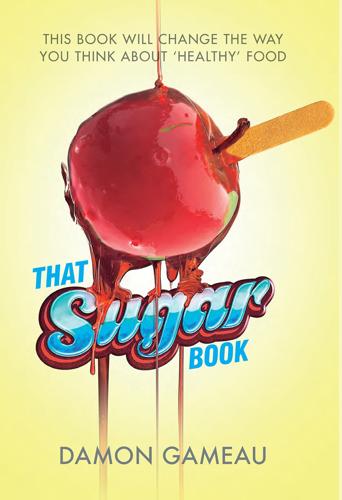
That Sugar Book: This Book Will Change the Way You Think About 'Healthy' Food
by
Damon Gameau
Published 12 Mar 2015
New research suggests that the calories from sugar, and fructose in particular, behave very differently from other calories (see here for a more detailed explanation). UNDERSTANDING INSULIN Before we find out the details of what sugar did to my body, we need to talk about insulin. For a non-scientist, insulin is the Rubik’s Cube of hormones. I am not even going to pretend to understand all of its functions. I do know, however, that it controls what our body does with the food we eat, deciding whether to burn it for energy or to store it (this is known as ‘fuel partitioning’ in science speak). Insulin and glucose (the sugar that most foods break down to) have a very close relationship.

The Making of Karateka: Journals 1982-1985
by
Jordan Mechner
Published 26 Dec 2012
There’s no reason why not. This could be the time it doesn’t fizzle. The time I don’t sabotage myself. The time I finally gather my courage (for that’s what’s needed, when you strip away the excuses), burst across the line, break the tape, enter a bold new era. Or I could blow it… like I did with Asteroids, with Rubik’s Cube, with Deathbounce. Not a chance. Not. A. Chance. When I raise my glass on New Year’s eight weeks from now, I’ll look back on 1983 and say: This was the year I made the jump. November 7, 1983 Ten hours on Karateka today. My first ten-hour day since summer. It helps that I’m sick, and therefore room-bound.

The Music of the Primes
by
Marcus Du Sautoy
Published 26 Apr 2004
In 1735, Euler wrote that ‘So much work has been done on the series that it seems hardly likely that anything new about them may still turn up … I, too, in spite of repeated effort, could achieve nothing more than approximate values for their sums.’ Nevertheless, Euler, emboldened by his previous discoveries, began to play around with this infinite sum. Twisting it this way and that like the sides of a Rubik’s cube, he suddenly found the series transformed. Like the colours on the cube, these numbers slowly came together to form a completely different pattern from the one he had started with. As he went on to describe, ‘Now, however, quite unexpectedly, I have found an elegant formula depending upon the quadrature of the circle’ – in modern parlance, a formula depending on the number π = 3.1415 … By some pretty reckless analysis, Euler had discovered that this infinite sum was homing in on the square of π divided by 6: The decimal expansion of , like that of π, is completely chaotic and unpredictable.
…
This sort of discovery is very different to the thunderbolt discovery of the Riemann Hypothesis or Gauss’s discovery of a connection between primes and logarithms. The Lucas—Lehmer test is not a pattern that will emerge through experiment or numerical observation. They discovered this by playing around with what it means for 2n − 1 to be prime, continually turning the statement like a Rubik’s cube until suddenly the colours come together in a new way. Each turn will be like a step in the proof. Unlike other theorems where the destination is clear from the outset, the Lucas—Lehmer test ultimately emerged by following the proof without quite knowing where it was going. Lucas had begun turning the cube but Lehmer successfully brought it into the simple form used today.
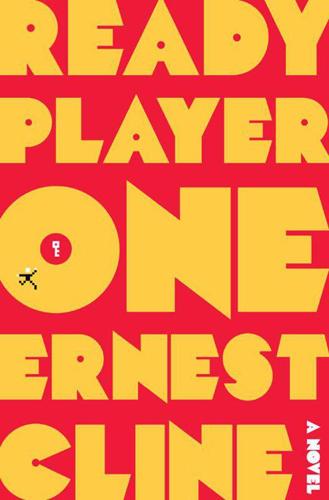
Ready Player One
by
Ernest Cline
Published 15 Feb 2011
Discworld, Mid-World, Riverworld, Ringworld. Worlds upon worlds. For the sake of zoning and navigation, the OASIS had been divided equally into twenty-seven cube-shaped “sectors,” each containing hundreds of different planets. (The three-dimensional map of all twenty-seven sectors distinctly resembled an ’80s puzzle toy called a Rubik’s Cube. Like most gunters, I knew this was no coincidence.) Each sector measured exactly ten light-hours across, or about 10.8 billion kilometers. So if you were traveling at the speed of light (the fastest speed attainable by any spacecraft inside the OASIS), you could get from one side of a sector to the other in exactly ten hours.
…
I opened the door and stepped out. It was like stepping out of a time machine. Several NPCs milled around, all dressed in mid-1980s attire. A woman with a giant ozone-depleting hairdo bobbed her head to an oversize Walkman. A kid in a gray Members Only jacket leaned against the wall, working on a Rubik’s Cube. A Mohawked punk rocker sat in a plastic chair, watching a Riptide rerun on a coin-operated television. I located the exit and headed for it, drawing my sword as I went. The entire surface of Middletown was a PvP zone, so I had to proceed with caution. Shortly after the Hunt began, this planet had turned into Grand Central Station, and all 256 copies of Halliday’s hometown had been scoured and ransacked by an endless parade of gunters, all searching for keys and clues.

Dirty Work
by
Gabriel Weston
Published 5 Jun 2013
I hardly remember them but when they arrive I find that their boy, who is about my age, has become beautiful. I stand in front of him and think straight away that Tom is the best boy I have ever seen. My sister is a delicate thing who likes to play with dolls. And Tom’s brother has grey skin, and only wants to be fast at solving the Rubik’s cube, his wrists clicking, his fingers flicking at its coloured squares. So Tom and I go outside. And everything waits for us. The creek at the base of the yard, and trees as giant as all American things, and the forbidden vacant lot. Every summer’s day leading from that first one is for throwing ourselves against the world.
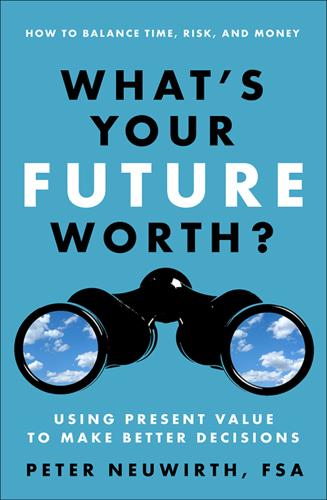
What's Your Future Worth?: Using Present Value to Make Better Decisions
by
Peter Neuwirth
Published 2 Mar 2015
Without a doubt, he was the smartest guy I ever worked for, and unlike me, he did pass all ten of his exams on the first try, even doubling up (taking two of the three-to-six-hour exams in the same exam session) two or three times throughout the process. Even more impressive than his exam record was the fact that he was the only person I know who solved Rubik’s Cube from scratch—with no advice, no math, and not even a pencil and paper to assist. All he used were his hands, his eyes, and his brains. The first time he solved it, it took him a week of twelve-hour days. The next time it was three days, then one day, and then pretty soon he was able to put the cube back together within a matter of minutes.
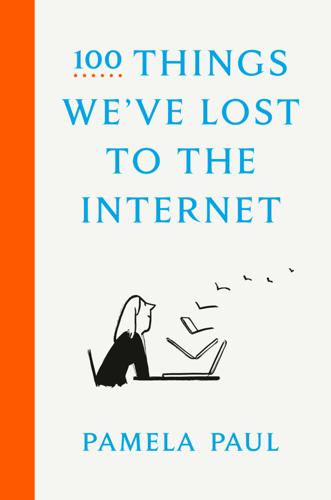
100 Things We've Lost to the Internet
by
Pamela Paul
Published 14 Oct 2021
The phone in the kitchen always had one of those long, coiled wires that attached the receiver to the base, the better to cook by or pull into a nearby nook in an attempt at privacy. You could spend hours endeavoring to redirect the coils that exasperatingly curled in the wrong direction midway, furling and unfurling the plastic-coated wires like a Rubik’s Cube. Small children, undeterred by warnings of sure death by electrocution, gnawed on them, drawn by what was an almost irresistible chewy texture and a very pleasant give. The semihard plastic tasted like toy packaging—yes, I remember it well. It was a big deal when you were old enough to answer the phone yourself, and you were issued clear instructions: Always answer with a bright “Hello” and say, “May I tell her who’s calling?”

The Subtle Art of Not Giving a F*ck: A Counterintuitive Approach to Living a Good Life
by
Mark Manson
Published 12 Sep 2016
Yet she’s scared to death of pushing her children away, scared to the point of asking, “How do I ask them to move out?” These are VCR questions. From the outside, the answer is simple: just shut up and do it. But from the inside, from the perspective of each of these people, these questions feel impossibly complex and opaque—existential riddles wrapped in enigmas packed in a KFC bucket full of Rubik’s Cubes. VCR questions are funny because the answer appears difficult to anyone who has them and appears easy to anyone who does not. The problem here is pain. Filling out the appropriate paperwork to drop out of med school is a straightforward and obvious action; breaking your parents’ hearts is not.

Ready to Run: Unlocking Your Potential to Run Naturally
by
Kelly Starrett
Published 20 Oct 2014
As daunting as such an overhaul might seem, I want to stress that it’s not only worth it, but also entirely doable. One tip for making these changes is to understand how a swimming coach like Terry Laughlin, the mastermind behind the Total Immersion program, likes to frame learning how to swim. First, he notes the complexity, saying, “Swimming is the Rubik’s Cube of movement skill—highly complex with many interdependent parts.” But then he goes on to explain that learning a highly complex activity like swimming is a gift that keeps on giving. If you attend one of Laughlin’s seminars, he is not going to have you jump in the pool, watch you swim, and then start trying to bend your working stroke into something else.
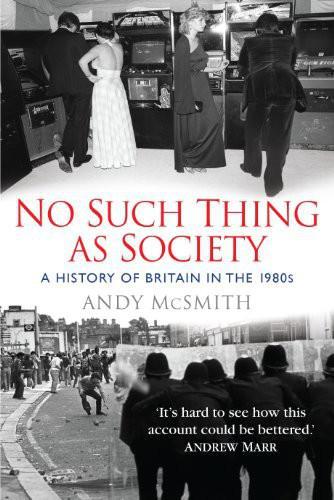
No Such Thing as Society
by
Andy McSmith
Published 19 Nov 2010
In 1980, barcodes spread for the first time beyond the grocery trade, when they were introduced by WH Smith. For male university students, the most interesting innovation of 1980 was the noisy, bulky Space Invaders machines that turned up in every student bar. For teenage schoolchildren, the biggest intellectual challenge of 1980 was trying to solve Rubik’s Cube. This new craze was a three-dimensional puzzle, devised in the 1970s by a Hungarian sculptor and licensed by Ideal Toys in 1980, comprising six faces covered with nine stickers in six different colours, which could be turned independently, mixing the colours to one of 43,252,003,274,489,856,000 permutations.
…
Ian ref1, ref2 Palestine Liberation Organization ref1 Parker Bowles, Camilla ref1, ref2 Parkinson, Cecil ref1, ref2, ref3, ref4, ref5 Philip, Prince ref1 Planer, Nigel ref1, ref2 The Pogues ref1 The Police (band) ref1 see also Sting police and law enforcement ref1, ref2, ref3, ref4, ref5, ref6, ref7, ref8, ref9, ref10, ref11, ref12 Hillsborough disaster ref1, ref2, ref3 miners’ strike ref1, ref2, ref3 Northern Ireland and the IRA ref1, ref2, ref3 racism and race riots ref1, ref2, ref3, ref4, ref5, ref6, ref7, ref8, ref9 see also Yorkshire Ripper case poll tax ref1, ref2, ref3 see also taxes pornography ref1, ref2 Portillo, Michael ref1, ref2, ref3, ref4, ref5 Powell, Enoch ref1, ref2, ref3, ref4 Prior, James ref1, ref2, ref3, ref4, ref5, ref6, ref7, ref8 Private Eye ref1, ref2, ref3, ref4, ref5, ref6, ref7 privatization ref1, ref2, ref3, ref4, ref5, ref6, ref7 Proctor, Harvey ref1, ref2 property market ref1, ref2, ref3, ref4 Public Sector Borrowing Requirements (PSBR) ref1, ref2 Pym, Francis ref1, ref2, ref3, ref4 R racism and race riots ref1, ref2, ref3, ref4, ref5, ref6, ref7, ref8, ref9 see also ethnic minorities; immigrants and immigration Reagan, Ronald ref1, ref2, ref3, ref4, ref5, ref6 Red Wedge ref1, ref2 Rhodes, Nick ref1 Richardson, Miranda ref1 Richardson, Peter ref1 Ridgeley, Andrew ref1 Ridley, Nicholas ref1, ref2, ref3, ref4, ref5, ref6, ref7 Rimington, Stella ref1, ref2 Roberts, Alfred ref1 Roberts, Captain Hilarian ref1 Rodgers, Bill ref1, ref2, ref3 Rowbotham, Sheila ref1 Royal Nay ref1, ref2, ref3, ref4, ref5 destroy General Belgrano ref1 HMS Coventry ref1 HMS Sheffield ref1, ref2 HMS Sir Galahad ref1 Royal Ulster Constabulary (RUC) ref1 Rubik’s Cube ref1 Runcie, Robert ref1, ref1, ref2, ref3, ref4 Rushdie, Salman ref1 S Sabra and Chatila massacres ref1 Sanderson, Tessa ref1 Sands, Bobby ref1, ref2 SAS (Special Air Service) ref1, ref2 The Satanic verses ref1 Saunders, Jennifer ref1, ref2 Saward, Jill ref1 Sayle, Alexei ref1, ref2 Scargill, Arthur ref1, ref2, ref3, ref4, ref5, ref6, ref7, ref8, ref9, ref10, ref11, ref12 see also miners’ strike Scarman, Lord ref1 Schmidt, Helmut ref1, ref3 Scottish National Party ref1 The Secret Policeman’s Ball ref1 Shah, Selim ‘Eddie’ ref1, ref2 Shand Kydd, Frances ref1 Sharon, Ariel ref1 Short, Clare ref1 Sinclair, Clive ref1, ref2, ref3 Sinn Fein ref1, ref2, ref3 see also IRA Sky television ref1 Smith, John ref1, ref2, ref3, ref4, ref5 Smith, Mel ref1 The Smiths ref1 Soames, Christopher ref1 Social Democratic and Labour Party ref1, ref2, ref3 Social Democratic Party (SDP) ref1, ref2, ref3, ref4, ref5, ref6 Society of Graphical and Allied Trades (SOGAT) ref1, ref1 South Georgia ref1, ref2 see also Falklands war Southall riots ref1 Soviet Union ref1, ref2, ref3, ref4, ref5 Space Invaders ref1 Spandau Ballet ref1, ref2 Special Patrol Group (SPG) ref1, ref2 The Specials (Special AKA) ref1, ref3 Spencer, Diana see Diana, Princess Spencer, Earl ref1 spin doctoring ref1, ref2 Spitting Image ref1, ref2 sport ref1 cricket ref1 Olympics ref1 see also football St Paul’s riots ref1 Stalker inquiry ref1 Steel, David ref1, ref2, ref3, ref4 steelworkers see British Steel Stephenson, Pamela ref1 Sting ref1, ref2, ref3 Stock Exchange see banking The Stone Roses ref1 Strange, Steve ref1 strikes see miners’ strike; newspaper industry; unions Sugar, Alan ref1, ref2 Sullivan, John ref1, ref2 Sun ref1, ref2, ref3, ref4, ref5, ref6, ref7, ref8, ref9, ref10, ref11, ref12, ref13, ref14, ref15, ref16, ref17, ref18, ref19, ref20, ref21, ref22, ref23 Falklands war ref1, ref2, ref3, ref4 Sunday Express ref1 Sunday Telegraph ref1, ref2 Sunday Times ref1, ref2, ref3, ref4, ref5, ref6, ref7, ref8, ref9, ref10 Sutcliffe, Peter see Yorkshire Ripper case Sutcliffe, Sonia ref1, ref2 T Tapsell, Sir Peter ref1 Tatchell, Peter ref1 Tatler ref1, ref2 taxes ref1, ref2, ref3, ref4, ref5, ref6, ref7, ref8, ref9, ref10 Taylor, Andy ref1 Taylor, John ref1, ref2 Taylor, Lord (Hillsborough inquiry) ref1 Taylor, Roger ref1 Tebbit, Norman ref1, ref2, ref3, ref4, ref5, ref6, ref7, ref8, ref9, ref10 television and film ref1, ref2, ref3, ref4, ref5 Channel 4 ref1 comedy ref1 TV-am ref1, ref2 see also BBC; programmes by name Terrence Higgins Trust ref1, ref2 Thatcher, Carol ref1, ref2, ref3 Thatcher, Denis ref1, ref2, ref3, ref4, ref5, ref6, ref7 Thatcher, Margaret ref1, ref2, ref3, ref4, ref5, ref6, ref7, ref8, ref9, ref10, ref11, ref12, ref13, ref14, ref15, and apartheid ref1 Broadcasting Act ref1 campaign for party leadership ref1 character and reputation ref1 Ethiopia ref1, ref2, ref3 Falklands war ref1, ref2, ref3, ref4, ref5, ref6, ref7, ref8, ref9, ref10 family ref1, ref2, ref3, ref4 football hooliganism ref1, ref2 Germany and reunification ref1, ref2, ref3 immigration and race riots ref1, ref2 leadership challenged ref1, ref2 and local authorities ref1, ref2, ref3 miners’ strike ref1, ref2, ref3, ref4, ref5, ref6 Moscow Olympics ref1, ref2 NHS and education ref1, ref2 Northern Ireland and IRA ref1, ref2, ref3, ref4, ref5, ref6 nuclear arms ref1 poll tax ref1 Spitting Image puppet ref1, ref2 wins 1979 election ref1, ref2 Yorkshire Ripper case ref1 see also Conservative Party; economy; European Union; privatization; unions Thatcher, Mark ref1, ref2, ref3 Thompson, Daley ref1 Thompson, E.P. ref1 Thomson, Kenneth ref1 Thorneycroft , Lord ref1 The Times ref1, ref2, ref3, ref4, ref5, ref6, ref7, ref8 Today ref1, ref2 Tomlinson, Ricky ref1 Torvill and Dean ref1 Tottenham riots ref1 Toxteth riots ref1, ref2 Trade Union Congress (TUC) ref1, ref2, ref3, ref4 trade unions see unions Transport and General Workers Union ref1, ref2, ref3, ref4, ref5, ref6, ref7, ref8 Trotskyists see Militants TV-am ref1, ref2 U Uref1 ref2 UBref1 ref2 Ulster Unionist Party ref1, ref2, ref3, ref4 unemployment ref1, ref2, ref3, ref4, ref5, ref6, ref7 Union of Democratic Mineworkers (UDM) ref1 unions ref1, ref2, ref3, ref4, ref5, ref6, ref7, ref8, ref9, ref10, ref11, ref12, ref13, ref14, ref15, ref16, ref17, ref18, ref19, ref20 broadcasting unions ref1 National Union of Miners (NUM) ref1, ref2, ref3, ref4, ref5, ref6, ref7, ref8, ref9, ref10 newspaper industry ref1, ref2 see also miners’ strike; Scargill, Arthur; unions by name United States of America ref1, ref2, ref3, ref4, ref5 banking ref1, ref2, ref3, ref4, ref5, ref6 Mark Thatcher ref1 music ref1, ref2, ref3 Ure, Midge ref1, ref2, ref3, ref4 V Vaz, Keith ref1, ref2, ref3 Venables, Terry ref1 Vestey family ref1 Video cassette recorders ref1 Vietnamese ‘boat people’ ref1 W wages ref1, ref2, ref3, ref4, ref5, ref6, ref7, ref8, ref9, ref10, ref11 see also unions Walker, Peter ref1, ref2, ref3, ref4, ref5, ref6 Walters, Alan ref1, ref2, ref3, ref4 Warsaw Pact ref1, ref2 Weller, Paul ref1, ref2 Weston, Simon ref1 Westwood, Vivienne ref1 Wham!
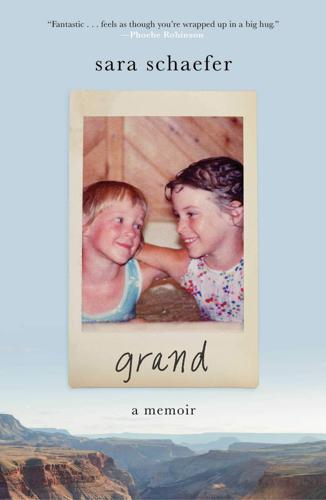
Grand: A Memoir
by
Sara Schaefer
Published 10 Aug 2020
“Sometimes we’ll have a ton of space for everyone to spread out, and sometimes we will be crowded together on a tiny beach.” After arriving at Sticky Beach, our first camp, Tyler gave a quick lesson on how to set up our tents and cots. I was overwhelmed by the number of poles and strings and flaps. “See? Pretty easy,” Tyler said, with the tone of a ten-year-old who just solved a Rubik’s Cube in thirty seconds. I knew it would not be easy at all, and I also knew that setting up a tent would be the first test of Ross’s and my relationship. Would this be a trip where we bickered constantly, like we did as children? Or would this be a strengthening of our sisterly bonds? Everyone knows that assembling a tent with another human being is the single biggest threat to a relationship.
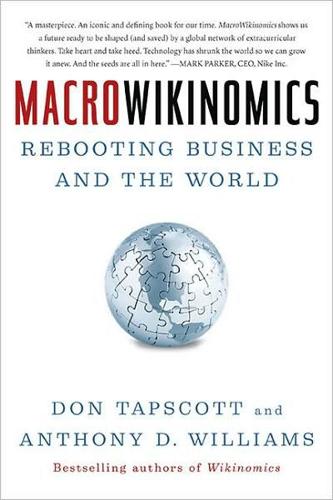
MacroWikinomics: Rebooting Business and the World
by
Don Tapscott
and
Anthony D. Williams
Published 28 Sep 2010
That’s a pretty big idea, so here are the basics. Imagine that all of life’s complexity could be boiled down to a library of interoperating components. The basic fundamentals of life, all indexed, open to the public, and waiting to be reassembled into new creations in the same fashion as one might twist and scramble a Rubik’s cube. Call it the open-source library of life. Now picture an Olympic-size gymnasium full of lab students building new organisms and life forms. It’s not a science fiction movie; it’s for real. And every year since 2004, thousands of lab students from around the world gather at MIT for the International Genetically Engineered Machines Competition.
…
The bottom line is that the opportunity to bring customers, suppliers, and other third parties into the enterprise as co-creators of value presents one of the most exciting, long-term engines of change and innovation that the world has seen. But innovation processes will need to be fundamentally reconfigured if businesses and other organizations are to seize the opportunity. Just as you can twist and scramble a Rubik’s cube, customers and other collaborators will reconfigure and build on your products and services for their own ends. And whether we’re talking about government, health care, education, or beyond, static, immovable, noneditable items will be anathema—ripe for the dustbins of twentieth-century history. 2.

The Singularity Is Nearer: When We Merge with AI
by
Ray Kurzweil
Published 25 Jun 2024
People who are lacking a fully functional cerebellum due to injury or disease can still direct voluntary actions via the neocortex, but doing so requires focused effort, and they may suffer from coordination problems known as ataxia.[41] A key component of mastering physical skills is performing their constituent actions often enough to ingrain them in your muscle memory. Movements that once required conscious thought and focus start to feel automatic. This basically represents a shift from motor cortex control to more cerebellar control. Whether you are throwing a football, solving a Rubik’s Cube, or playing the piano, the less conscious mental effort you need to direct to the task, the better you are likely to perform. Your actions will be faster and smoother, and you can devote your attention to other aspects of success. When musicians have this mastery of their instrument, they can produce a given note as effortlessly and intuitively as ordinary people produce notes with their voice while singing “Happy Birthday.”
…
See also nanobots manufacturing, 188, 204 risks and perils, 281–82 surgeries, 244–45 rodents, 77 Roosevelt, Franklin D., 128 Rosenblatt, Frank, 14, 27–28 Roser, Max, 149 Ross, Hugh, 98 Routledge, Clay, 115–16 Rubik’s Cube, 31 Ruby (programming language), 50 rule-based systems, 14–19, 40 rule class 1, 83, 83–84 Russia, 269, 280 Rutledge, Pamela, 115 Rutter, Brad, 64 S Sahara Desert, 175 Sandberg, Anders, 62, 104, 268–69, 295n sanitation, 111–12, 122, 127–28, 128 Santillana, Mauricio, 242 SARS (severe acute respiratory syndrome), 272 SARS-CoV-2, 273.
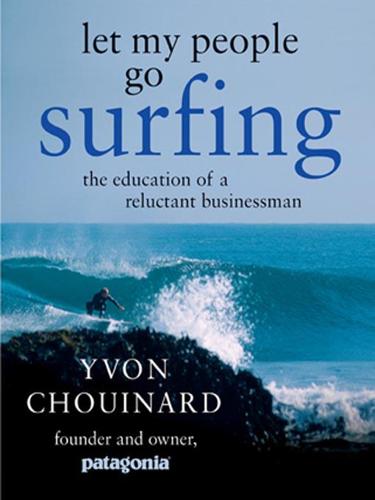
Let My People Go Surfing
by
Yvon Chouinard
Published 20 Jun 2006
We never developed the mechanisms to encourage them to work together in ways that kept the overall business objectives in sight. Shooting line at Lago Fagnano. Tierra del Fuego, Argentina. Don’t try this with dentures! Doug Tompkins Several planning efforts had to be aborted; no one could solve the Rubik’s cube of matching market-specific product development with such a complex distribution mix. Organization charts looked like the Sunday crossword puzzle and were issued almost as frequently. The company was restructured five times in five years; no plan worked better than the last one. At one point we decided we needed another perspective, and Malinda and I, along with our CEO and CFO, sought the advice of a well-regarded consultant.

Racing the Beam: The Atari Video Computer System
by
Nick Montfort
and
Ian Bogost
Published 9 Jan 2009
Crane saw Atari VCS development less as a refinement of the gameplay in known interaction models and more as a challenge to make the highly constrained VCS hardware do new and exciting things. In Crane’s words, “I got more enjoyment out of discovering a new trick than from the game design itself. More often than not, I used this technique to lead me in a new direction of game design, and some of the tricks were to me as much an accomplishment as solving the Rubik’s Cube the first time.”11 Freeway, which Crane developed in 1981, offered an improvement on the techniques of same-screen sprite register rewrites (which Larry Kaplan had first used in Air-Sea Battle) and multicolored sprites (first used in the 1978 Superman) accomplished by changing both the sprite color 6 Pitfall!
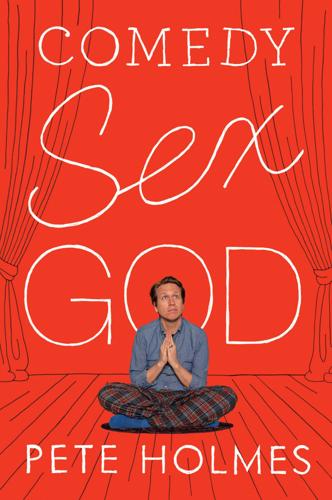
Comedy Sex God
by
Pete Holmes
Published 13 May 2019
I used to think Catholics prayed over and over as a punishment for shoplifting or going to second base, or that they prayed the same prayer more than once to make sure God would hear them. But now I understood it differently: you prayed the same prayer over and over not so God would hear you, but so you would hear God. As someone whose mind is plagued by endlessly looping pop songs, radio jingles, and the Chili’s baby back ribs song, the idea of giving my brain a Rubik’s cube to settle it down so I could sneak around it and experience some peace made a lot of sense. Ram Dass said that “the mind is a wonderful servant but a terrible master.” In church, we had a different word for it. We called it the devil. The devil—red and goateed, you’re picturing him correctly—was a liar and a thief, but now that rascally demon was starting to feel like another metaphor.

Leave the World Behind
by
Rumaan Alam
Published 15 Dec 2020
His tone conveyed his respect for his mother’s work. She died of cancer—liver, stomach, pancreas—probably from handling the chemicals women like her used to make their hair respectable. “Stephen Johnson. Gone now, but what a life.” “I guess it’s like having a green thumb. Or being good at doing the Rubik’s cube. Some people can make money, some people can’t.” She knew who she and Clay were. This was one of G. H.’s hobbyhorses. “That’s the conventional wisdom. You have to ask yourself why that is. Who wants you to believe that it’s not possible to get, if not rich, at least comfortable? It’s a skill.

This Is How They Tell Me the World Ends: The Cyberweapons Arms Race
by
Nicole Perlroth
Published 9 Feb 2021
Watters figured it would be cheaper to bring him to Virginia than keep sending thousands of dollars’ worth of Western Union payments to New Zealand. So Watters offered McManus a job and a room back at his Hacker Hut. McManus showed up a few weeks later with his computer, a Rubik’s cube, a backpack, and a black T-shirt that read SOMEONE SHOULD DO SOMETHING. As roommates, the gregarious cowboy with a penchant for Miller Lite and the quiet Kiwi with the Rubik’s cube were the ultimate odd couple. But they hit it off. And with their nights free, McManus began to teach Watters the art of the hack. Watters had spent his entire career working for money. Hackers, McManus explained, aren’t in it for money.

Empire of AI: Dreams and Nightmares in Sam Altman's OpenAI
by
Karen Hao
Published 19 May 2025
Microsoft, meanwhile, continued to deliberate. Nadella, Scott, and other Microsoft executives were already on board with an initial investment. The one holdout was Bill Gates. For Gates, Dota 2 wasn’t all that exciting. Nor was he moved by robotics. The robotics team had created a demo of a robotic hand that had learned to solve a Rubik’s Cube through its own trial and error, which had received universally favorable coverage. Gates didn’t find it useful. He wanted an AI model that could digest books, grasp scientific concepts, and answer questions based on the material—to be an assistant for conducting research. OpenAI had only one project that approached fitting the bill: a large language model called GPT-2 that was capable of generating passages of text that closely resembled human writing.
…
See also regulations pure language hypothesis, 129–30, 131, 158–59, 234, 318 Q Q*, 373–74 quantum computing, 141 Queer in AI, 161, 418 Quilicura, Chile, 285–88, 290, 296–99 Quora, 7, 183, 321, 324 R racism, 52–53, 56, 91, 108–9, 114, 161–64 Radford, Alec, 121–24, 126, 137 CLIP, 235 departure of, 406 GPT-1, 123, 124, 235 GPT-2, 135 Raji, Deborah, 56–57, 108, 161, 238, 306–7, 310–12, 419–20 Ralston, Geoff, 34, 36, 142 Ramesh, Aditya, 235, 236 Ramos, Sonia, 281–82, 284–85, 295 rapid generalization, 154 Raven, 279 reality distortion field, 34 Reddit, 34, 151, 163 redistribution of power, 418–21 “red teaming,” 179–80, 380 Regalado, Antonio, 186, 187 regulations (regulatory policy), 25, 27, 84, 86, 134, 136, 265, 272, 301, 303–4, 306–7, 311–12, 357, 358, 384 reinforcement learning from human feedback (RLHF), 123, 137, 146, 155, 176, 213–23, 245, 248, 315, 381, 387 Remotasks, 203–4, 218–23, 416 Renaldi, Adi, 186 renewable energy, 77, 275, 277 resiliency screening, 208 ResNet, 309–10 Retro Biosciences, 186–87 Rick and Morty (cartoon), 68 Rickover, Hyman G., 144 Rihanna, 1 Roberts Companies, 29 Robinson, David, 358 Roble, James, 329 robotics, 66, 69, 71, 130, 150, 156, 321 Rodríguez, Tania, 289–90 rogue AI, 55, 56, 145, 230, 231–32, 250, 306, 314, 319–20, 419 Roose, Kevin, 112, 264 Rose, Charlie, 40 Rosenblatt, Frank, 90, 94–95, 97 Rosewood Hotel dinner, 28, 46, 47, 48, 55 Rubik’s Cube, 71 Russia, 146 Ukraine war, 52, 191 Rwanda, 102, 260 S Safe Superintelligence, 405 safety. See AI safety Salinas, Alejandra, 290–91 Sama AI, 190–92, 206–13, 218–19, 242, 416 Santiago, Chile, 271–74, 285, 287–88, 295–96, 299–300 Scale AI, 195 data annotation, 202–6, 213–14 payment systems, 204–5 RLHF projects, 218–23 scaling, 115–16, 117–20, 130–32, 146, 160–61 “hate scaling laws,” 137–38 scaling laws, 116, 123, 150, 156–57, 175, 177–78, 306 Scallion, 375, 378–82 Schmidt, Florian Alexander, 196–97 Schulman, John, 258, 387, 404 InstructGPT, 214–17, 246–47 Schumer, Chuck, 43, 69, 311–12, 419 Scoble, Robert, 33 Scott, Kevin, 4, 68, 71, 72, 182, 247, 266–67, 270, 344 Sears, Mark, 206, 212–13 Securities and Exchange Commission (SEC), 384, 385, 403 Sedol, Lee, 59 self-driving cars, 100, 107–8, 141 data annotation, 193–95, 202–6, 214–15 Seligman, Nicole, 376 SemiAnalysis, 268, 285 Senate Judiciary Hearing, 301–3, 307–9, 314–15 Sequoia Capital, 32 servers.
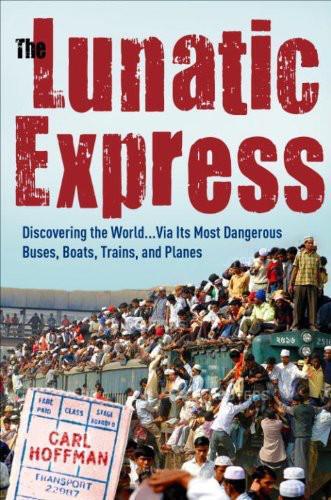
The Lunatic Express
by
Carl Hoffman
Published 16 Mar 2010
There was nothing to do, nowhere to go. No one read, and passengers barely spoke; on a bus your seat holds you prisoner. My seatmates were a string of Marias—people traveling unbelievably long rides for short visits with family or for work. Vendors swarmed on board at every stop, hawking grilled corn and hot sodas and Rubik’s Cubes. “Jugo! Cola! Esta bien!” A stream of salesmen got on, talked and talked, holding up bottles of little green pills or small pieces of candy. “My product is better!” they all said, walking down the aisle, now filled to standing room only, passing out samples, talking some more, then collecting a few coins or taking the samples back.

Personal Investing: The Missing Manual
by
Bonnie Biafore
,
Amy E. Buttell
and
Carol Fabbri
Published 24 May 2010
You can search for funds by style or size by using the site’s Fund Screening tool (http://tinyurl.com/ yypeg7). Many of Morningstar’s features are free simply by registering with the site. Some of its advanced features are subscription based, but they offer a 14-day free trial. Morningstar’s style box is like one side of a Rubik’s cube. The columns show investment style, while the rows show company size. Each box in the style box is a combination of an investment style and company size. Here are the three investment styles Morningstar shows in its style box: • Growth, as the name implies, invests in growing companies, whose stock prices increase in value as the company sales and earnings increase.
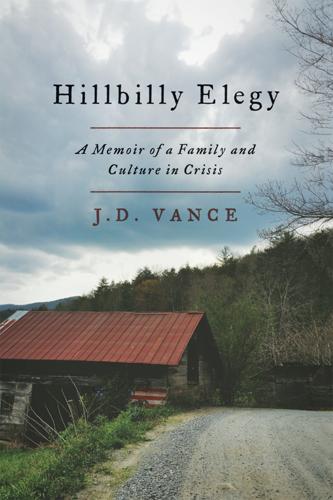
Hillbilly Elegy: A Memoir of a Family and Culture in Crisis
by
J. D. Vance
Published 27 Jun 2016
That’s the uneasy truce I’ve struck with myself, and it works for now. People sometimes ask whether I think there’s anything we can do to “solve” the problems of my community. I know what they’re looking for: a magical public policy solution or an innovative government program. But these problems of family, faith, and culture aren’t like a Rubik’s Cube, and I don’t think that solutions (as most understand the term) really exist. A good friend, who worked for a time in the White House and cares deeply about the plight of the working class, once told me, “The best way to look at this might be to recognize that you probably can’t fix these things.

Is It Just Me?
by
Miranda Hart
Published 14 Apr 2012
I don’t want to be thirty-eight and so obsessed with twittering at my followers (whom I have NEVER MET) and getting poked at that I lose the ability to really LIVE. Please remember that you were very happy before you got into all this techno-business. You may bang on about how I need to learn things from the future, but you’d do very well to learn a few things from the past. And if you really want some kind of technology, what’s wrong with the Rubik’s cube? That is HARD. *punches air, collapses exhausted to the floor* Phew! Gosh, that was a jolly good bit of public speaking, wasn’t it? I’m very talented. I am clearly wasted as an office manager and should defo-pants be prime minister. ‘You can learn from the past.’ I like that. I am pleased with that and I am glad I have made my point.

Makers
by
Chris Anderson
Published 1 Oct 2012
Hollywood, it turns out, has ruined robotics for kids: they expect laser-armed humanoid machines that can transform into trucks. Meanwhile, after an hour of assembly and programming, the Mindstorms rover could only roll forward and bounce feebly off a wall. We looked online to see what others were doing with Mindstorms, and saw that hobbyists had already made everything from robotic Rubik’s Cube solvers to working photocopiers. We wanted to invent something new, but there was no way we could do that sort of thing, or anything even close to it. The kids lost interest after lunch. Okay, there was always the plane. On Sunday we took it to a park. I tossed it in the air and promptly flew it into a tree.

Private Island: Why Britain Now Belongs to Someone Else
by
James Meek
Published 18 Aug 2014
The piloti – stilt-like struts cut in from the building’s outside edge at ground level – of the high towers are shared with Le Corbusier’s modernist étalon, the Marseille Unité d’Habitation (which is smaller), but the most striking feature of the blocks, to the non-architect, are the superfluous details that depart from Le Corbusier’s functional modernism: the flying cornices, concrete frames like giant handles that jut from the tower roofs, and the frog-green bosses studding the beige brick façades. The initial effect is of some vast, elegant set of combination locks, or duochrome Rubik’s cubes, poised at any moment to whirr and counterspin, floor by floor, to trigger the catch on some deeper, hidden secret. Yet familiarity humanises it. You become aware not only of how soaked in light it is but of the architects’ legacy to the people who live there. Close to Roman Road is a crescent of red brick bungalows for the elderly, grouped around a garden with a fountain and a bronze sculpture by Elizabeth Frink, The Blind Beggar and His Dog.

A Burglar's Guide to the City
by
Geoff Manaugh
Published 17 Mar 2015
Rather, Alizade works in the niche world of the design of safe rooms—more popularly known as panic rooms. Alizade greeted me at the front door in jeans and a half-zip black fleece sweater. He is built more like a linebacker than a businessman. He is stout, broad-shouldered, and has large hands; he gestured with them often as he spoke, twisting and turning them as if solving an invisible Rubik’s Cube in order to explain how his products were made. Despite his chosen field of security design and his physical resemblance to someone more likely to be leading tours through the Alaskan outback, he is jovial, prone to quick jokes and laughter. After graduating with an engineering degree from Auburn University, and following a stint in Vietnam, Alizade joined the New Jersey State police force.

Heart: A History
by
Sandeep Jauhar
Published 17 Sep 2018
Our professor told us that if ever, as doctors, we had to insert a needle into a patient’s chest to drain fluid, the right ventricle is the first chamber we would hit. A few snips and we released the heart from its beige scaffolding. A lab mate placed it on the cadaver’s forearm. “This guy really wears his heart on his sleeve,” he said. Gripping the organ like a Rubik’s Cube, I poked my fingers into the thin-walled central veins. It was hard not to lapse into thinking that it was just a piece of meat, a rubberized toy. The left ventricle had thick walls, a sign of high blood pressure. The inside of the right ventricle was a dense morass of fibers. Maybe there were stories written in that mossy tangle, but I didn’t see any.

The Actual One: How I Tried, and Failed, to Remain Twenty-Something for Ever
by
Isy Suttie
Published 28 Jan 2016
I often like the challenge of “making the best of it.” But this was potentially keeping myself in a situation that I knew, and I suspect he knew, wasn’t completely right. I can’t begin to try to analyze the complexities of why it wasn’t quite right, and I also think I owe it to him not to try. We were like a Rubik’s Cube with one faulty panel—a turquoise one that shouldn’t be there—so that we could never be solved, and never be calm. Any relationship or friendship is open, of course—is, and should be, always ebbing and flowing—but ideally upon a steady foundation. We were on shaky ground. But how tempting to stay together!

The New Silk Roads: The Present and Future of the World
by
Peter Frankopan
Published 14 Jun 2018
Special Report: Growing up Fast (2018), p. 9. 25Turkmenistan.ru, ‘В Туркменистане открыт новый железнодорожный мост Туркменабат – Фараб’, 7 March 2017. 26AKIPress, ‘CTSO to help Tajikistan to reinforce its border with Afghanistan’, 11 June 2018; Novosti Radio Azattyk, ‘Состоялась первая встреча глав оборонных ведомств Кыргызстана и Узбекистана’,13 June 2018. 27Dana Omirgazy, ‘Shymkent hosts first Kazakh-Uzbek business forum’, Astana Times, 25 May 2018. 28Uzbekistan National News Agency, press release, ‘The Year of Uzbekistan in Kazakhstan and the Year of Kazakhstan in Uzbekistan will be held’, 16 September 2017. 29Uzbekistan National News Agency, Press release, ‘Uzbekistan and Kazakhstan: dynamic development of cooperation based on friendship and brotherhood’, 2 March 2018. 30AzerNews, ‘Trade turnover between Uzbekistan and Tajikistan doubles’, 22 June 2018. 31Tasnim News Agency, ‘Grounds Paved for Long-Lasting Cooperation between Iran, Azerbaijan: Official’, 4 June 2018. 32Pahjwok Afghan News, ‘Afghanistan, Tajikistan sign two co-operation accords’, 24 June 2018. 33Simon Parani, Let’s not exaggerate: Southern Gas Corridor prospects to 2030, Oxford Institute for Energy Studies Paper NG 135 (July 2018). 34Fawad Yousafzai, ‘Work on CASA-1000 power project in full swing: Tajik diplomant’, The Nation, 19 July 2018. 35Dispatch News Desk, ‘Kyrgyzstan keen to improve bilateral trade with Pakistan: Envoy’, 10 May 2018. 36TASS, ‘ЕАЭС и Иран завершают подготовку соглашения о зоне свободной торговли’, 9 April 2018. 37Nicholas Trickett, ‘Reforming Customs, Uzbekistan Nods Towards the Eurasian Economic Union’, The Diplomat, 26 April 2018. 38United Nations Office on Drugs and Crime, ‘President of Uzbekistan calls to develop reliable mechanisms of co-operation in Central Asia at the international conference in Samarkand’, 10 November 2017. 39See, for example, Raikhan Tashtemkhanova, Zhanar Medeubayeva, Aizhan Serikbayeva and Madina Igimbayeva, ‘Territorial and Border Issues in Central Asia: Analysis of the Reasons, Current State and Perspectives’, The Anthropologist 22.3 (2015), pp. 518–25; International Crisis Group, ‘Central Asia: Border Disputes and Conflict Potential’, Asia Report 33 (2002). 40For the draft agreement, see Kommersant, ‘Море для своих Пять стран договорились о разделе Каспия’, 23 June 2018. 41Bruce Pannier, ‘A landmark Caspian agreement – and what It resolves’, Qishloq Ovozi, 9 August 2018. 42Interfax, ‘Kyrgyzstan, Uzbekistan agree to swap land on border’, 14 August 2018. 43Astana Times, ‘Kazakhstan resolves all Central Asian border issues, announces Kazakh President’, 20 April 2018. 44Virpi Stucki, Kai Wegerich, Muhammad Mizanur Rahaman and Olli Varis, Water and Security in Central Asia. Solving a Rubik’s Cube (New York, 2014); Suzanne Jensen, Z. Mazhitova and Rolf Zetterström, ‘Environmental pollution and child health in the Aral Sea region in Kazakhstan’, Science of the Total Environment 206.2–3 (1997), pp. 187–93. 45Fergana Informationnov agentstvo, ‘Соляная буря превысила допустимую концентрацию пыли на северо-западе Узбекистана в шесть раз’, 27 May 2018; RIA Novosti, ‘Белая пыль неизвестного происхождения накрыла столицу Туркмении’, 28 May 2018. 46Matt Warren, ‘Once Written Off for Dead, the Aral Sea Is Now Full of Life’, National Geographic, 16 March 2018. 47United Nations Office for the Coordination of Humanitarian Affairs, ‘Drought grips large parts of Afghanistan’, 6 June 2018. 48Ben Farmer and Akhtat Makoli, ‘Afghanistan faces worst drought in decades, as UN warns 1.4 million people need help’, 22 July 2018. 49Igor Severskiy, ‘Water related problems of Central Asia: some results of the (GIWA) international water assessment program’, Ambio 33 (2004), pp. 52–62. 50Albek Zhupankhan, Kamshat Tussupova and Ronny.

The System: Who Owns the Internet, and How It Owns Us
by
James Ball
Published 19 Aug 2020
Even if real, she could face a huge backlash from the US government – if she published something false, those repercussions could be much worse. She opted to follow the story. Greenwald was sent to Hong Kong, where his as yet unknown source had made elaborate plans to meet: he would wait in a hotel foyer with a Rubik’s cube, and they would follow him without saying hello from there. But because Greenwald, while a hugely popular blogger and an experienced civil rights lawyer, had never worked as a news reporter, she insisted he be accompanied by the Guardian US’s veteran Washington DC editor Ewen MacAskill. Her newly hired security editor Spencer Ackerman would bolster the team working from New York.

Two and Twenty: How the Masters of Private Equity Always Win
by
Sachin Khajuria
Published 13 Jun 2022
If there are big weaknesses in the thesis or business plan, it’s likely that they will be revealed through the discussion. And the deal team will be the first to admit it. They want maximum buy-in, not narrow approval. If the deal goes wrong down the line, it should be a shock to everyone. Eventually, there is consensus around the table. Terms are tweaked, tactics are refined, the permutations of the Rubik’s Cube are assessed, and the investment committee and finally the Founder himself give the green light to proceed. It’s a thrilling, exhausting, typical outcome. And the beginning of at least five years of work. The project demonstrates the power of the Firm’s franchise, and the Founder loves it.
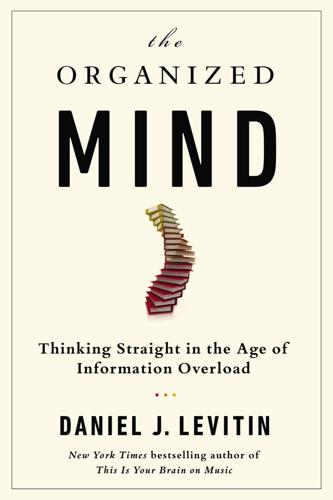
The Organized Mind: Thinking Straight in the Age of Information Overload
by
Daniel J. Levitin
Published 18 Aug 2014
Students who were stymied by a calculus problem the day it was presented are able to solve it more easily after a night’s sleep than an equivalent amount of waking time. New information and concepts appear to be quietly practiced while we’re asleep, sometimes showing up in dreams. A night of sleep more than doubles the likelihood that you’ll solve a problem requiring insight. Many people remember the first day they played with a Rubik’s Cube. That night they report that their dreams were disturbed by images of those brightly colored squares and of them rotating and clicking in their sleep. The next day, they are much better at the game—while asleep, their brains had extracted principles of where things were, relying on both their conscious perceptions of the previous day and myriad unconscious perceptions.
…
See statistics procrastination, 195–201, 209, 336–37, 444n298 prospect theory, 262 prostate cancer, 240–42, 244–48, 250, 258, 351–52 pseudo logic and pseudoscience, 225–26, 252 psychic powers, 346–47 psychology, 39, 262, 278 quality of life, 239–40, 241 racism, 153–54 radiation treatments, 257, 263 Raichle, Marcus, 38–39 railroads, 163–64, 269–70, 273, 460n269 Randall, David K., 191–92 Randi, James, 253, 346 randomization, 349 random sequences, 226–27 rare events, 256, 385–96 RBC Royal Bank, 274 reCAPTCHAs, 118–19 recency effect, 55, 408n56 regret, 264–66 rehearsal, 68–69, 374–75, 408n56 Reithofer, Norbert, 284 reminders, 124–25, 213, 301 Rentfrow, Jason, 196, 305, 376 representativeness heuristic, 228–29 research ethics, 348–49 resource limitations, 11, 19–20 risk assessment, 216, 221–22, 238–48, 264–66 Ritalin, 168, 171 Robinson, Marilynne, 375–76 Roman culture, 288 Rosch, Eleanor, 32, 56–57 Ross, Lee, xxii, 146–48, 339–40, 347 Rothbart, Mick, 154, 429n153 Rubik’s Cube, 185 rule of the designated place, 83, 83–86 RxList.com, 342 Sacks, Oliver, 92 Sand, George (Amantine Dupin), 283 Sandberg, Sheryl, 68 Sanger, Lawrence, 331, 333, 472n335 satisficing, 4–5, 276, 312 scheduling, 195–96, 211–14 Shultz, George, 156 Searle, John, 137–39, 141 selective focus, 18, 52, 177 selective migration, 196 selective windowing, 345 self-confidence, 200, 201, 429n153, 444n198 self-discipline, 208 self-presentation advantage, 148 Seneca the Younger, 14 sensory limitations, 165 September 11 terrorist attacks, 52–53, 456n256 serendipity, 377–78 shadow work, 19, 103, 341 Shakespeare, William, 292 Shannon, Claude, 311, 313–14, 316–18 Shapiro, Robert, 122, 124, 299 Shepard, Roger, 22, 58, 294, 304–5 Shinohara, Katsuto, 351 side effects, 231, 234, 239–41, 245–47, 265, 385, 391, 395 Simon, Herbert, 4 Simon, Paul, 73 Simons, Daniel, 12 Simons, Jonathan, 241 situational categories, 62 situational explanations, 145–46 Skinner, B.
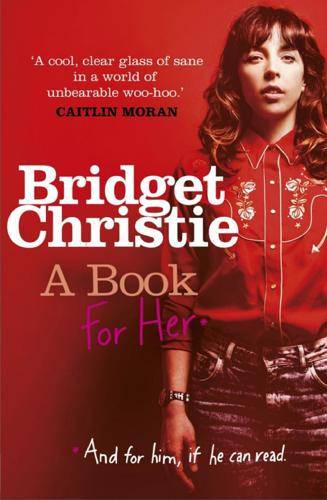
A Book for Her
by
Bridget Christie
Published 1 Jul 2015
She popularised the term ‘birth control’ and opened the first birth control clinic in America – didn’t she have any input? Was it all down to me? Crikey – I didn’t expect to ‘do’ feminism just with some puerile jokes about gendered pens! I was only trying to make people laugh. Not solve anything. I can’t even solve a Rubik’s cube. Perhaps someone could let Ban Ki-moon know. He’ll be so relieved. All this violence against women was really starting to get him down a bit. Then he said, ‘I see from your website you love waterproof jackets. Perhaps you could write a show about those next?’ as if gender politics, and all that that entails, couldn’t possibly generate enough material to sustain a second hour of comedy.

The Great Fragmentation: And Why the Future of All Business Is Small
by
Steve Sammartino
Published 25 Jun 2014
Only the tastemakers could afford the reach that goes with mass. We got to choose one of the options available on the shelf. We got to choose one of the few shows on free-to-air television. The system didn’t support niche like it does now. The cultural phenomena that resulted from the system were powerful indeed. The Rubik’s cube, breakdancing, BMX bikes, cabbage patch dolls, sitcoms, teenage mutant ninja turtles, video cassette recorders, the walkman, aerobics, legwarmers, Coke vs Pepsi, Band Aid, hair metal, Beverly Hills Cop, Nintendo, PAC-MAN and glow worms were all picked by someone else, someone who decided we needed them to enhance our human existence.

Flash Boys: A Wall Street Revolt
by
Michael Lewis
Published 30 Mar 2014
Speeding up his stock market order merely reduced the time it took for him to arrive in HFT’s various traps. “But how do you prove that a millisecond is irrelevant?” Brad asked. He threw the problem to the Puzzle Masters. The team had expanded to include Larry Yu, whom Brad thought of as the guy with the box of Rubik’s cubes under his desk. (The standard 3x3-inch cube he could solve in under thirty seconds, and so he kept it oiled with WD-40 to make it spin faster. His cube box held more challenging ones: a 4x4-incher, a 5x5-incher, a giant irregularly shaped one, and so on.) Yu generated two charts, which Brad projected onto the screen for the investors.

Fermat’s Last Theorem
by
Simon Singh
Published 1 Jan 1997
Strangely this autobiography was written in 1928, seventeen years after Loyd’s death. Loyd passed his cunning on to his son, also called Sam, who was the real author of the book, knowing full well that anybody buying it would mistakenly assume that it had been written by the more famous Sam Loyd Senior. Loyd’s most famous creation was the Victorian equivalent of the Rubik’s Cube, the ‘14–15’ puzzle, which is still found in toyshops today. Fifteen tiles numbered 1 to 15 are arranged in a 4 × 4 grid, and the aim is to slide the tiles and rearrange them into the correct order. Loyd’s offered a significant reward to whoever could complete the puzzle by swapping the ‘ 14’ and ‘15’ into their proper positions via any series of tile slides.

The Startup Wife
by
Tahmima Anam
Published 2 Jun 2021
The taxi swerves again and this time it’s me sliding over to his side. “I guess it didn’t occur to me. That’s shitty, I’m sorry.” By the time we roll up to the address, I’m in a foul mood. “I’m going to get a coffee,” I say, and disappear for an hour. When I get back, he’s in full Cyrus mode, talking Rubik’s cubes around the poor interviewer. The guy can’t get a word in edgewise, but instead of being offended, he is rapt, listening to Cyrus riffing on everything from climate change to online privacy. Lately, I’ve realized that because of the popularity of the platform, and because of what it is—a replacement for religion—people are looking to Cyrus for answers to the questions they ask themselves all the time.
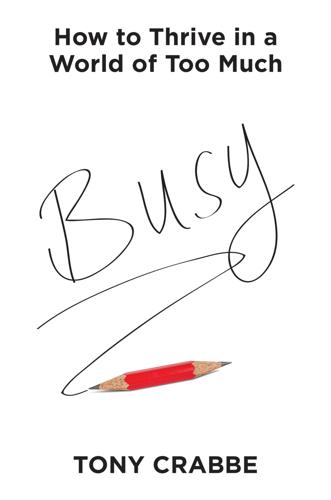
Busy
by
Tony Crabbe
Published 7 Jul 2015
Some of those problems require information, practice and skill development. Ronald Heifetz, a leadership expert, calls these types of changes technical problems.9 These are not necessarily simple, or unimportant, but there are recognized ways to address them. Examples of technical problems might range from completing the Rubik’s Cube in under a minute to landing a fighter jet on an aircraft carrier. They might be tough, but with enough learning and practice, you could succeed. Adaptive problems are a different matter. A problem is considered adaptive if there isn’t a correct way to solve it or a proven solution; there isn’t an instruction manual.

Crushing It!: How Great Entrepreneurs Build Their Business and Influence—and How You Can, Too
by
Gary Vaynerchuk
Published 30 Jan 2018
I was like, ‘Oh, my gosh, you can make money from brands that would wanna put their stuff on there?’ That was new to me.” It was summer 2015, and Dan scored his first brand deal by making a pitch on a website called FameBit, a marketing site where brands post offers to pay creatives to promote their products. He got paid around $250 to cut open a Rubik’s Cube, and then $1,000 to cut open a mattress. “I thought we had it made. A thousand dollars, and we’re just cutting open a mattress!” A few months later, he met Shaun “Shonduras” McBride (see Chapter 9), who told him that with their channel’s reach—they now had almost one million subscribers—they should be pitching the advertising agencies that run big influencer marketing campaigns.
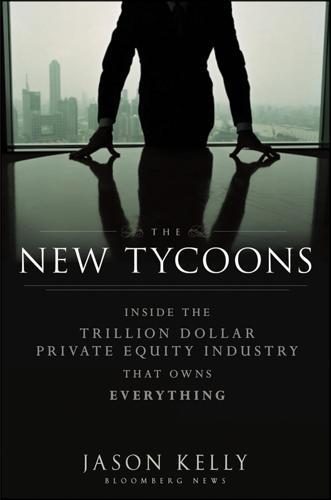
The New Tycoons: Inside the Trillion Dollar Private Equity Industry That Owns Everything
by
Jason Kelly
Published 10 Sep 2012
Funds are encouraged to invest in other funds’ deals. That means a team in Brazil can enlist New York colleagues specializing in consumer products on a specific deal and if everyone works together, some of the carry goes to New York, and the U.S. buyout fund has a chance to co-invest. “This is about taking the Rubik’s cube of industry expertise, product, and geography and turning it so its face best projects our strengths against an opportunity,” D’Aniello said. “Winning in this business is a game of inches. This collaborative approach empowers our firm’s business model, and our strong One Carlyle culture lubricates its successful execution.”

Perfect Sound Whatever
by
James. Acaster
Published 21 Aug 2019
I would not have given this album the time of day a year earlier but now it’s one of my favourite records of all time. After months of listening to new music every single day I needed something unlike anything I’d listened to before and I needed to hear melodies delivered in an unfamiliar fashion. It was like someone had taken what I knew an album to be and jumbled it like a Rubik’s Cube so it still made sense without anything being in its usual place. The opening to What Now? is a 9-minute-and-52-second-long track entitled ‘Guided Meditation’, which is literally 9 minutes 52 of guided meditation, presumably so we can clear our minds completely before listening to the rest of the record.
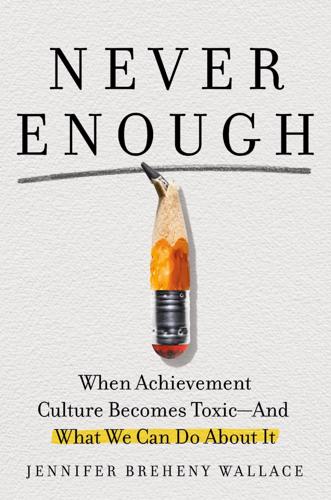
Never Enough: When Achievement Culture Becomes Toxic-And What We Can Do About It
by
Jennifer Breheny Wallace
Published 21 Aug 2023
Music competitions, dance competitions, arts competitions, and even high school bands have become more demanding, if not all-consuming. It’s hard to find a hobby—Minecraft, mountain biking, macramé—that can’t be turned into an exhausting pursuit of excellence. As a joke, my son and I once googled “Rubik’s Cube competitions”—yep, they exist, too. Busy schedules inhale all downtime, sucking up the idle after-school hours or weekend days once spent with friends and family. Birthday parties are missed for all-day chess tournaments or out-of-state lacrosse games. I remember my son’s travel soccer coach sending me a stern warning after my son missed a game to attend his great-grandmother’s ninetieth birthday party.

Barometer of Fear: An Insider's Account of Rogue Trading and the Greatest Banking Scandal in History
by
Alexis Stenfors
Published 14 May 2017
After a year of discussing morality with a lawyer, two years with a psychotherapist, and several more years talking about it with people I have met since, I am not sure whether I have come any closer to a definitive answer to the question ‘Why did you do it?’ Perhaps getting an answer was always less important than seeking an answer. CHAPTER 3 SUPERHEROES AND BEAUTY PAGEANTS For a derivatives trader such as myself, being able to accurately predict future LIBORs was as difficult as trying to solve a Rubik’s Cube for the first time. There were so many things that had to be taken into account when working out what the next move by the central bankers was going to be, and how many of these potential decisions had already been anticipated by the market (and by how much). Central bankers were mostly concerned about ensuring that the inflation rate reached a certain target.
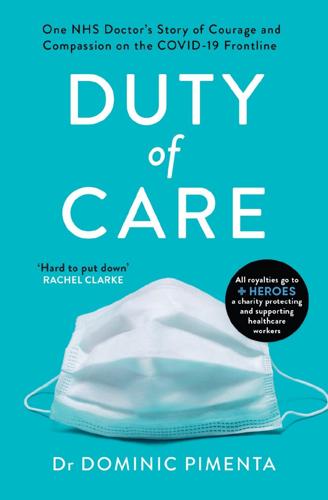
Duty of Care: One NHS Doctor's Story of the Covid-19 Crisis
by
Dr Dominic Pimenta
Published 2 Sep 2020
Nurses parachuting into the no-man’s land of intensive care, terrified in unfamiliar territory, and yet there they were, sleeves rolled up, ready to help. So what have we learnt? One, with the right mindset, we are capable of incredible things. We swept away bureaucracy and administrative chaff and were led by pure clinical need – hospitals moved internally like a Rubik’s Cube at high speed, building units, throwing up resuscitation areas and going above and beyond, and just kept going and going. It’ll be that much harder for good ideas to be shouted down as impossible when we’ve all witnessed this. Two, we know a lot more about coronavirus now than we did going in.

AI Superpowers: China, Silicon Valley, and the New World Order
by
Kai-Fu Lee
Published 14 Sep 2018
FOLDING BEIJING: SCIENCE-FICTION VISIONS AND AI ECONOMICS When the clock strikes 6 a.m., the city devours itself. Densely packed buildings of concrete and steel bend at the hip and twist at their spines. External balconies and awnings are turned inward, creating smooth and tightly sealed exteriors. Skyscrapers break down into component parts, shuffling and consolidating into Rubik’s Cubes of industrial proportions. Inside those blocks are the residents of Beijing’s Third Space, the economic underclass that toils during the night hours and sleeps during the day. As the cityscape folds in on itself, a patchwork of squares on the earth’s surface begin their 180-degree rotation, flipping over to tuck these consolidated structures underground.

Beginners: The Joy and Transformative Power of Lifelong Learning
by
Tom Vanderbilt
Published 5 Jan 2021
Howard, “Searching the Real World for Signs of Rising Population Intelligence,” Personality and Individual Differences 30, no. 6 (2001): 1039–58. “Pretty close to anything”: KSNV, “Fake Doctor, Rick Van Thiel, Says He Learned Surgical Procedures on YouTube,” News 3 Las Vegas, Oct. 7, 2015, news3lv.com. transmission of techniques: Maxwell Strachan, “Rubik’s Cube Champion on Whether Puzzles and Intelligence Are Linked,” HuffPost, July 23, 2015, www.huffingtonpost.com. Time-use data show: See, for instance, Jonathan Gershuny and Oriel Sullivan, Where Does It All Go? What We Really Do All Day: Insights from the Center for Time Use Research (London: Pelican, 2019).
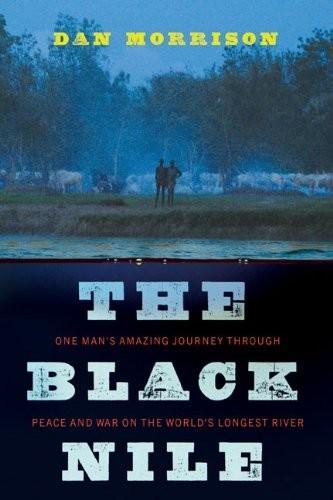
The Black Nile: One Man's Amazing Journey Through Peace and War on the World's Longest River
by
Dan Morrison
Published 11 Aug 2010
While rainfall causes things to be green, it’s also true that green—trees and grasses—sustains rain through the humidity it creates, and with fewer trees there’s less rain. And fewer clouds mean there’s more sunshine, more evaporation. It’s the same phenomenon that turned the Sahara from a savanna to desert.” “One hell of a Rubik’s Cube,” Schon said, distracted by the relentless flow of boda-bodas, mutatu minivan taxis and lorries. “Thanks, Perfesser.” Omar Wadda greeted us at his plain office and had us sign his guestbook. He was a little stocky, with eyeglasses and a head of receding white hair, and he exuded the easy competence of a career civil servant.

Truths, Half Truths and Little White Lies
by
Nick Frost
Published 7 Oct 2015
. *** Back home, high and cocky from my brush with the law, I poke my head around the door to the lounge and Mum and Dad are sat in silence, telly off. How long had they been there? How long were they planning on being there? In the middle of the room, in the middle of our mint-green carpet, was a giant lump, my giant lump of hash. It looks exactly like a brown Rubik’s cube but obviously a lot easier to solve. Trouble now breaks out. Not a row, just a kind of Category C rumble with a drug pro and con to-and-fro-type parent deal. To be fair they make a compelling argument but I’m high, the guys are waiting, and I’d like to be higher. My counter comes in the shape of a rat out.
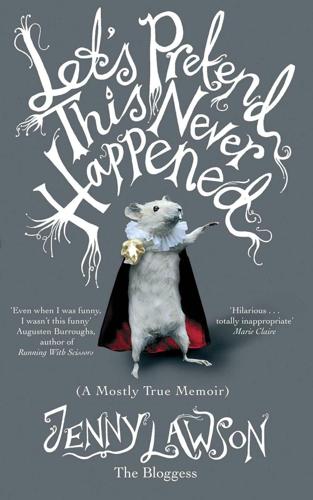
Let's Pretend This Never Happened (A Mostly True Memoir)
by
Jenny Lawson
Published 5 Mar 2013
We put heavy rocks all around the edges of the tarp and the vultures looked pissed, but I was so grateful I cried. Then I went inside and took a very, very long shower. When I came back out I realized that vultures are surprisingly strong, and that the blue plastic tarp had become a kind of vulture Rubik’s Cube, each of the birds trying a corner to get it all solved. I was having a nervous breakdown, but at least I was bringing the vulture community together. My friend Laura (yes, the same one who’d dragged me to wine country) noticed that my Twitter stream was filled with updates about vultures, and machetes, and dead dogs, and how glad I am that Cartoon Network exists, and so she called.

Beyond: Our Future in Space
by
Chris Impey
Published 12 Apr 2015
Unfortunately, the Volna rocket that was launched from a Russian submarine in June 2005 failed, and Cosmos 1 went to the bottom of the Barents Sea.17 Solar-sail development has continued, but the ambitions and the size of the sails have been scaled back. A team from NASA built NanoSail-D, based on the CubeSat specifications. CubeSat is a miniaturized satellite designed to spur space research by using standard components and off-the-shelf electronics. A CubeSat is a bit bigger than a Rubik’s Cube—10 centimeters on a side and weighing less than 1.3 kilograms. Most CubeSat launches have come from academia, but companies such as Boeing have built CubeSats, and amateur satellite builders have gotten their projects off the ground using crowdfunding campaigns on websites such as Kickstarter.

The Big Nine: How the Tech Titans and Their Thinking Machines Could Warp Humanity
by
Amy Webb
Published 5 Mar 2019
The G-MAFIA studied the Chinese cities where smart city initiatives were piloted—such as Rongcheng, Beijing, Shenzhen, Shanghai—and identified best practices to pilot in the United States. We now have a few American smart cities—Baltimore, Detroit, Boulder, and Indianapolis—that are testing out a wide range of AI systems and services. Networks of cubesats overhead—tiny satellites the size of a Rubik’s Cube—feed real-time data into AI systems that can recognize objects, unique light patterns, and heat signatures. This, in turn, allows city managers to predict power outages, monitor and reroute traffic, manage water reserves, and clear ice and snow off the roads. AI also helps them manage budgets and personnel throughout the year, surfacing entirely new ways to shave off fractions of expenditures at scale.

The Creativity Code: How AI Is Learning to Write, Paint and Think
by
Marcus Du Sautoy
Published 7 Mar 2019
And so although I make some apology for my Western-focused viewpoint, I think it will provide a suitable benchmark for the creativity of our digital rivals. Of course, human creativity extends beyond the arts: the molecular gastronomy of the Michelin-star chef Heston Blumenthal; the football trickery of the Dutch striker Johan Cruyff; the curvaceous buildings of Zaha Hadid; the invention of the Rubik’s cube by the Hungarian Ernö Rubik. Even the creation of code to make a game like Minecraft should be regarded as part of some of the great acts of human creativity. More unexpectedly creativity is an important part of my own world of mathematics. One of the things that drives me to spend hours at my desk conjuring up equations and penning proofs is the allure of creating something new.

Hate Inc.: Why Today’s Media Makes Us Despise One Another
by
Matt Taibbi
Published 7 Oct 2019
Hour after hour, I watched colleagues slave away three or four times a day to send out the Urgent News that Fred Thompson or Mike Huckabee or whoever had just given the same speech he’d given fifty times in a row. To pass the time I’d often read (in Iowa, I was hissed at by a campaign staffer for turning the pages of a Sports Illustrated too loudly) or else I’d do even dumber things (a Rubik’s cube earned me a rebuke in Houston). I finally learned that the only safe activity during filing hours was to do nothing. So I sat there, hour after hour, primary after primary, just thinking about what we were doing. By 2012 I had a theory of the presidential campaign as a complex commercial process.

Unmasking Autism: Discovering the New Faces of Neurodiversity
by
Devon Price
Published 4 Apr 2022
When it comes to special interests, Autistic brains are total sponges, absorbing facts and figures at a rate that seems kind of inhuman to neurotypical people. We can develop a special interest in nearly anything. Some of us learn to speak fluent Klingon; others memorize algorithms for solving Rubik’s cubes. My sister’s brain is a compendium of movie trivia and dialogue. My own special interests have included everything from bat biology to the history of the Tudor dynasty, to personal finance, to subreddits run by so-called men’s rights activists. Though the Diagnostic and Statistical Manual of Mental Disorders states that Autism is defined by having a “restricted” range of interests, some Autistic folks cycle through new special interests every couple of months and become polymaths in a variety of subjects.

Mapmatics: How We Navigate the World Through Numbers
by
Paulina Rowinska
Published 5 Jun 2024
We should define the distance we want to minimize, for example, the Euclidean distance or the average driving time. * If you’re not convinced, imagine that the three destinations are A, B, and C. Then, the possible routes are ABC, ACB, BAC, BCA, CAB, and CBA, which makes six routes in total. * Karl Menger is probably best known for Menger’s sponge, a fractal resembling a Rubik’s Cube with infinitely many holes. * In the rest of the chapter, I’ll be using my preferred gender-neutral alternative, ‘travelling salesperson problem’. * Julia Robinson’s career illustrates the obstacles faced by women in mathematics. After marrying a fellow mathematician, Raphael M. Robinson, she was unable to teach in the mathematics department at the prestigious University of California, Berkeley, because of the nepotism rule.

Clean Code: A Handbook of Agile Software Craftsmanship
by
Robert C. Martin
Published 1 Jan 2007
private boolean setArgument(char argChar) throws ArgsException { ArgumentMarshaler m = marshalers.get(argChar); if (m == null) return false; try { if (m instanceof BooleanArgumentMarshaler) setBooleanArg(m, currentArgument); else if (m instanceof StringArgumentMarshaler) setStringArg(m); else if (m instanceof IntegerArgumentMarshaler) setIntArg(m); } catch (ArgsException e) { valid = false; errorArgumentId = argChar; throw e; } return true; } --- private void setBooleanArg(ArgumentMarshaler m, Iterator<String> currentArgument) throws ArgsException { try { m.set(”true”); catch (ArgsException e) { } } Didn’t we just put that exception processing in? Putting things in so you can take them out again is pretty common in refactoring. The smallness of the steps and the need to keep the tests running means that you move things around a lot. Refactoring is a lot like solving a Rubik’s cube. There are lots of little steps required to achieve a large goal. Each step enables the next. Why did we pass that iterator when setBooleanArg certainly doesn’t need it? Because setIntArg and setStringArg will! And because I want to deploy all three of these functions through an abstract method in ArgumentMarshaller, I need to pass it to setBooleanArg.

Fortune's Formula: The Untold Story of the Scientific Betting System That Beat the Casinos and Wall Street
by
William Poundstone
Published 18 Sep 2006
From 1958 through 1974, he published only nine articles. In the following decade, before Alzheimer’s disease ended his career all too decisively, the total published output of Claude Shannon consisted of a single article. It was on juggling. Shannon also worked on an article, never published, on Rubik’s cube. The open secret at MIT was that one of the greatest minds of the twentieth century had all but stopped doing research—to play with toys. “Some wondered whether he was depressed,” said Paul Samuelson. Others saw it as part of an almost pathologically self-effacing personality. “One unfamiliar with the man might easily assume that anyone who had made such an enormous impact must have been a promoter with a supersalesman-like personality,” said mathematician Elwyn Berlekamp.

The Industries of the Future
by
Alec Ross
Published 2 Feb 2016
His task was simple: identify ways in which the information environment might be enhanced for Marines on the ground in isolated parts of Afghanistan, so that the Marines kill more Taliban fighters and the Taliban fighters kill fewer Marines. The captain and his colleagues got behind a technology from Palantir, a Palo Alto–based company named after the Palantiri all-seeing stones in Lord of the Rings. The company is run by Alex Karp, an eccentric Stanford social theory PhD whose hobbies include solving Rubik’s Cubes and qi gong meditation. Karp was a student under Jürgen Habermas, the German philosopher and sociologist famous for his notion of the public sphere and its importance as a free discussion forum where public opinion is formed. From 2005 to 2008 the CIA was Palantir’s sole customer. Since 2010, Palantir has also designed software systems for the NSA, the FBI, and the US military.
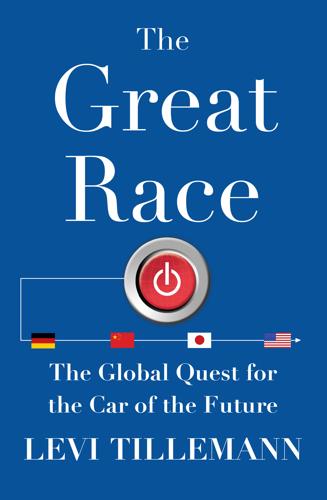
The Great Race: The Global Quest for the Car of the Future
by
Levi Tillemann
Published 20 Jan 2015
By 2016 fuel economy would surpass 35 mpg, and the 2025 standards would eventually be ratcheted up to 54.5 mpg. It was a big deal. In a White House Press release, EPA administrator Lisa P. Jackson congratulated the president on solving a “supposedly ‘unsolvable’ problem.” Congressman Ed Markey said the president had conquered “the energy and economic policy equivalent of a Rubik’s Cube.” Perhaps. But he had done so by taking a toy that had already been smashed to bits, and reassembling it—not through any particular mathematical genius or cunning. The energy team of the Obama administration had all the leverage in the world and they would have been fools not to use it. They had the chance, so they put the screws to Detroit.

Creativity, Inc.: Overcoming the Unseen Forces That Stand in the Way of True Inspiration
by
Ed Catmull
and
Amy Wallace
Published 23 Jul 2009
(Since John and I took over at Disney Animation, that studio has adopted this tradition of candor as well.) Somehow, and perhaps especially because they have less invested, a director who’s struggling with his own dilemmas can see another director’s struggles more clearly than his own. “It’s like I can put my crossword puzzle away and help you with your Rubik’s Cube a little bit,” is how he puts it. Bob Peterson, a member of the Braintrust who has helped write (and provide voices for) eleven Pixar films, uses another analogy to describe the Braintrust. He calls it “the grand eye of Sauron”—a reference to the lidless, all-seeing character in the Lord of the Rings trilogy—because when it focuses on you, there’s no avoiding its gaze.

Unfinished Business
by
Tamim Bayoumi
More generally, Professor Robert Shiller of Yale, one of the few prominent economists who recognized that the US housing market was in a massive bubble before the crisis, has been one of several financial economists to suggest that financial market bubbles can be modeled as social waves in which ideas catch fire and become self-reinforcing before eventually deflating.7 Such social eruptions can be modeled using similar tools to those used to examine epidemics, involving the probability of passing on an infection from one person to the other and a rate at which people stop being infectious, which define the height and longevity of the craze. Examples of crazes include hit records, Rubik’s Cubes, and smart phone apps. This approach provides a way of thinking about asset price bubbles and the madness of crowds in a structured manner. The increasing interest in behavioral economics provides another platform for considering how individuals deviate from pure rationality.8 Behavioral economics, which examines how individuals actually behave in various economic situations rather than how they are supposed to behave, provides many insights but remains a specialized field.

The Blind Side
by
Michael Lewis
Published 1 Jan 2006
He was beginning to wonder why the NCAA needed to know all this stuff. “Um,” said Michael, finally. “Two, I think.” “And that’s here in Memphis?” asked the lady. Michael nodded. “I’m saying,” said Sean. “It’s a book.” Not a good one. Michael’s answers were as nourishing as a bag of stale potato chips, and as vexing as a Rubik’s Cube. The lady was now officially frustrated. She’d come all the way from Indianapolis to interrogate Michael Oher, but she was getting no answers from Michael Oher, and too many from this rich white Ole Miss booster whose roof, for some reason, Michael Oher lived under. She stared intently at Michael and said, “Michael, you have to talk to me.”

Custodians of the Internet: Platforms, Content Moderation, and the Hidden Decisions That Shape Social Media
by
Tarleton Gillespie
Published 25 Jun 2018
Perhaps we are now experiencing the long hangover after the ebullient high of web 2.0, the birth of social media, and the rise of a global, commercial, advertising-supported Internet culture—the bursting of a cultural bubble, if not a financial one.8 It’s possible that we’ve simply asked too much, or expected too much, from social media. As Virginia Heffernan quipped, about Twitter, “I think we’ve asked way, way too much of a little microblogging platform that was meant to talk about where to get a beer in Austin, Texas, and now is moving mountains, and is a centerpiece of geopolitics. It’s like asking nodes of Rubik’s Cubes to manage world history.”9 Or perhaps these are growing pains. In a 2013 interview, Ken Auletta took the mounting criticism of social media as evidence that “Silicon Valley is in the equivalent of its adolescence. And, in adolescence, is suddenly a time when you become aware of things beyond yourself, become aware the world. . . .

Becoming Kim Jong Un: A Former CIA Officer's Insights Into North Korea's Enigmatic Young Dictator
by
Jung H. Pak
Published 14 Apr 2020
Kim’s calibration of provocations and diplomacy, as well as his adroit use of ambiguity and flattery, also underscore how we must be clear-eyed about his goals, while also maintaining analytic agility in our assessment of his intentions and identifying risks and opportunities in a given scenario. THE EVOLVING PUZZLE If figuring out Kim’s intentions is like completing a jigsaw puzzle, crafting a solution to the North Korea problem should be likened to solving the Rubik’s Cube. This 3-D puzzle befuddles players with seemingly endless permutations, only to frustrate them further when they see that even though they’ve solved one side, the other five are a jumble of colors. Denuclearization is a primary goal of any solution; another high priority is choking off North Korea’s ability to generate revenue for the regime and its nuclear weapons program, which has grown by leaps and bounds since he came to power—it is more diverse, more mobile, and more dangerous—and poses unacceptable threats to global security.
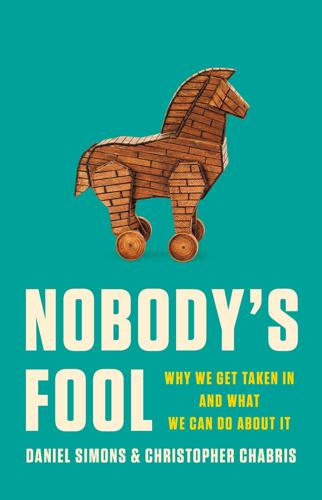
Nobody's Fool: Why We Get Taken in and What We Can Do About It
by
Daniel Simons
and
Christopher Chabris
Published 10 Jul 2023
Even if they did, Fredrickson and Losada adapted and tweaked the models in arbitrary ways to generate numerical predictions that came somewhat close to those Losada had reportedly observed in his study of executives. Fredrickson and Losada then presented the model’s output as if it were a universal law of human nature.16 Brown and colleagues describe the Fredrickson and Losada approach as analogous to “a video of a Rubik’s Cube being miraculously solved in five seconds, only for it to be revealed at the end that what was filmed was an ordered cube being scrambled, with the whole sequence then being played back in reverse.” In response to this critique, Fredrickson admitted that she had relied on Losada’s modeling and “has since come to question it.”

You've Been Played: How Corporations, Governments, and Schools Use Games to Control Us All
by
Adrian Hon
Published 14 Sep 2022
Some aspects of the game only become available if you have enough relationships with other characters, at which point you need to start worrying about their needs, too—yet more plates on poles. I played The Sims so much I began hallucinating it. This isn’t unusual—people have reported similar experiences with chess, jigsaw puzzles, Rubik’s Cube, Spacewar!, but most notably Tetris, such that the phenomenon is popularly known as the Tetris Effect, or according to Angelica Ortiz de Gortari, Game Transfer Phenomena.89 After playing Diner Dash constantly, I couldn’t sit in a restaurant without imagining how I’d bus the tables as rapidly as possible.
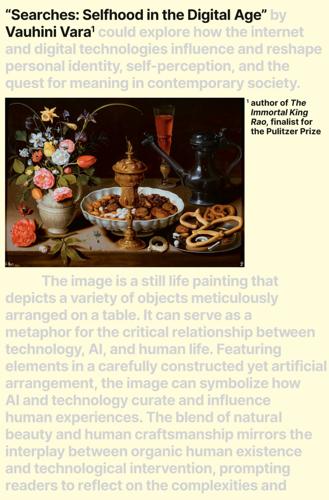
Searches: Selfhood in the Digital Age
by
Vauhini Vara
Published 8 Apr 2025
Back when I met Altman, none of that had happened yet. One day, as I sat in on a meeting between him and a couple of entrepreneurs he’d invested in, he pulled out his phone and asked them, “Want to see something cool?” The entrepreneurs leaned in, curious, as he played a video. “That’s a robot doing a one-handed Rubik’s cube solve,” he explained—a breakthrough from OpenAI. When one of the entrepreneurs asked him when AI would start replacing lots of human workers, Altman brought up what happened to horses when cars were invented. “For a while,” he said, “horses found slightly different jobs, and today there are no more jobs for horses.”

Boom: Bubbles and the End of Stagnation
by
Byrne Hobart
and
Tobias Huber
Published 29 Oct 2024
The product, it allowed, can “do just about everything a vacuum tube can do, and some unique things which a vacuum tube cannot do.” 212 This descriptor is in the running for understatement of the century. The transistor would end up operating the Apollo guidance computer, calculating pi to 31 trillion digits, and defeating the best human player at chess (1997), Rubik’s Cube (2011), and Go (2016), to say nothing of its role in changing the nature of our work and social lives. Bell Labs could be forgiven for underestimating the impact of its new gadget. Few could have predicted the multi-decade, self-fulfilling cycle its invention set in motion, in which more efficient hardware encouraged more demanding software and, in parallel, new generations of software increased the demand for better hardware.
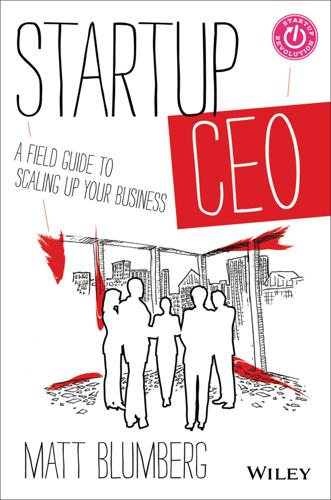
Startup CEO: A Field Guide to Scaling Up Your Business, + Website
by
Matt Blumberg
Published 13 Aug 2013
(Google must have thought so too: they recently acquired his company Quickoffice.) To open this section, I have asked him to talk about the nexus of resources and strategy. The job of a startup CEO is generally tougher than that of running a more established company. Startup CEOs face a veritable Rubik’s Cube of challenges, trying to run companies with constrained resources while operating in developing markets. This fundamental challenge is the essence of what this section attempts to define. Simply stated, how can startup CEOs align their constrained cash and human resources alongside business strategies that will inevitably change as their targeted markets evolve?
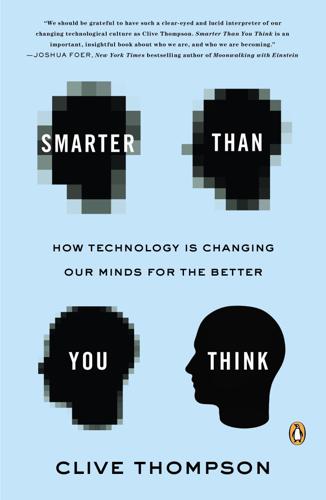
Smarter Than You Think: How Technology Is Changing Our Minds for the Better
by
Clive Thompson
Published 11 Sep 2013
It’s these kids, who have free time and no preconceptions, who will likely be the ones to domesticate 3-D printing, just as they were the first to domesticate computers, printers, Photoshop, and video-editing software. Over at sites like Shapeways or Ponoko or Thingiverse, creators post designs for everything from iPad racks to Rubik’s Cube–like puzzles. Many are “open,” which means anyone can download them, customize them, and print a copy themselves—learning gradually by remixing existing works, much as we learn to write by copying or imitating others. What literacy will 3-D printing offer? How will it help us think in new ways?

Mbs: The Rise to Power of Mohammed Bin Salman
by
Ben Hubbard
Published 10 Mar 2020
It was a royal populist appeal, made through music, movies, and pro wrestling. In 2016, MBS created the General Entertainment Authority to foster the new sector. Around the time I went to the opera, the GEA invited me to a flashy event to lay out its plans for 2018. It opened with a light show and a performance by an illusionist with a Rubik’s Cube, followed by a talk by the authority’s chairman. The GEA was going to double the number of events it oversaw to more than 4,000, he said, and was launching a new website and app to host its schedule. “It is wrong that we who love happiness go to look for it in neighboring countries,” he said.

Deep Medicine: How Artificial Intelligence Can Make Healthcare Human Again
by
Eric Topol
Published 1 Jan 2019
Having humans serve as backup for algorithmic diagnosis and recommendations for treatment represents conditional automation, and over time this Level 3 autonomy for some people with certain conditions will be achievable. If these big four AI areas (games, images, speech, cars) summarized here weren’t enough, there’s a long list of miscellaneous tasks that AI has recently been reported to do, some of which are noted in Table 4.3. Beat CAPTCHA Create new musical instruments Determine art history Solve Rubik’s cube Manage stock portfolios Write Wikipedia articles Lip read Design websites Tailor clothes Write songs Find energy materials Brain “shazam” (fMRI music) Write text Original paintings Define accents Write poetry Do the census Text to speech w/ accent Recommend fashion Distinguish fake vs. real art Autonomous stores Sort LEGO pieces Make fake videos, photos Predict purchase 1 week before person buys it Convert text to art Artificial comedy Create slow mode video by imputing frames Draw Check NDAs Pick ripe fruit Count and identify wild animals Put together IKEA furniture Create movie trailers Sense human posture through walls Debate Predict earthquake aftershocks TABLE 4.3: Miscellaneous tasks that AI has been reported to achieve in recent years.
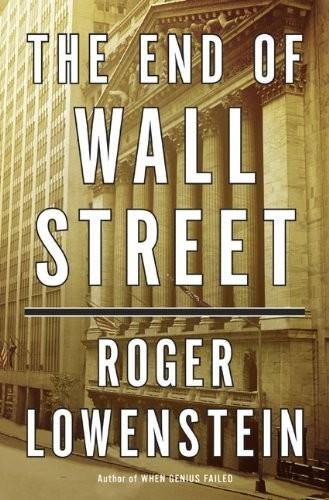
The End of Wall Street
by
Roger Lowenstein
Published 15 Jan 2010
ak The Wall Street Journal sharply opined, “The Treasury Secretary has set a terrible precedent, leaving subordinate debt holders at other large financial institutions to calculate that they too will receive a government bailout if they stumble.” al A graphic depiction of AIG’s corporate structure resembled a financial Rubik’s Cube, with names of subsidiaries stretching thirteen columns across and extending twenty-five rows down. am Dimon, like Thain, had been involved in LTCM, but they were not yet CEOs. an Diamond likened this to a “reverse Spinco.” Instead of spinning off Lehman’s bad assets, as the Lehman bankers had proposed, Barclays would acquire the good assets, leaving a rump collection of toxic loans for the banks.
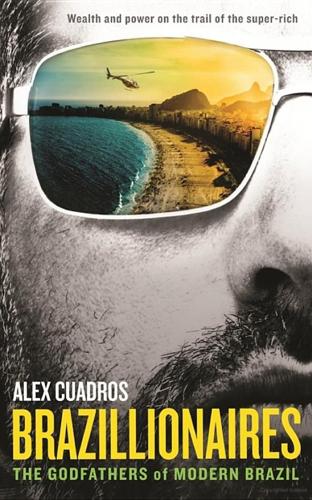
Brazillionaires: The Godfathers of Modern Brazil
by
Alex Cuadros
Published 1 Jun 2016
The first brand belonged to Walter Faria, the second to the Schincariol brothers—some of the first hidden billionaires I uncovered. It wasn’t long before billionaires started showing up in my dreams. Eventually I looked beyond consumer brands. In a downtown subway station, a plaque announced the contractor who had laid the subway line: Camargo Corrêa. In Rio I’d seen a building that resembles grayscale Rubik’s cubes arranged in Jenga stacks midplay. It’s the headquarters of Petrobras, the state oil company, but it was built by a private company known as Odebrecht. Camargo and Odebrecht both were family-owned—and huge, raking in many billions of dollars in revenues each year. I realized I was looking at two of Brazil’s richest families.
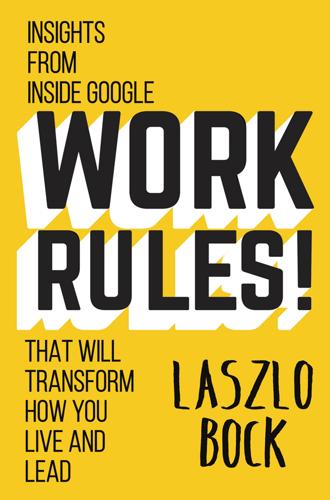
Work Rules!: Insights From Inside Google That Will Transform How You Live and Lead
by
Laszlo Bock
Published 31 Mar 2015
These Googlers came from every kind of educational background, including many of the best schools on the planet; had invented seminal products and technologies like JavaScript, BigTable, and MapReduce; had been part of some of the most revolutionary companies; and included Olympic athletes, Turing Award and Academy Award winners, Cirque du Soleil performers, cup stackers, Rubik’s Cube champions, magicians, triathletes, volunteers, veterans, and people who had accomplished just about any cool thing you could think of. Invariably, the candidate would ask if Jonathan had cherry-picked the resumes. And he would honestly tell them that it was a random sample of the people who build Google’s products.
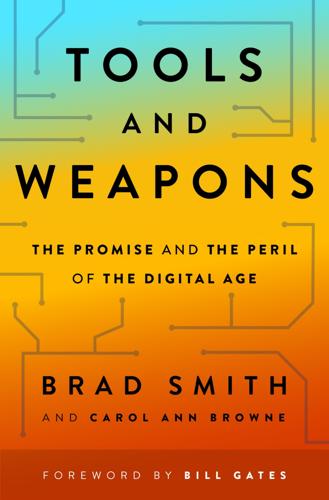
Tools and Weapons: The Promise and the Peril of the Digital Age
by
Brad Smith
and
Carol Ann Browne
Published 9 Sep 2019
Finally, as technology accelerates growth in key urban centers, these regions need to manage the challenges this growth is creating, not just for individual institutions, but for the entire community. In each of these areas, tech companies are dependent on support from a community and often even a nation. And in each area, tech companies have an opportunity and a responsibility to do more themselves. It’s a formidable challenge, much like a Rubik’s Cube puzzle that can only be solved by moving many pieces at the same time. How can we best advance the people side of technology? For us, a good learning opportunity arose when we dropped by the company’s annual science fair for software developers in 2018. The Microsoft Conference Center had been transformed into our annual TechFest, put on by Microsoft Research, or MSR, as everyone calls it.
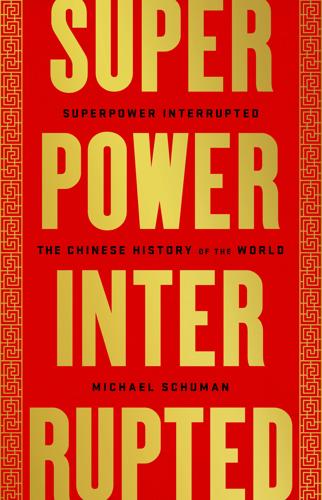
Superpower Interrupted: The Chinese History of the World
by
Michael Schuman
Published 8 Jun 2020
If Heaven granted the Mandate to rule based on de, or virtue, and the Chinese possessed superior de, then how exactly could the Mongol conquest of China be explained? It was a thorny question that many writers of the Yuan and early Ming period left unanswered. The official history of the Yuan just recorded the dynasty’s events, without the usual commentary. The Mongol period simply didn’t compute. The Ming solution to this ideological Rubik’s Cube was to pick up where the Song Dynasty left off. The Yuan may have been a real dynasty, but it was a deviation from the long-standing norm, and the Ming were setting the course of the Chinese history of the world back on track. “Since ancient times the emperors had been ruling all-under-Heaven with the Middle Kingdom in the inner realm to control the barbarians and the barbarians in the outer world to serve the Middle Kingdom,” Zhu broadcast to the people of north China during his rebellion against the Yuan in a 1367 proclamation.

Microtrends: The Small Forces Behind Tomorrow's Big Changes
by
Mark Penn
and
E. Kinney Zalesne
Published 5 Sep 2007
In the James Bond movies—beyond the women and the fight scenes—one of the highlights of nearly every film is Bond’s visit to the labs of Agent Q, who shows off the latest technological inventions that (lo and behold) come in perfectly handy later on. And of course, Quincy got all this forensic frenzy started back in the 1970s. And, to be fair, to whatever degree modern generations of kids have grown up on Barbies and fire trucks, they have also grown up on chemistry sets, Operation, Slinkys, and Rubik’s Cube. But without a doubt, in the past fifteen years, science has gotten a big boost. Educators from Carl Sagan to Bill Nye the Science Guy to even Al Gore have done significant work to bring complex science to America in terms and pictures that everyone can understand. And in movies like 1997’s Good Will Hunting and 2001’s A Beautiful Mind, we learned to find math and science geniuses wildly compelling.
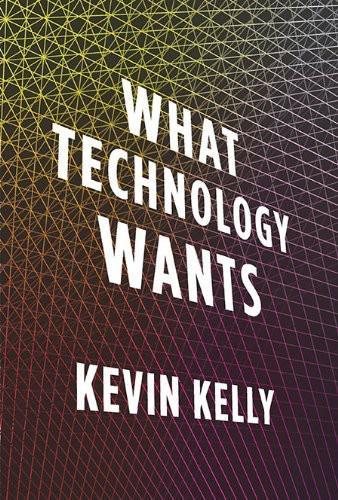
What Technology Wants
by
Kevin Kelly
Published 14 Jul 2010
In my own experience this principle has never failed: In any game, increase your options. There are two kinds of games in the universe: finite games and infinite games. A finite game is played to win. Card games, poker rounds, games of chance, bets, sports such as football, board games such as Monopoly, races, marathons, puzzles, Tetris, Rubik’s Cube, Scrabble, sudoku, online games such as World of Warcraft, and Halo—all are finite games. The game ends when someone wins. An infinite game, on the other hand, is played to keep the game going. It does not terminate because there is no winner. Finite games require rules that remain constant.
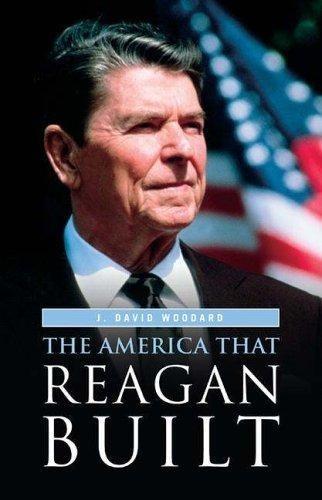
The America That Reagan Built
by
J. David Woodard
Published 15 Mar 2006
The reaction was nationwide, with the recent product called ‘‘furniture polish’’ and ‘‘sewer water.’’ Within weeks ‘‘Coke Classic’’ returned to the market, and the company stock jumped 36 percent. Only in America could a marketing disaster turn into company profit. For entertainment, Americans fooled with Rubik’s Cube, a plastic square with its surface subdivided so that each face consisted of nine squares. Rotation of each face allowed the smaller cubes to be arranged in different ways. The challenge, undertaken by millions of addicts, was to return the cube from any given state to its original array with each face consisting of nine squares of the same color.

The Billionaire Raj: A Journey Through India's New Gilded Age
by
James Crabtree
Published 2 Jul 2018
Reliance had laid hundreds of thousands of kilometers of fiber optic cables across India, one told me, as well as erecting ninety thousand new mobile phone towers. I was shown a desk in an open-plan area at which Ambani himself was said to sit, although it showed no sign of having actually been used. His elder son, Akash, had one nearby with a more lived-in feel: a Rubik’s cube sat discarded next to a framed photo of the Ambani family, while a pink poster of Andy Warhol was tacked to the desk’s backboard. The poster’s slogan read “The idea of waiting for something makes it more exciting,” which I took to be a tongue-in-cheek reference to Jio itself, given its launch had been delayed for the best part of five years.

Like, Comment, Subscribe: Inside YouTube's Chaotic Rise to World Domination
by
Mark Bergen
Published 5 Sep 2022
YouTube sent payments and 1099 forms, but left YouTubers to sort out the taxes on their own. In 2010, Johnson met one of YouTube’s earliest dedicated moneymen, David Sievers, a twenty-two-year-old Nebraskan training to be an accountant. Sievers handled taxes for a friend in Nebraska, Dan Brown, who had achieved sudden YouTube fame filming his skills solving Rubik’s Cubes. YouTube fame was a small world, and Sievers quickly added more marquee YouTuber clients, including the mad scientist Johnson. Later that year Johnson and his new taxman traveled together to Los Angeles to pitch a web series. Sievers, who had grown up thumping a Bible, had never been to the city; Johnson bought him his first margarita there.

Wonder Boy: Tony Hsieh, Zappos, and the Myth of Happiness in Silicon Valley
by
Angel Au-Yeung
and
David Jeans
Published 25 Apr 2023
He saw an option to apply with a video cover letter—so he got to work, creating a catchy beat that spelled out Zappos’s ten core cultural values. To perform the song in the video, he cloned himself seven times, creating a full band of Tylers with mohawks. Five versions of him played instruments, from the drums to maracas, while the other two fiddled with a Rubik’s cube and snapped to the rhythm. The Tyler with the guitar crooned: It’s a family that loves to play. It’s a place that I’d like to go someday. Throw all my insecurities away and be honest in the things I’d say. You can be a little weird if you’re humble. Grow and learn while having fun. Creating open-minded sense of adventure.

Killing Thatcher: The IRA, the Manhunt and the Long War on the Crown
by
Rory Carroll
Published 15 Mar 2023
The conversations were exploratory, speculative, and secret. Adams did not even tell the Army Council. All of which—were he included in the meeting about Lochinvar—begged the question: To murder, or not to murder, Margaret Thatcher? A bomb in Brighton might bury not just the prime minister but any chance of negotiations. Alternatively, in the Rubik’s Cube of possibilities, might her successor, after requisite acts of vengeance, prove more flexible? The Americans, after all, had pulled their marines from peacekeeping duties in Lebanon after bombers killed 241 US service personnel in October 1983. Adams alone would have had both a rationale and the authority to veto the plot.

Rationality: From AI to Zombies
by
Eliezer Yudkowsky
Published 11 Mar 2015
I knew that he competed at the national level in mathematical and computing olympiads, which sufficed to attract my attention for a closer look; but I didn’t know yet if he could learn to think about AI. I had asked Marcello to say how he thought an AI might discover how to solve a Rubik’s Cube. Not in a preprogrammed way, which is trivial, but rather how the AI itself might figure out the laws of the Rubik universe and reason out how to exploit them. How would an AI invent for itself the concept of an “operator,” or “macro,” which is the key to solving the Rubik’s Cube? At some point in this discussion, Marcello said: “Well, I think the AI needs complexity to do X, and complexity to do Y—” And I said, “Don’t say ‘complexity.’”
…
Outside their own professions, people often commit the misstep of trying to broaden a word as widely as possible, to cover as much territory as possible. Is it not more glorious, more wise, more impressive, to talk about all the apples in the world? How much loftier it must be to explain human thought in general, without being distracted by smaller questions, such as how humans invent techniques for solving a Rubik’s Cube. Indeed, it scarcely seems necessary to consider specific questions at all; isn’t a general theory a worthy enough accomplishment on its own? It is the way of the curious to lift up one pebble from among a million pebbles on the shore, and see something new about it, something interesting, something different.
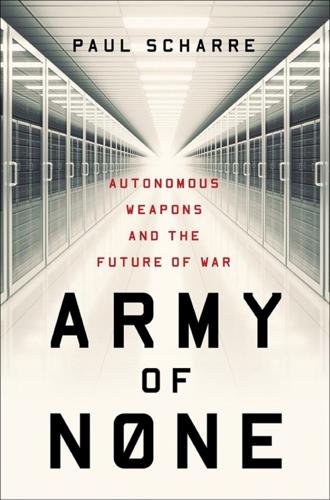
Army of None: Autonomous Weapons and the Future of War
by
Paul Scharre
Published 23 Apr 2018
When I visited, two dozen students sat at workbenches hunched over circuit boards or silently tapping away at computers. Behind them on the edges of the workshop lay discarded pieces of robots, like archeological relics of students’ projects from semesters prior. On a shelf sat “Roby Feliks,” the Rubik’s Cube solving robot. Nearby, a Raspberry Pi processor sat atop a plastic musical recorder, wires running from the circuit board to the instrument like some musical cyborg. Somewhat randomly in the center of the floor sat a half-disassembled robot, the remnants of TJ’s admission to the FIRST competition that year.

Coders: The Making of a New Tribe and the Remaking of the World
by
Clive Thompson
Published 26 Mar 2019
Cohen was one of the coder-iest coders I’d ever met. He wore his hair in a shoulder-length mop, sported a half shave, and loped about the house in a gray shirt with a dragon design. His work area was a room on the first floor, and behind his desk was an enormous plastic bin filled with dozens of Rubik’s Cube–style “twisty puzzles”; he twiddled them with twitchy intensity, solving them and rescrambling as he pondered how to make BitTorrent run incrementally faster. Cohen was, I discovered, obsessive about puzzles and games. He was designing his own twisting 3-D puzzles, one of which was going to be produced soon for sale.

Spies, Lies, and Algorithms: The History and Future of American Intelligence
by
Amy B. Zegart
Published 6 Nov 2021
Other defensive counterintelligence measures aren’t so visible. In his 2008 book, The Shadow Factory, James Bamford recounts some of the counterintelligence measures built into National Security Agency headquarters. It sounds fictional but it’s all real: Modern and boxy, it has a shiny black-glass exterior that makes it look like a giant Rubik’s Cube. But hidden beneath the dark reflective finish is the real building, a skinlike cocoon of thick, orange-colored copper shielding to keep all signals—or any other type of electromagnetic radiation—from ever getting out. Known by the code name Tempest, this protective technique … was designed to prevent electronic spies from capturing any escaping emissions.… [The windows of the director’s office] contained hair-thin copper wires to seal in even the faintest electronic whisper.

The Information: A History, a Theory, a Flood
by
James Gleick
Published 1 Mar 2011
She had rapidly mastered trigonometry and integral and differential calculus, and he told her mother privately that if he had encountered “such power” in a Cambridge student he would have anticipated “an original mathematical investigator, perhaps of first rate eminence.”♦ She was fearless about drilling down to first principles. Where she felt difficulties, real difficulties lay. One winter she grew obsessed with a fashionable puzzle known as Solitaire, the Rubik’s Cube of its day. Thirty-two pegs were arranged on a board with thirty-three holes, and the rules were simple: Any peg may jump over another immediately adjacent, and the peg jumped over is removed, until no more jumps are possible. The object is to finish with only one peg remaining. “People may try thousands of times, and not succeed in this,” she wrote Babbage excitedly.

A Generation of Sociopaths: How the Baby Boomers Betrayed America
by
Bruce Cannon Gibney
Published 7 Mar 2017
The 1962 World’s Fair, centered on the new Space Needle, contained various wonders like cars (both emissionless and flying) and featured three fairgrounds for science and industry, against just one each for art and entertainment, a proportion inverted and then abolished by the Boomers. Futurama II in 1964 was the last of the science Fairs. By 1982, the best on offer was Knoxville’s Suntower (339 feet shorter than the Space Needle) and a mechanized Rubik’s cube (itself a Hungarian, not American, invention). The Space Shuttle made a desultory appearance at the 1984 Fair, but enthusiasm for this sort of display can be inferred from the fact that there has not been an American Fair since.* In an age of endless sequels, Futurama II alone begat no grandchildren.

Deep Utopia: Life and Meaning in a Solved World
by
Nick Bostrom
Published 26 Mar 2024
You have a homework question on the handout. See you tomorrow! Assignments and assignations Kelvin: I need to get ready for the funeral. See you later. Firafix: See you. Tessius: What is the assignment? Firafix [reads]: HANDOUT 16 HOMEWORK QUESTION Consider the following three items: A rattle A rubik’s cube A radio telescope Which is most interesting? Discuss. Firafix: I can think about that while I’m getting my nails done. Tessius: I can think about that while I’m on my date. Firafix: Oh, you’re going on a date? Tessius: Yes, but as pertains to the cerebral forms of titillation, my expectations are of a humble order.
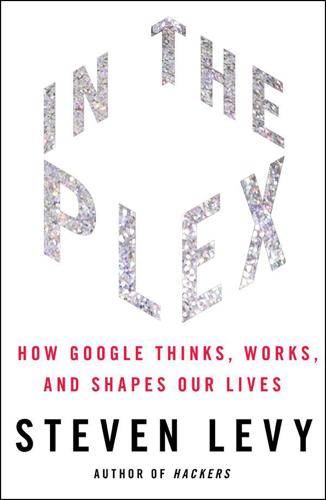
In the Plex: How Google Thinks, Works, and Shapes Our Lives
by
Steven Levy
Published 12 Apr 2011
But Ivester’s experience showed that Google could accommodate exceptions to its standards. Just as in the case of elite institutions, the stray C or a non-Mensa SAT score could be trumped by an accomplishment that indicated that one was special. “It’s like they did some crazy skiing thing or could do the Rubik’s cube better than anybody,” says early employee Megan Smith. Stacy Sullivan could recall having trouble hiring someone in international sales—until she noted that his résumé cited a foosball championship in Italy. “That’s pretty good,” said Sergey. “We can hire him.” If the guy worked that hard at something, the logic went, he’d probably be pretty good at selling ads.

Aerotropolis
by
John D. Kasarda
and
Greg Lindsay
Published 2 Jan 2009
The price tag is staggering and the benefits modest—the biggest dig in American history will increase capacity by only 20 percent. While that’s enough to retake the title and reduce delays, the cost-effectiveness of the endeavor seems a bit skewed. Much of the time, energy, and money will be spent on the contortions necessary to solve the airport’s layout like a Rubik’s Cube. The taxpayers won’t foot the bill—not the local ones, anyway. Daley vowed to pay for it all with a mixture of bonds, fees, federal funds, and checks from the airlines, which were crying poverty even before $150 oil and the recession. With the first $3 billion in hand, work began on the runways in summer 2007, nearly a year behind schedule and already a billion dollars over budget.

Cooking for Geeks
by
Jeff Potter
Published 2 Aug 2010
So when you get stuck on one of these problems even though you’re working in a wider circle, how do you go about getting unstuck? That’s an interesting question. Let me deviate from that slightly and then I’ll come back. Most people are familiar with the scientific method, which is holding everything exactly the same and changing this one thing. This reminds me of people trying to do one side of the Rubik’s Cube. Most of the good methods don’t involve getting any side. That’s the last thing you do. So people get stuck because they don’t want to toss in the towel on the progress they think they’ve made so far. So if you want to make it past one level, you may have to scrap your whole methodology and just start over.
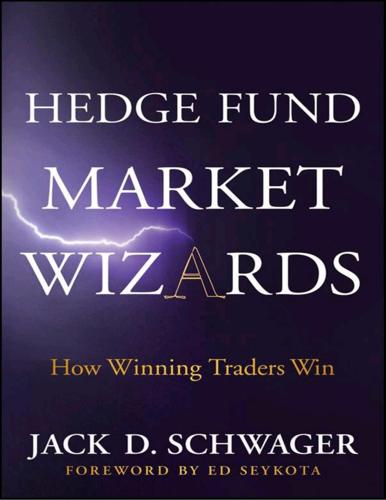
Hedge Fund Market Wizards
by
Jack D. Schwager
Published 24 Apr 2012
When discussing trading strategies, Platt speaks at a speed that is somewhere between a rushed New Yorker and the fast-talking executive in the famous Fed Ex commercial. When the topic of conversation is a four-legged fixed income trade, keeping up with Platt can be a challenge. How did you get interested in markets? I have always liked puzzles. When I was 10 years old, my dad gave me a Rubik’s cube, and 36 hours later, I could do it from any position in under one minute. I always regarded financial markets as the ultimate puzzle because everyone is trying to solve it, and infinite wealth lies at the end of solving it. When you are solving any puzzle, you have to start off from the perspective “What do I know for sure?”
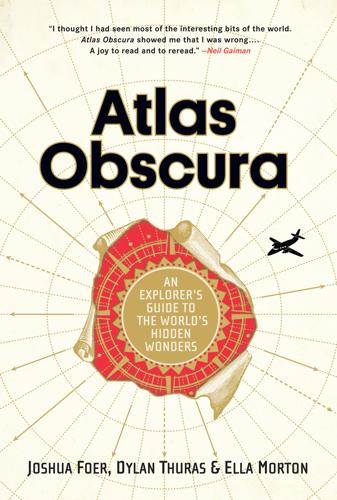
Atlas Obscura: An Explorer's Guide to the World's Hidden Wonders
by
Joshua Foer
,
Dylan Thuras
and
Ella Morton
Published 19 Sep 2016
In 2006, he donated over 30,000 of the puzzles to the Lilly Library at Indiana University to create the Slocum Mechanical Puzzle Collection. In addition to the staggering number of puzzles, Slocum also donated thousands of books about puzzles. Among the pieces on display (only a few hundred out of the thousands in the collection) are an archaic Rubik’s Cube with differing sizes of nails on each side, called a “texture cube”; a trick cup that seems normal until its drinker fills it too full and it drains away into the base; and more whimsical amusements like a Coke bottle with a wooden arrow through it. There are also countless intricate wooden geometrical curiosities that must be twisted and shifted together and apart.
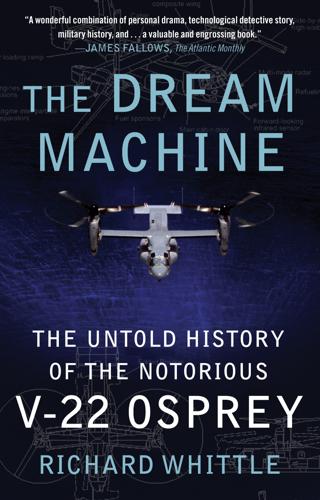
The Dream Machine: The Untold History of the Notorious V-22 Osprey
by
Richard Whittle
Published 26 Apr 2010
They were churning through a navigator’s nightmare of darkness and dust above Islamic revolutionary Ayatollah Khomeini’s Iran. They were also flying under radio silence, and at gut-wrenchingly low altitudes to avoid radar detection. The Sea Stallions were a crucial element in Operation Eagle Claw, an audacious secret mission of Rubik’s Cube complexity. The mission’s goal was to rescue fifty-three Americans held hostage in Iran over the previous five and a half months, since Islamic radicals had seized the 27-acre U.S. Embassy compound in Tehran on November 4, 1979. Without helicopters, Eagle Claw’s planners had decided, there was no good way to get the 118 Delta Force commandos and other troops chosen for the mission close enough to the Iranian capital to infiltrate the city of five million, rush the embassy, overpower the estimated 200 guards, and free the hostages.

Blueprint: The Evolutionary Origins of a Good Society
by
Nicholas A. Christakis
Published 26 Mar 2019
Our species’ capacity for culture, based on teaching and learning, is a key part of the social suite even if the specific components of culture—so variable, as we saw in chapter 1—are not. Sustaining complex cultural knowledge requires a large and interconnected set of thinkers and innovators. Our blueprint is the foundation of cultural evolution. Human society is like a Rubik’s Cube that is bound together and obeys a few particular principles but that is nevertheless configurable into 43,252,003,274,489,856,000 combinations. Genes and Culture Coevolve Having established that humans are, genetically speaking, uncommonly capable of culture compared with other animals and that culture itself can vary across time and place, in part due to processes akin to evolution, let’s now consider how genetic and cultural inheritance might interact.
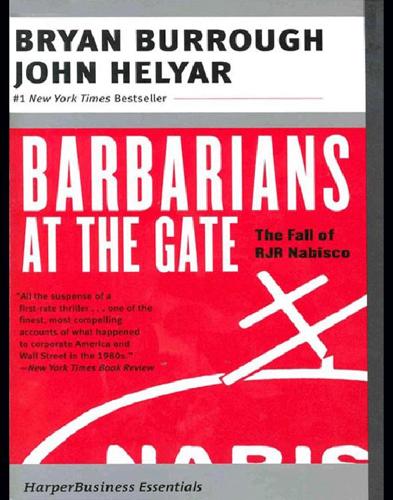
Barbarians at the Gate: The Fall of RJR Nabisco
by
Bryan Burrough
and
John Helyar
Published 1 Jan 1990
“Jerry was older, and he never wanted to work as hard,” Roberts recalled. “The reason Jerry was so negative was that he wasn’t reading and understanding what was going on.” As the firm grew—by 1983, it had eight deal makers, by 1988, fifteen—tensions rose. Factions developed. Junk bonds produced an ever more complicated stream of Rubik’s Cube financial structures. Kravis and Roberts were so busy Kohlberg could no longer keep abreast of every deal. Outside parties began shouldering more and more of the daily work, and Kravis and Roberts soon were orchestrating small armies of investment bankers and lawyers. “Jerry began to pull back,” says his longtime friend George Peck, a Kohlberg Kravis consultant.

The Innovators: How a Group of Inventors, Hackers, Geniuses and Geeks Created the Digital Revolution
by
Walter Isaacson
Published 6 Oct 2014
“I need help.” He was in bad shape. “Bill stayed depressed for weeks,” Allen recalled.35 They brought cots to campus and, like old times, spent many nights in the computer room that summer of 1972, communing with a PDP-10. With his rigorous mind, Gates was able to take the problem posed by the Rubik’s Cube of class-scheduling variables and break it into a series of small component problems that could be solved sequentially. He was also able to put himself into a history class with all the right girls and only one other boy (“a real wimp”) and make sure that he and his senior class friends had Tuesday afternoons free.

Elon Musk
by
Walter Isaacson
Published 11 Sep 2023
The musketeers’ first mission, which was both audacious and somewhat awkward because they were still in their twenties, was to forman analysis unit that would assess the code-writing skills, productivity, and even the attitudes of more than two thousand Twitter engineers and decide which of them, if any, should survive. Code graders James and Andrew sat with their laptops at a small round table in the open space near the second-floor conference room that Musk had commandeered as his battlefield camp. X was nearby on the floor playing with four large Rubik’s cubes. (No, he could not actually solve the puzzle yet. He was only two and a half.) It was Thursday, October 27, the day Musk was rushing toward the surprise flash-close of his takeover, but he found an hour to break away from his meetings to discuss with his cousins how to cull Twitter’s engineering ranks.
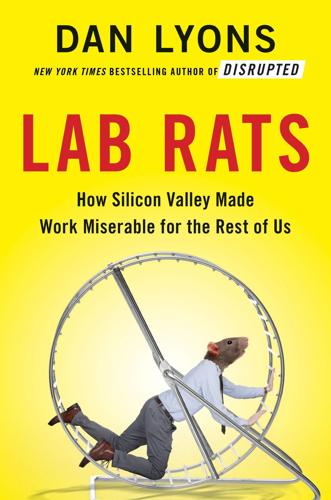
Lab Rats: How Silicon Valley Made Work Miserable for the Rest of Us
by
Dan Lyons
Published 22 Oct 2018
The image that pops into my head is a squeaky yellow bathtub duck, like the chubby rubber ducky that Ernie sings about on Sesame Street. Somehow I must combine these six rectangular Lego blocks into something that resembles a rubber ducky. The head part is obvious. But what about the others? The two red pieces are flat slabs with six knobs. Does one sit on top of the duck’s head, like a hat? I hate things like this—Rubik’s Cubes, Sudoku puzzles. I hate them because I suck at them, and I never know the trick to solving the puzzle, so I just sit there flailing away. Or I just surrender and sit there staring at the cube, with the same look on my face that my cat has when he looks at the TV, wondering how those little birds got inside the box.

Genius: The Life and Science of Richard Feynman
by
James Gleick
Published 1 Jan 1992
The Eightfold Way was a new periodic table—the previous century’s triumph in classifying and thus exposing the hidden regularities in a similar number of disparate “elements.” But it was also a more dynamic object. The operations of group theory were like special shuffles of a deck of cards or the twists of a Rubik’s cube. Much of SU(3)’s power came from the way it embodied a concept increasingly central to the high-energy theorist’s way of working: the concept of inexact symmetry, almost symmetry, near symmetry, or—the term that won out—broken symmetry. The particle world was full of near misses in its symmetries, a dangerous problem, since it seemed to permit an ad hoc escape route whenever an expected relationship failed to match.

The Art of Scalability: Scalable Web Architecture, Processes, and Organizations for the Modern Enterprise
by
Martin L. Abbott
and
Michael T. Fisher
Published 1 Dec 2009
The cube on its own serves as a way to think about the whys of scale and helps create a bridge to the hows. The cube also serves to facilitate a common language for discussing different strategies, just as physics and math serve as the underlying languages for engineering discussions. Introducing the AKF Scale Cube Imagine first, if you will, a Rubik’s cube or classic colored children’s building block. Hold this imaginary block directly in from of you, or stare down directly at it so that you can only see a single face of the six faces. At this point, the cube is nothing more than a two-dimensional square, similar to the square seen in Figure 22.1.
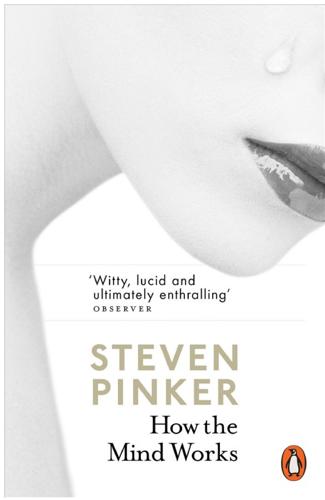
How the Mind Works
by
Steven Pinker
Published 1 Jan 1997
We can add that nothing in culture makes sense except in the light of psychology. Evolution created psychology, and that is how it explains culture. The most important relic of early humans is the modern mind. 4 THE MIND’S EYE To gaze is to think. —SALVADOR DALI Past decades had hula hoops, black-light posters, CB radios, and Rubik’s cube. The craze of the 1990s is the autostereogram, also called Magic Eye, Deep Vision, and Superstereogram. These are the computer-generated squiggles that when viewed with crossed eyes or a distant gaze spring into a vivid illusion of three-dimensional, razor-edged objects majestically suspended in space.

Central Europe Travel Guide
by
Lonely Planet
It will take you through the Rheinschlucht (Rhine Gorge), somewhat optimistically dubbed Switzerland’s Grand Canyon, but impressive enough for all that. Swissraft ( 081 911 52 50; www.swissraft.ch) offers half-/full-day rafting for Sfr109/160. Sleeping & Eating Sleep? Dream on. Riders Palace HOTEL $ $ ( 081 927 97 00; www.riderspalace.ch; Laax Murschetg; dm Sfr30-60, d Sfr180-280) It may resemble an oversized Rubik’s cube, but Riders Palace is a curious slice of designer cool with bare concrete walls and fluorescent lighting. Choose between basic five-bed dorms, slick rooms with Philippe Starck tubs or hi-tech suites complete with PlayStation and Dolby surround. Find it 200m from the Laax lifts. La Vacca SWISS $$$ ( 081 927 99 62; Plaun Station, Laax-Murschetg lifts; mains Sfr40-70; late Dec–mid-Apr) Experience the raw funk of La Vacca, a tipi where cowhide-draped chairs surround a roaring open fire.
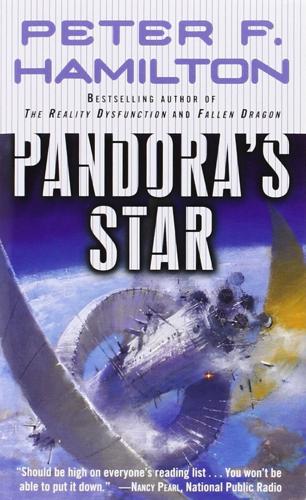
Pandora's Star
by
Peter F. Hamilton
Published 2 Mar 2004
The system was standard across the Commonwealth, giving everyone who could afford an OCtattoo direct connection to the planetary cybersphere. He guessed that most of the businesspeople having breakfast around him were quietly interfacing with their office arrays. They had that daydreaming look about them. He pulled the appropriate key out of its store in his wrist array, represented by a Rubik’s Cube icon, which he had to twist until he’d arranged the surface squares into the correct pattern. The cube opened up, and he dropped the message icon inside. A single line of black text slid across his virtual vision: PAULA MYO IS ON VELAINES. Adam just managed to hold on to his coffee cup. “Shit!”
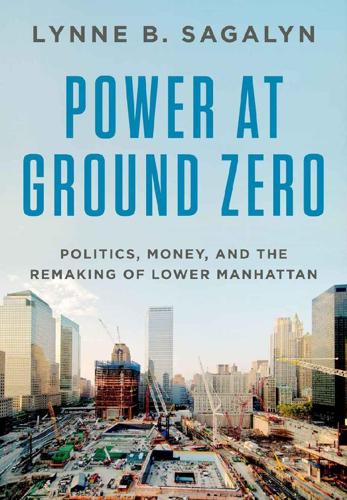
Power at Ground Zero: Politics, Money, and the Remaking of Lower Manhattan
by
Lynne B. Sagalyn
Published 8 Sep 2016
Richardson, executive director of the General Contractors Association. “The engineers were telling us we would be below ground for two to three years and that the public perception would be negative,” Coscia recalled when we spoke; “people would not know that we’re working and spending hundreds of millions of dollars. The site was a Rubik’s cube for years.” Several insiders tried to persuade Governor Pataki to let the agency shut down the No. 1 subway, but the governor was adamant about keeping it running, despite the cost of underpinning the subway to make continuous service possible. Temporarily taking the line out of service would have “cut an important transit link and angered commuters from Staten Island, a Republican stronghold, who use the No. 1 line after getting off the ferry,” David W.
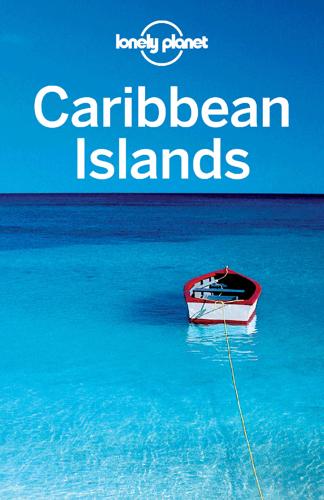
Caribbean Islands
by
Lonely Planet
Buses can get crowded. As more and more people get on, children move onto their parents’ laps, kids share seats, people squeeze together and everyone generally accepts the cramped conditions with good humor. Whenever someone gets off the back of a crowded minivan, it takes on the element of a human Rubik’s Cube, with seats folding up and everyone shuffling; on some buses there’s actually a conductor to direct the seating. For specific details on buses by island, see the chapter Getting Around sections. Car & Motorcycle Driving in the Caribbean islands can rock your world, rattle your brains and fray your nerves.
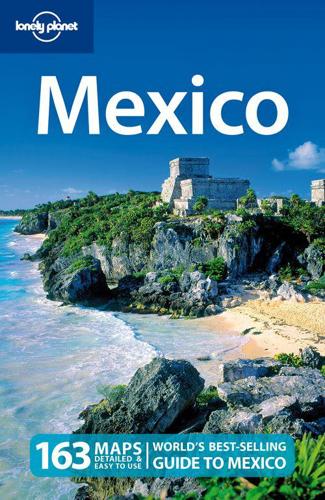
Lonely Planet Mexico
by
John Noble
,
Kate Armstrong
,
Greg Benchwick
,
Nate Cavalieri
,
Gregor Clark
,
John Hecht
,
Beth Kohn
,
Emily Matchar
,
Freda Moon
and
Ellee Thalheimer
Published 2 Jan 1992
Crowds throng here on weekends to party at this open-air space dappled by disco balls. Clásico ( 602-61-14; Blvd Las Fuentes; 10:30pm-3am Thu-Sat) With a nod to the genteel decór of an English country house, this dance club has upholstered walls and tiers of smart banquettes that rise around a dance floor that pulses like a two dimensional Rubik’s Cube on acid. The ‘classic’ music shuffle includes techno, disco and tunes from the ’80s and ’90s. It’s next door to the Borakay bar and the Hotel Camino Real, though not reachable via the hotel. Go by car or taxi. Shopping Instituto Marca Chiapas ( 602-65-65; Blvd Belisario Domínguez 2035; 9am-8pm Mon-Sat, 10am-2pm Sun) The Chiapas state crafts shop, 2km west of Plaza Cívica, sells a great range of the state’s artesanías (handicrafts), from Amatenango ‘tigers’ and funky Cintalapa ceramic suns to colorful highland textiles.

Lonely Planet China (Travel Guide)
by
Lonely Planet
and
Shawn Low
Published 1 Apr 2015
Shanghai Science & Technology MuseumMUSEUM (Shanghai Kejiguan GOOGLE MAP ; %6862 2000; www.sstm.org.cn; 2000 Century Ave; adult/student/child under 1.3m ¥60/45/free; h9am-5.15pm Tue-Sun, last tickets 4.30pm; mScience & Technology Museum) You need to do a huge amount of walking to get about this seriously spaced-out museum but there are some fascinating exhibits, from relentless Rubik’s-cube-solving robots to mechanical archers. There's even the chance to take penalty kicks against a computerised goalkeeper. Riverside PromenadeWATERFRONT (Binjiang Dadao MAP GOOGLE MAP ; h6.30am-11pm; mLujiazui) Hands down the best stroll in Pudong. The sections of promenade alongside Riverside Ave on the eastern bank of the Huangpu River offer splendid views to the Bund across the way.